May 5
Up early. Very good breakfast at 6:30 with Eduardo. The first place we stayed had probably twenty or so people. Here there are fewer. Two, actually. Us.
Set off walking around right near the breakfast place and there is an absolutely incredible array of birds, toucans, parrots, macaws, cuckoos. One could spend the day here watching and photographing. We tear ourselves away and begin walking, seeing many more birds. Eduardo is excellent at finding, identifying and pointing out birds to us. We weather the rush hour traffic, Eduardo’s cousin driving an American and Canadian around. They’ve lived for three years in Salvador, working for Ford, and will be moving out soon; from their body language, happily.
By 8:30, we’ve been out for an hour and a half, and it’s hot already. We get back to the lodge and have a welcome cold drink and a short sit. We take off in the truck for another hour and a quarter, spotting more birds, the return to the lodge, where we have another cool drink and we return to our room, where Carol goes outside for more birding, and I download photos. Several of them are quite presentable, sharp, but many of them are off slightly in focus due to difficulty caused by distance, handholding a long lens and faulty technique. Here’s some from the morning take, including one of Carol and Eduardo, and one of two Pantanal horses, who wade in water and eat grass in the water (I think you’ll be able to identify which are which).
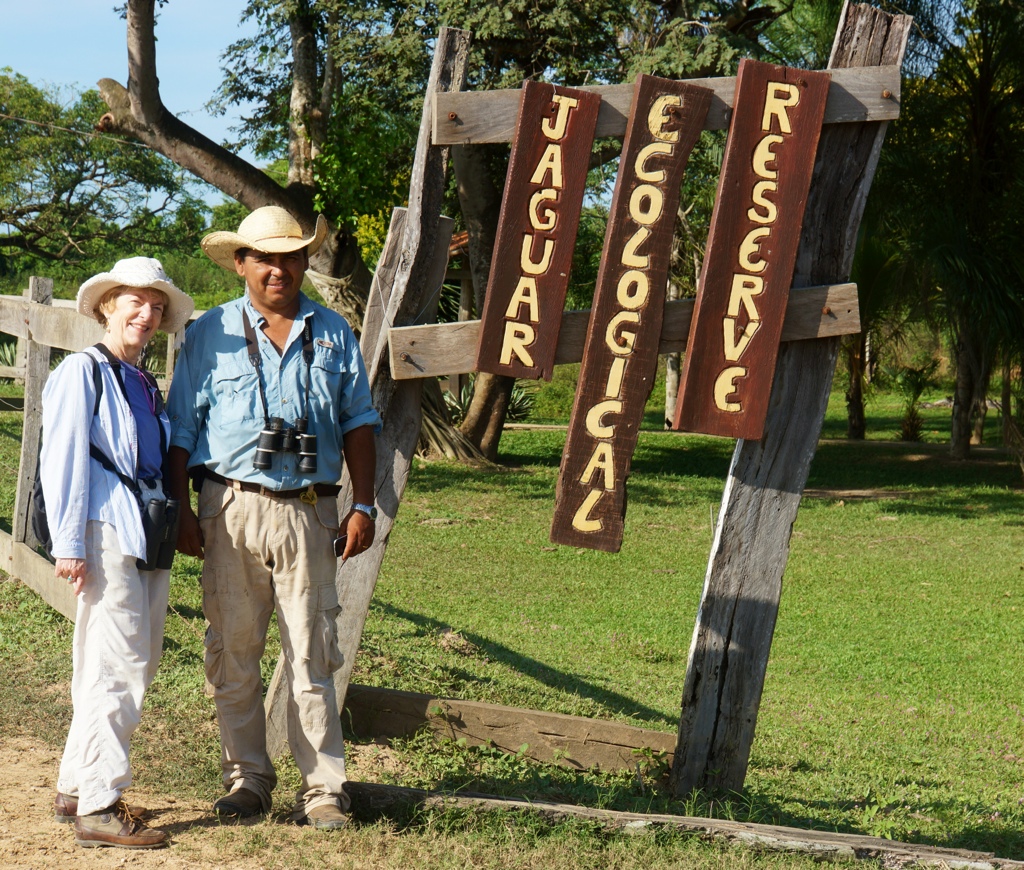
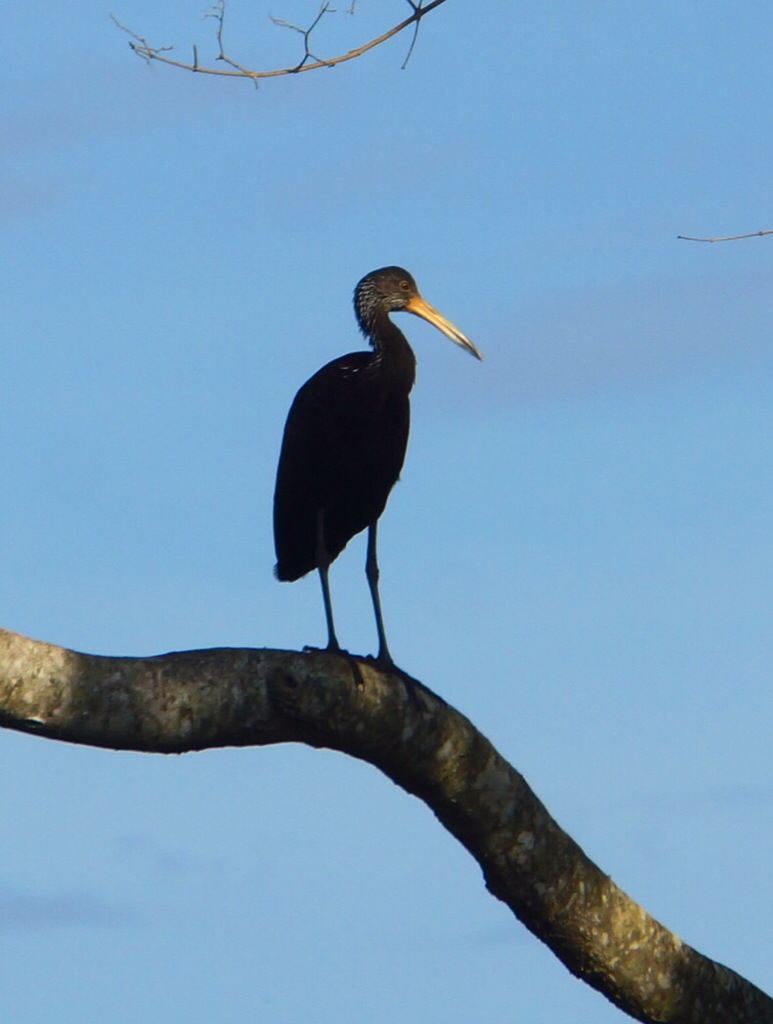
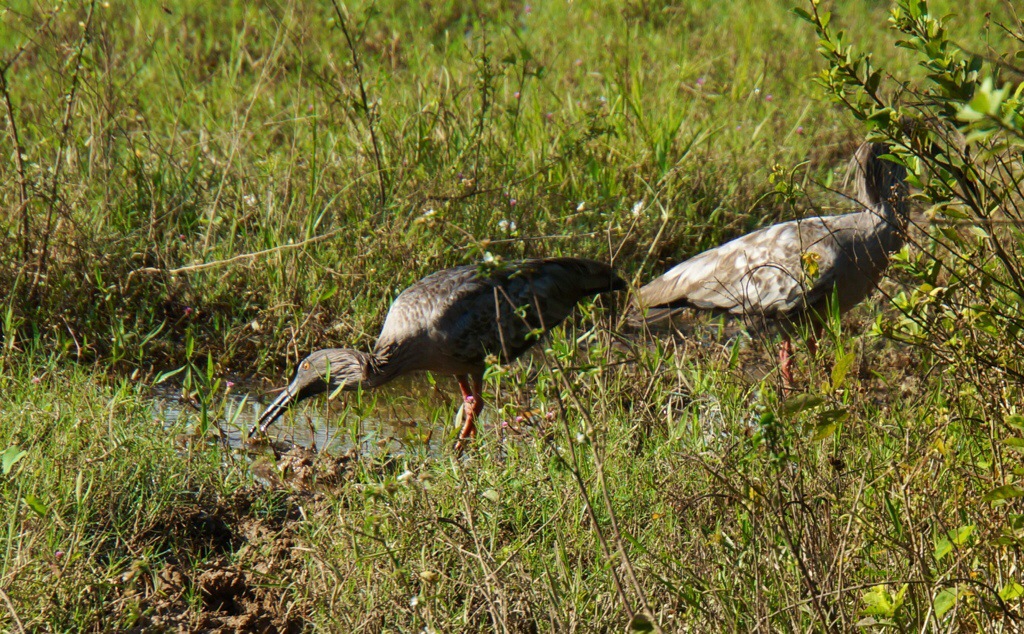
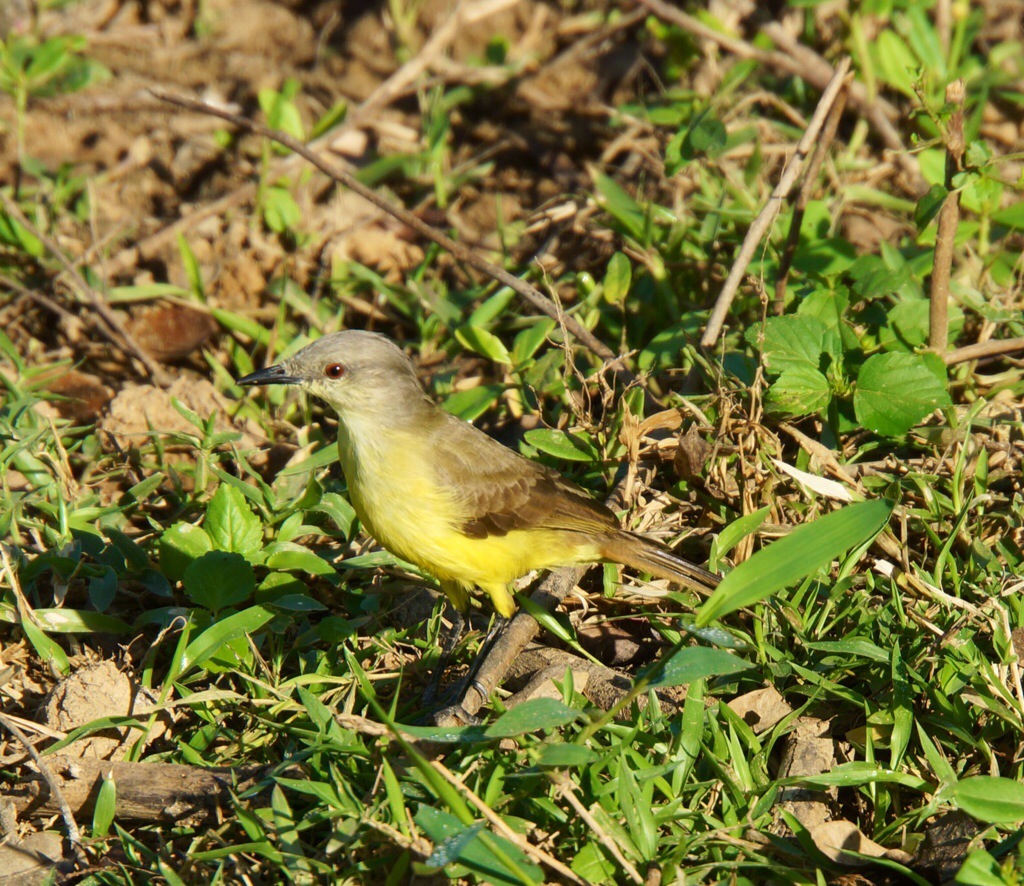
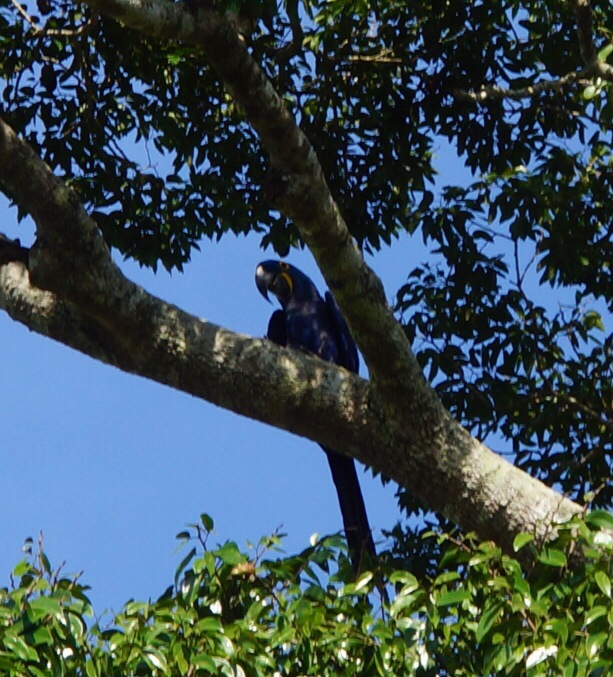
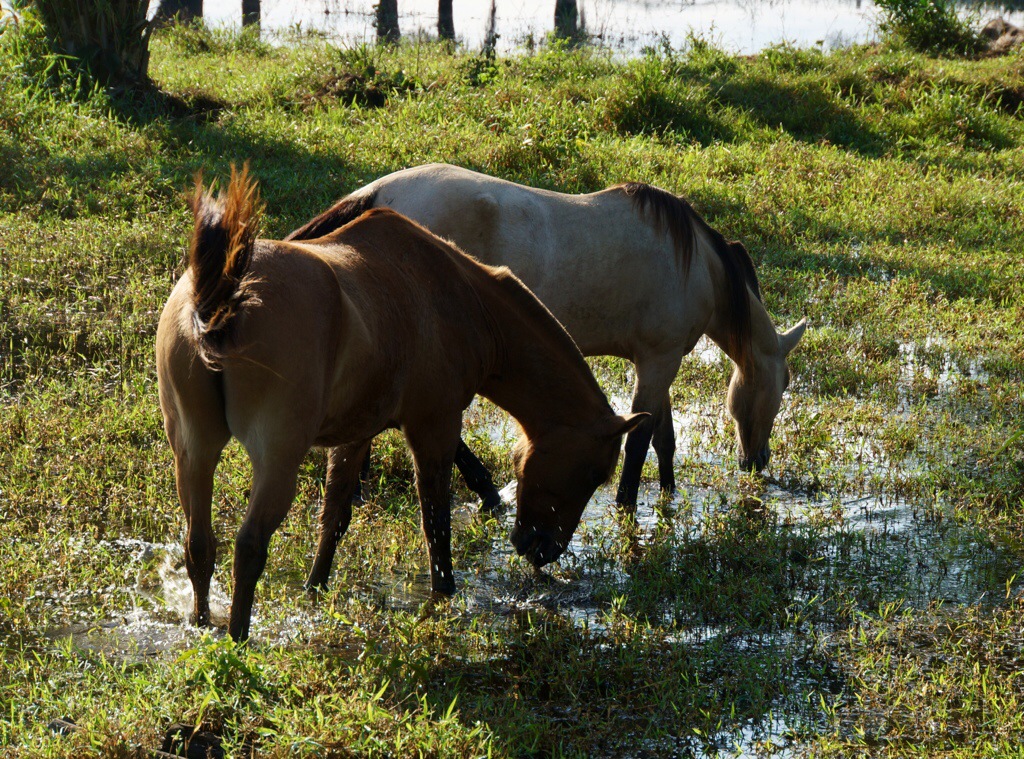
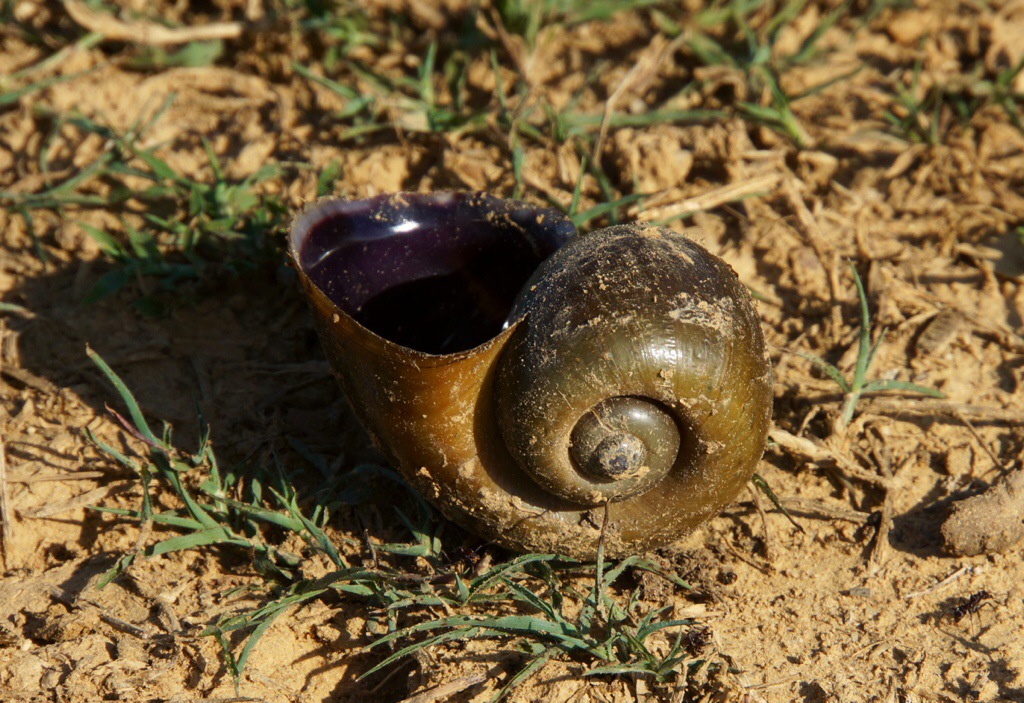
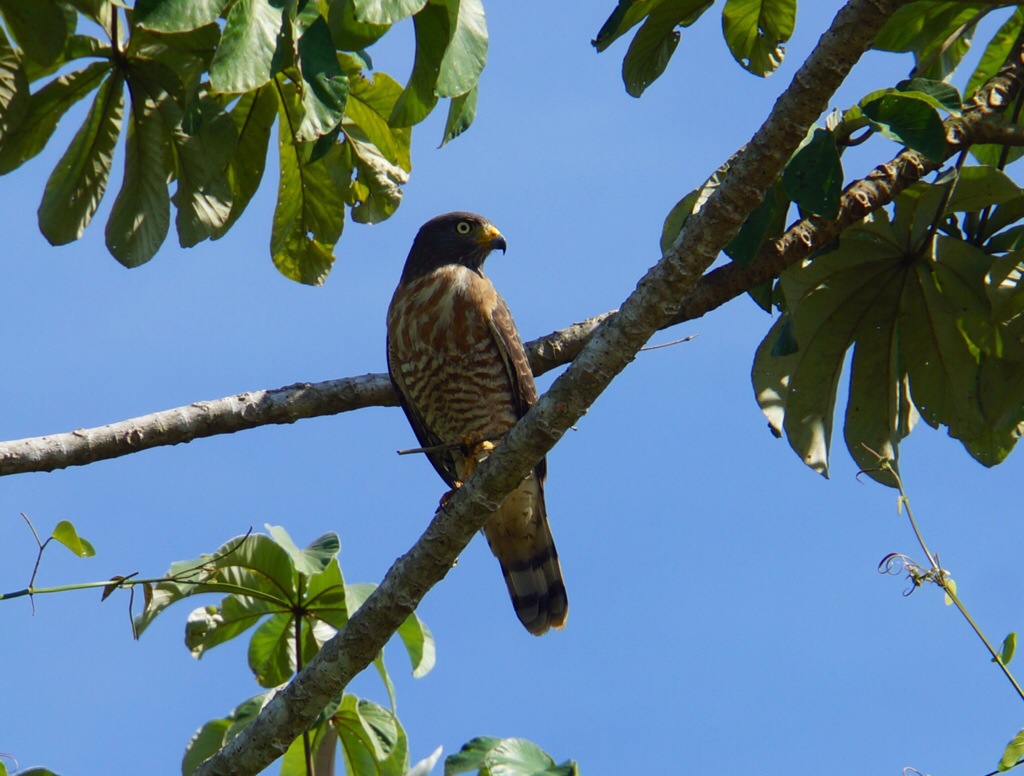
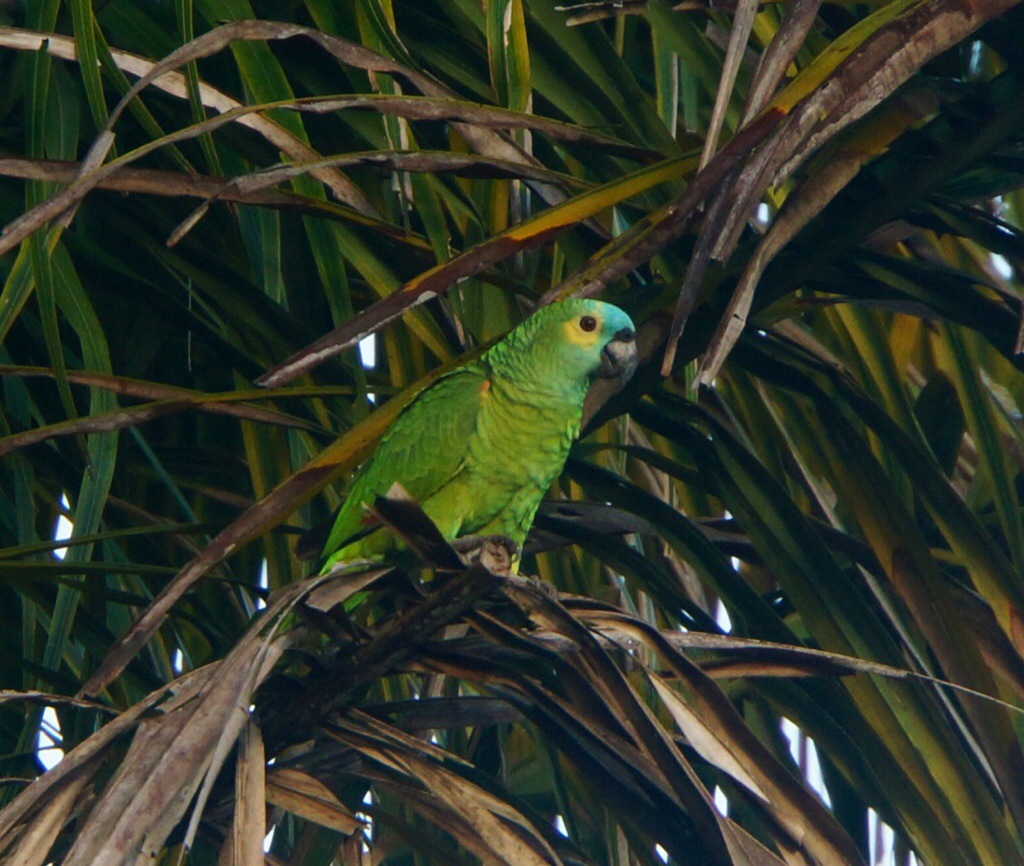
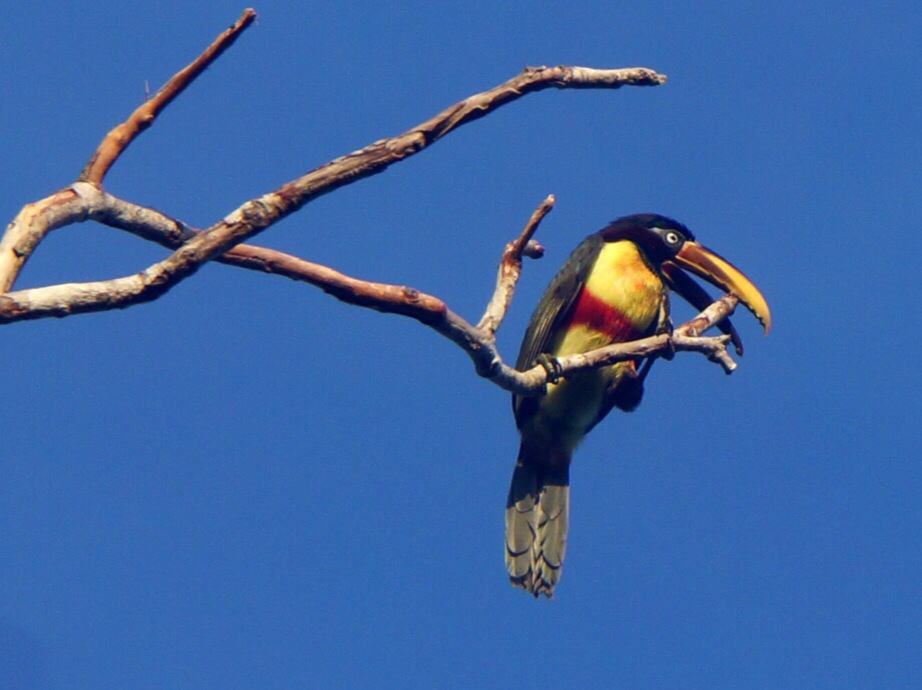
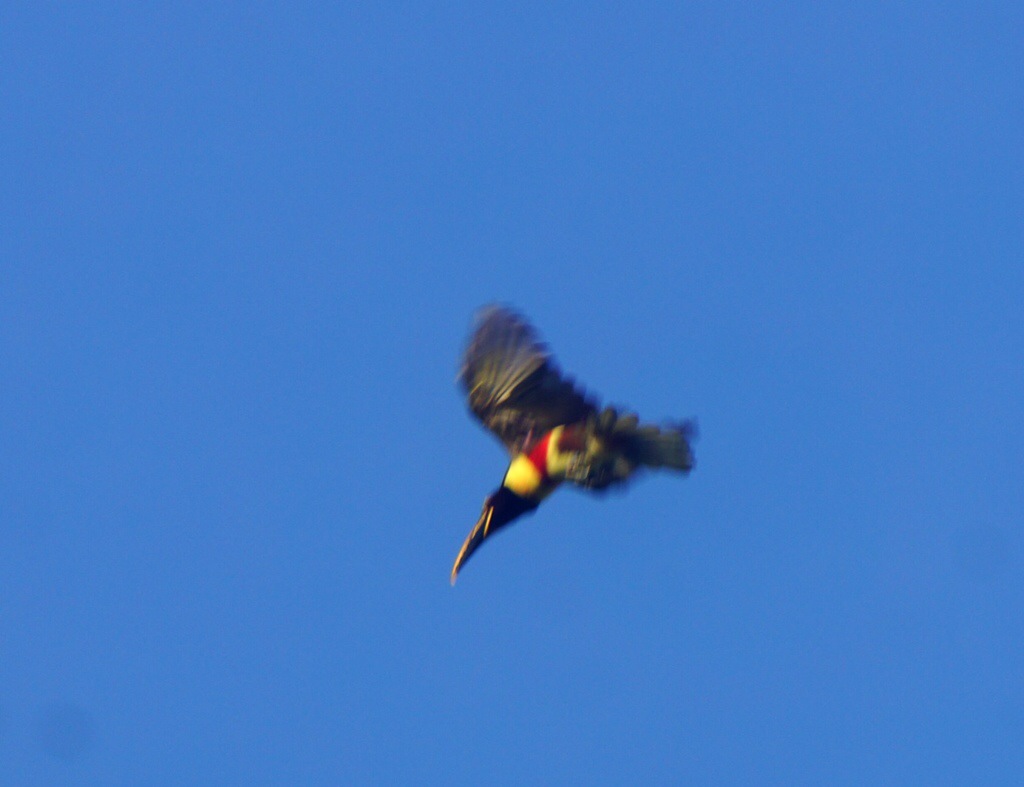
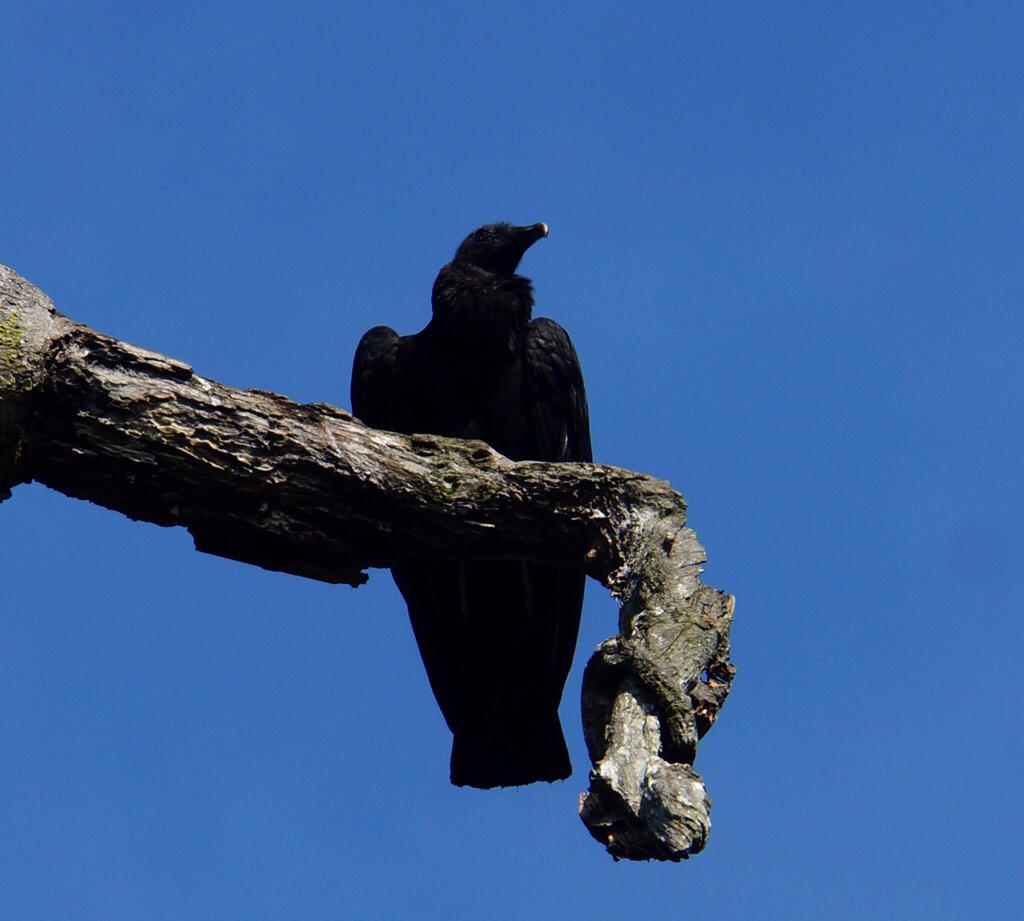
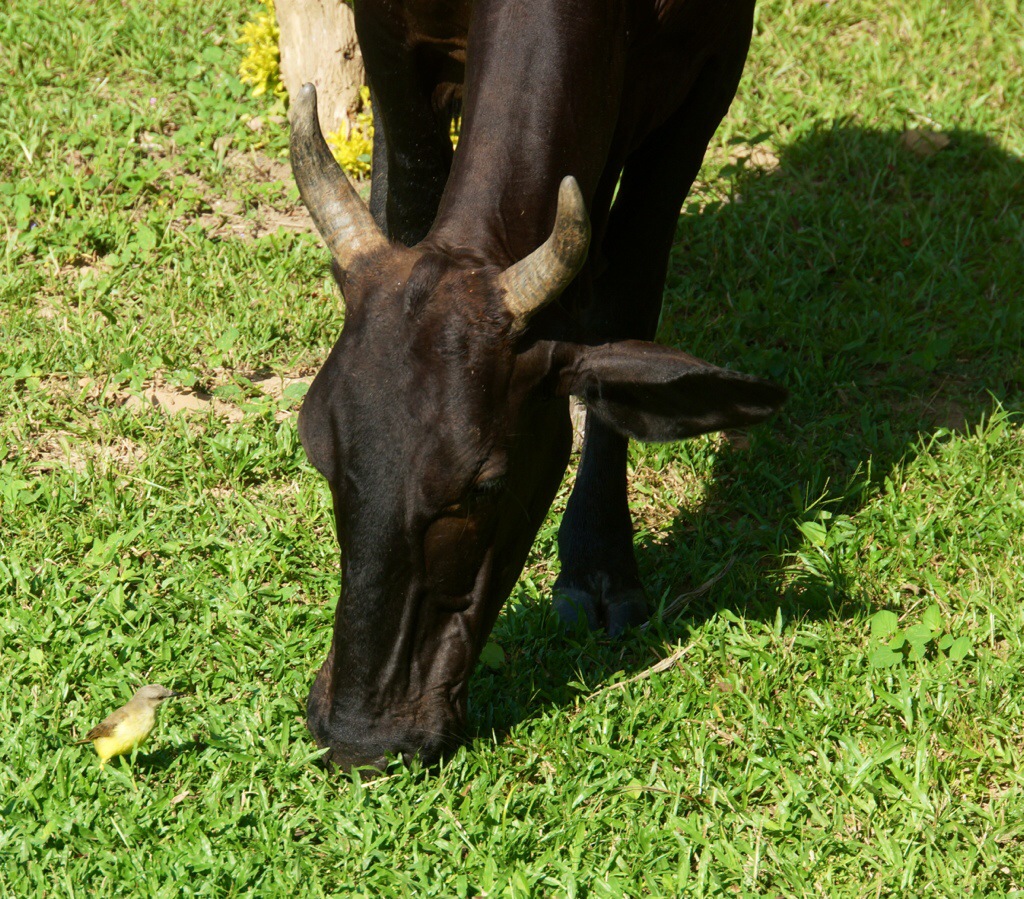
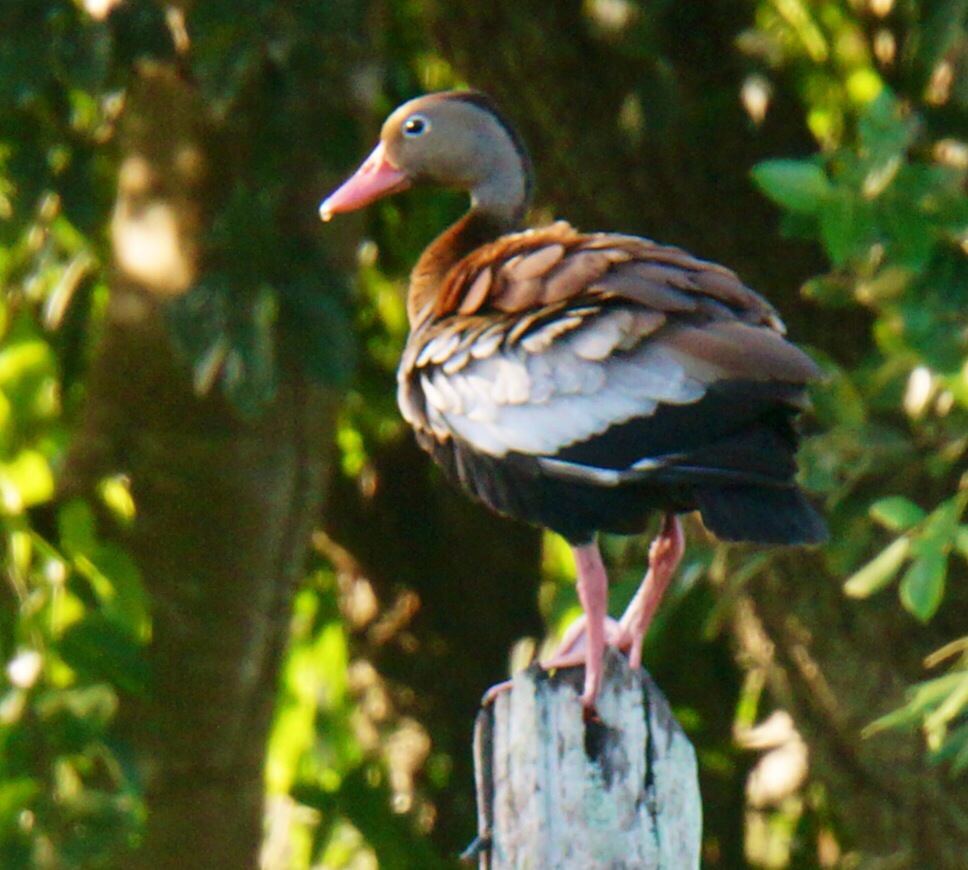
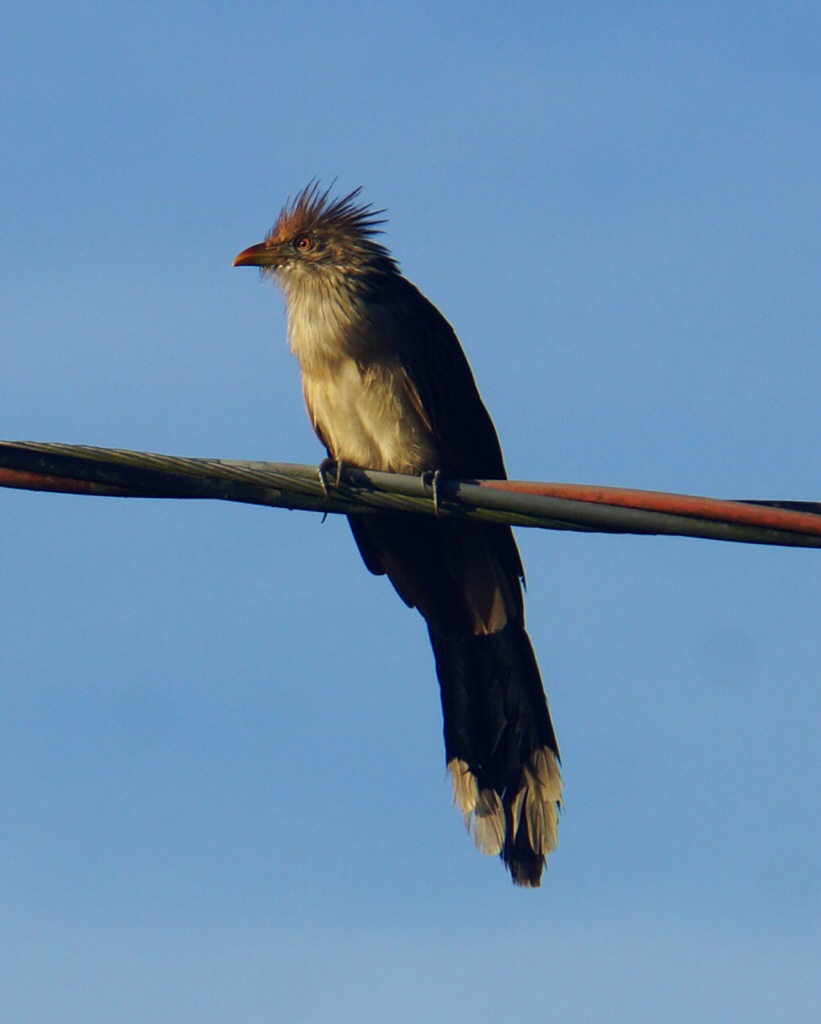
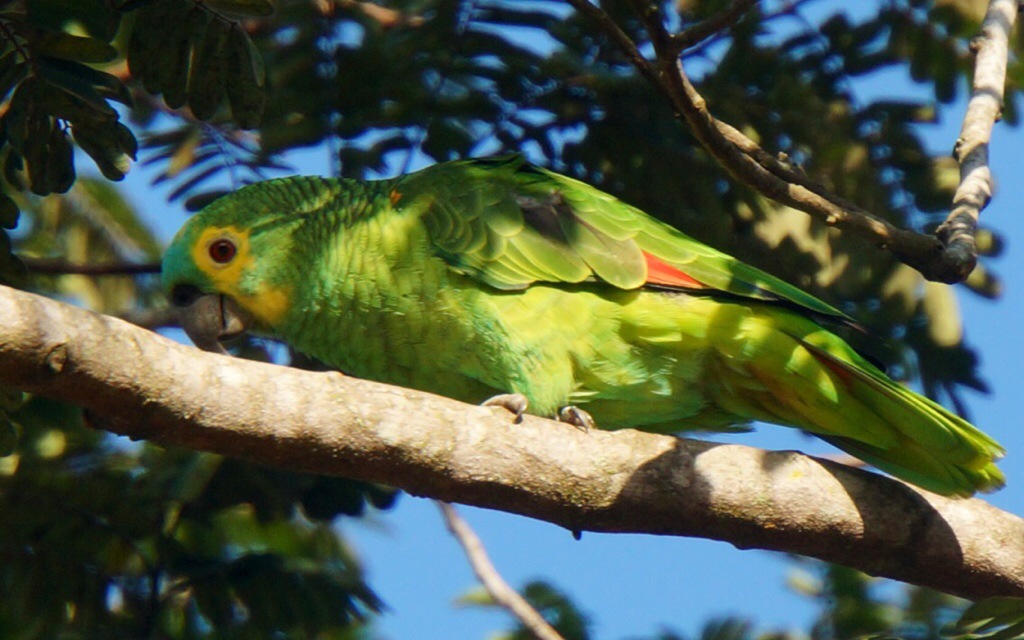
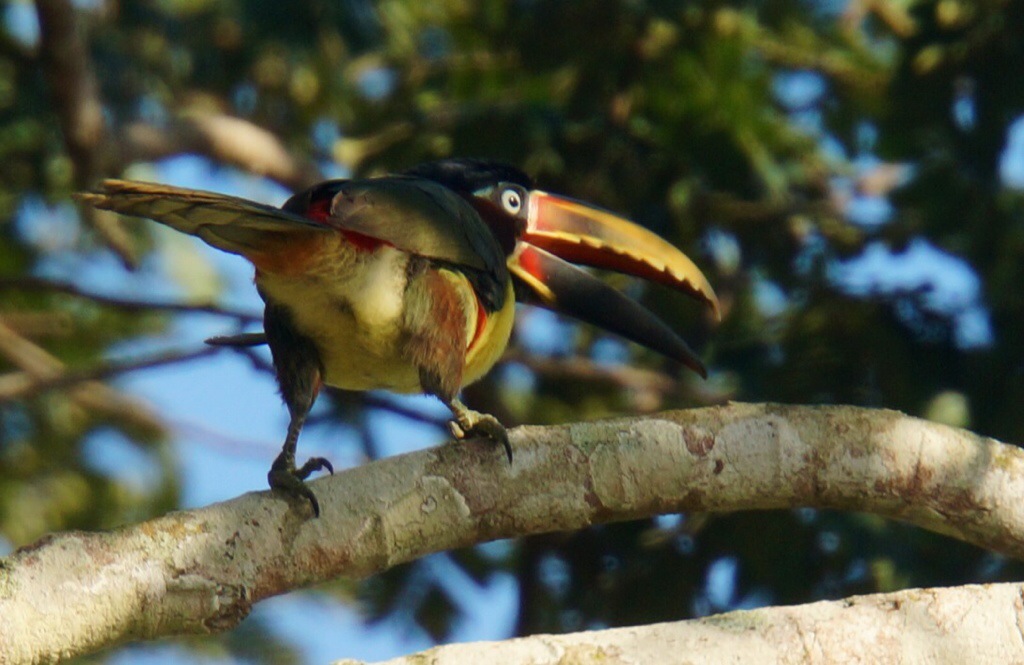
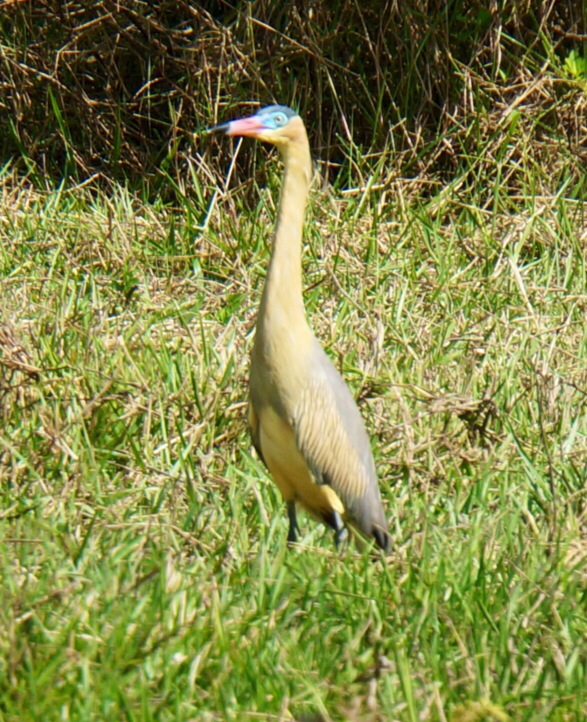
On our way to lunch, we notice a group of perhaps ten or twelve photographers, loaded with tripods and very fancy (and heavy) photo gear taking photos where we were taking them early this morning. Apparently, our lodge is such a fabulous birding site that guides take groups her (and pay Eduardo for the privilege). While I’m sure the equipment allows them to take fabulous bird photos, I too lazy to ever think about doing that. It’s just not where I’m at with my photography.
Okay, so let’s place our heroes for you. When we flew to Cuiaba (pronounced Kwee-ahba) from Rio, we flew South and West. Our drive to the Araras Lodge from Cuiaba was 50 km West and 75 km South. The Jaguar is another 85 km South. This afternoon, after another good lunch, we drove 36 more km South, as usual, stopping to identify birds, to Porto Jofre. All of this driving is along the Transpantaneta Highway, a dirt road well pock-marked and containing short wooden bridges over water approximately every kilometer. The building of the highway had a dramatic affect, transforming what was a big cattle raising area in which everyone worked together to fenced lots. The ecology was also changed because of the division of rivers.
Anyway, in Porto Jofre, about the southernmost part of Brazil’s Pantanal, after Eduardo negotiated bathroom permission for Carol on a large fishing vessel, we set out for a delightful 3-hour trip in an aluminum motor boat piloted expertly by Eduardo on two adjoining rivers, the Cuiaba River and the Piguiri Riverh. The river was cool and scenic, the bird life plentiful and the highlight was spotting and viewing a family of giant river otters as they made their way home, shortly before a lovely sunset.
Short aside: as Africa has it’s “Big Five,” so does the Pantanal. The Pantanal Five consist of the a Hyacinth Macaw, the Giant River Otter, the Giant anteater, the anaconda snake and the jaguar. We’ve seen the first three, and have one day left to complete the five.
The ride back to our lodge offered more sightings in the spotlight waved back and forth across the road by Eduardo as he swerved from side to side and lined up the many wooden bridges we had to cross. Probably the best sightings were several great-horned owls and a couple foxes. Managed to get a poor picture of the back of one of the owls, which I’m going to spare you seeing.
Arrived home with 5 minutes to wash before our 7 PM dinner, which again was remarkably good. We’re turning in early, because we’re to set out on a drive at 4:30 AM tomorrow. Well, hell, it’s our last chance to see an anaconda and a jaguar.
Here’s the afternoon’s take.
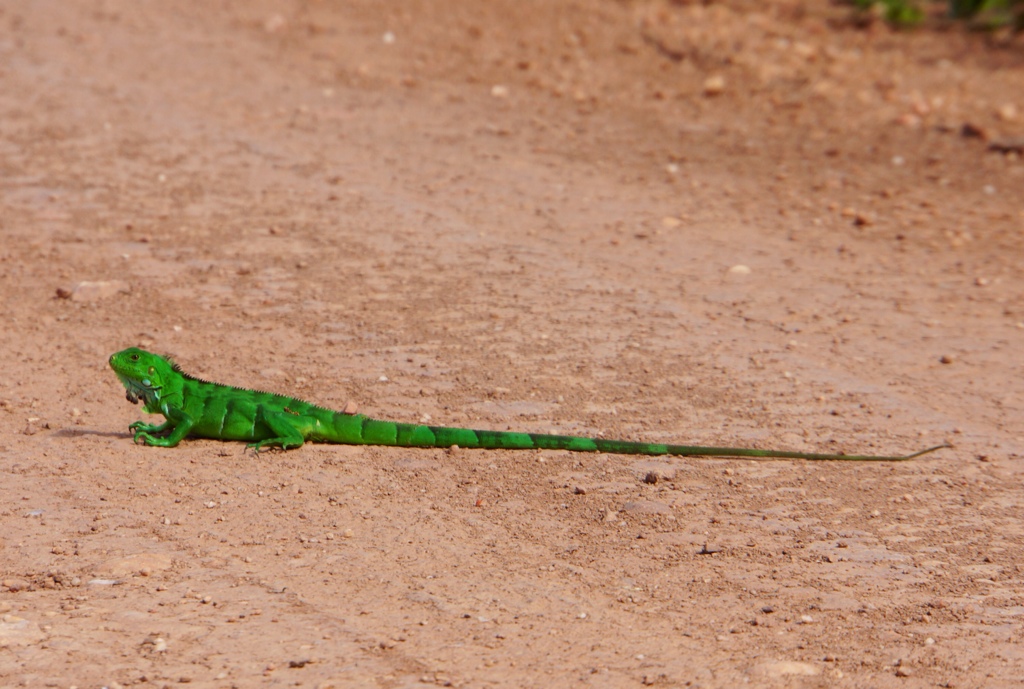
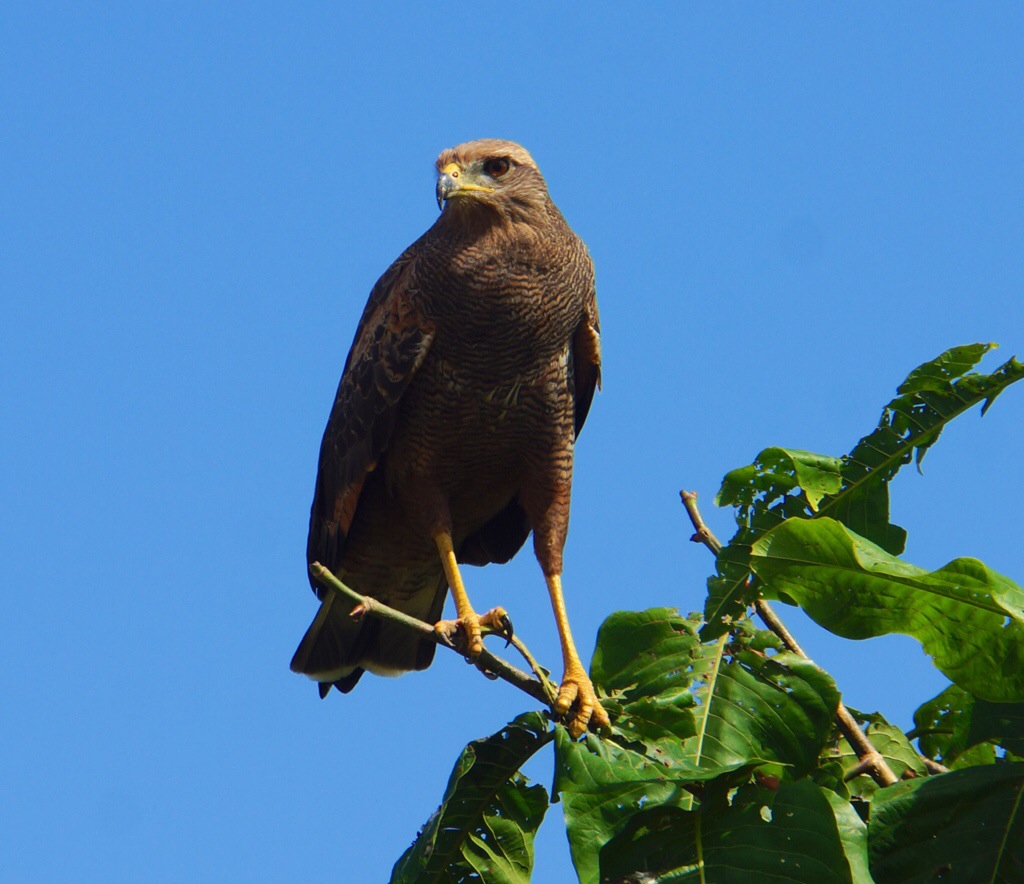
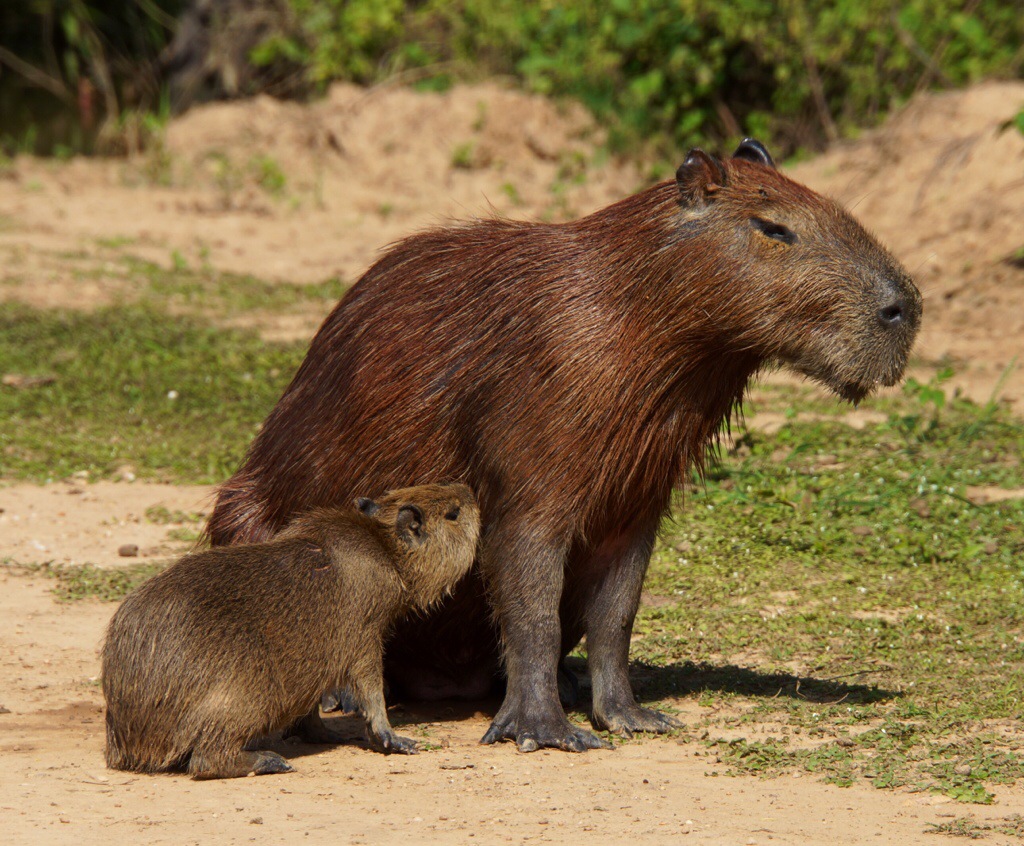
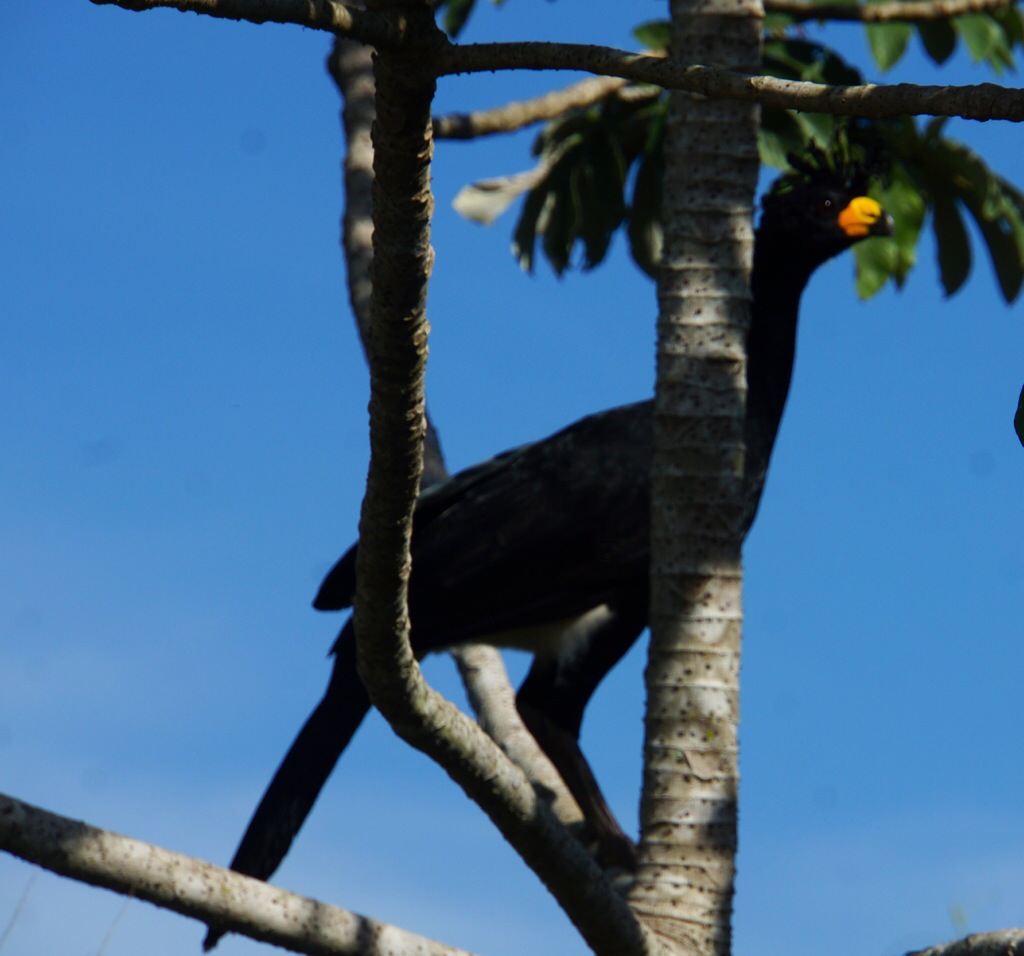
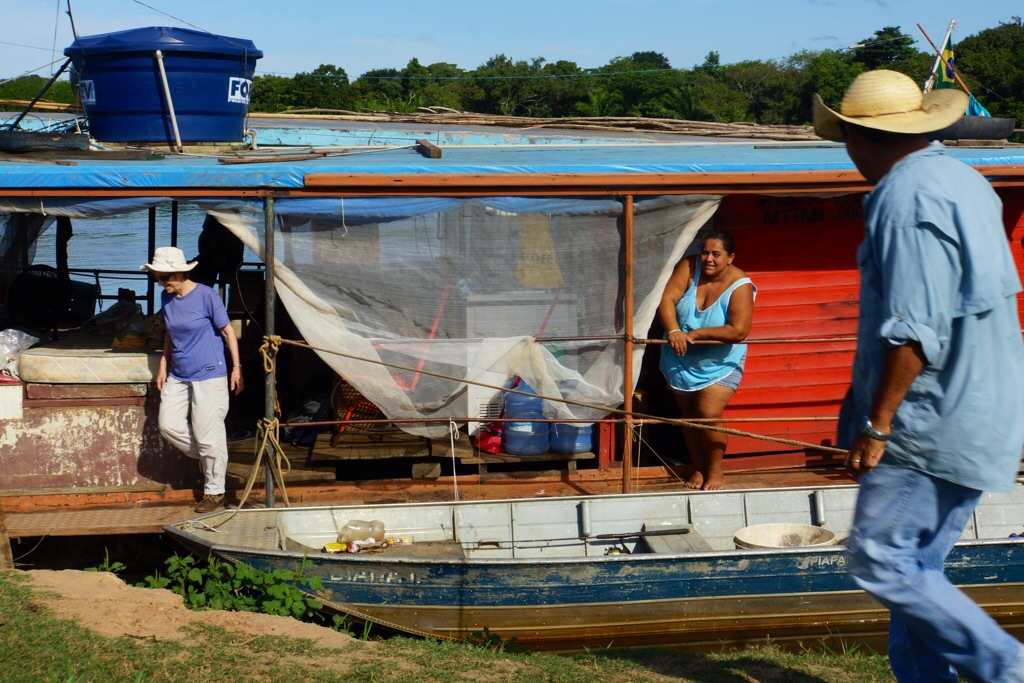
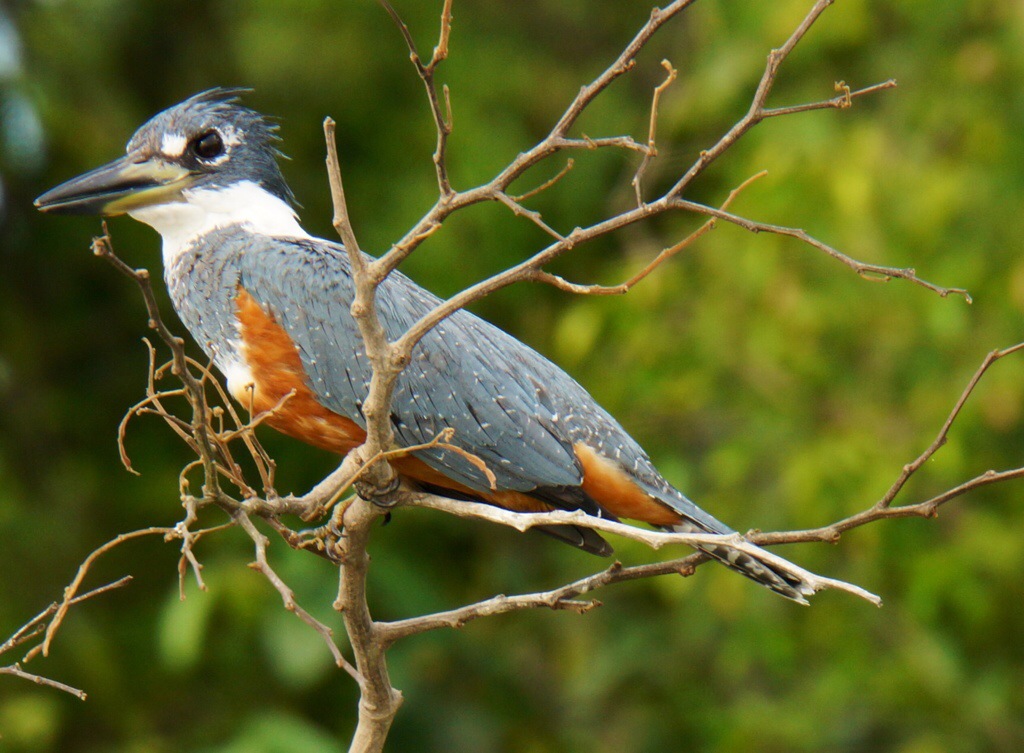
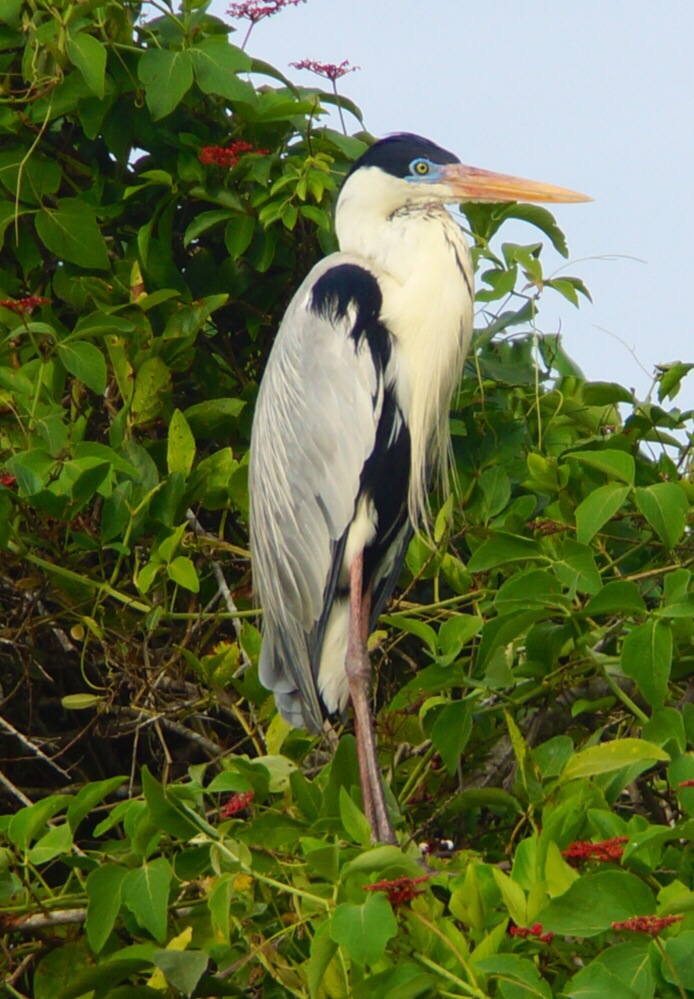
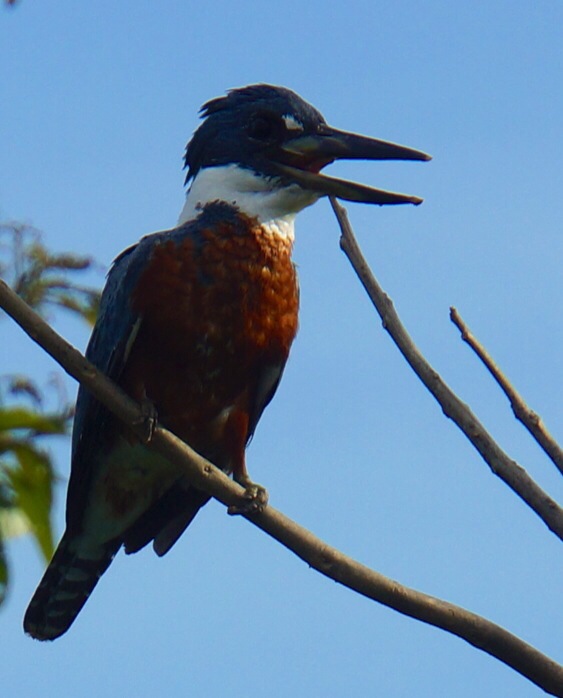
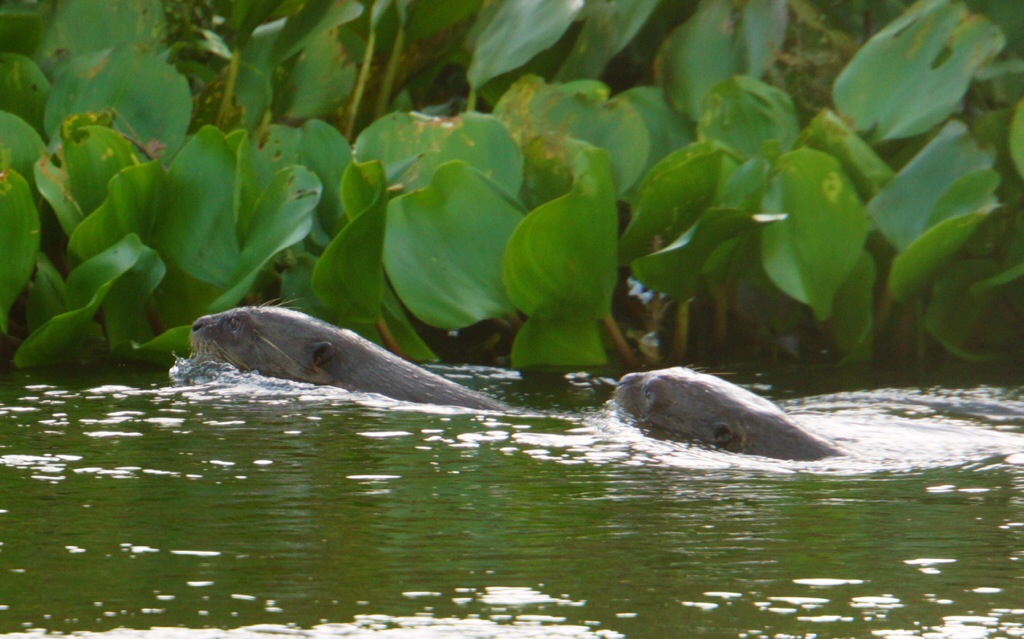

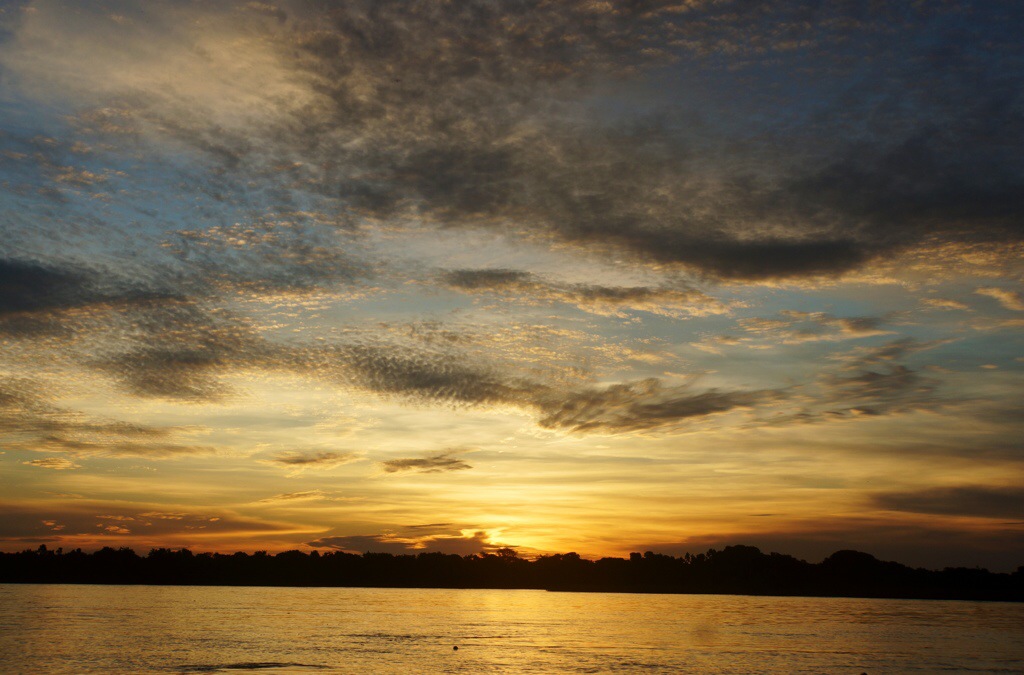
May 4
Buffet breakfast, then walk through wooded, foresty, marshy area with a different guide named Thadeo. Among our walking group is Camilla, the Brazilian 20-month old daughter of a German father and Mexican mother. Makes me wish Maxi, 19 months, were along, as long as Carol was carrying him.
Words to describe our walk–hot, long, muddy, sweaty, very hot. Saw more birds and plant life, including pink crab eggs. Here are some photos.
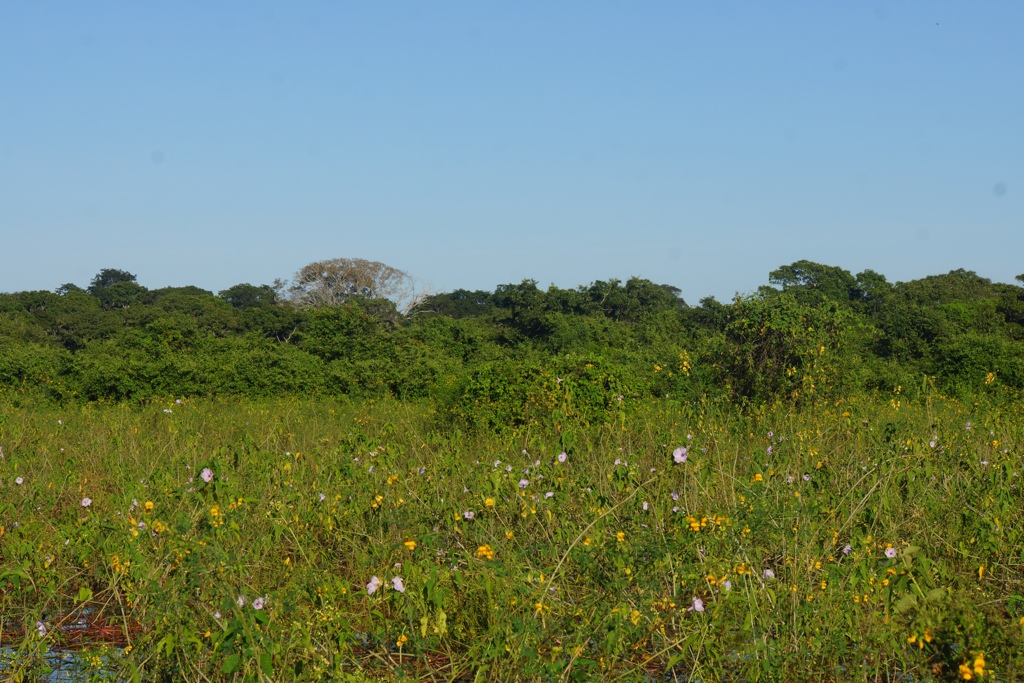
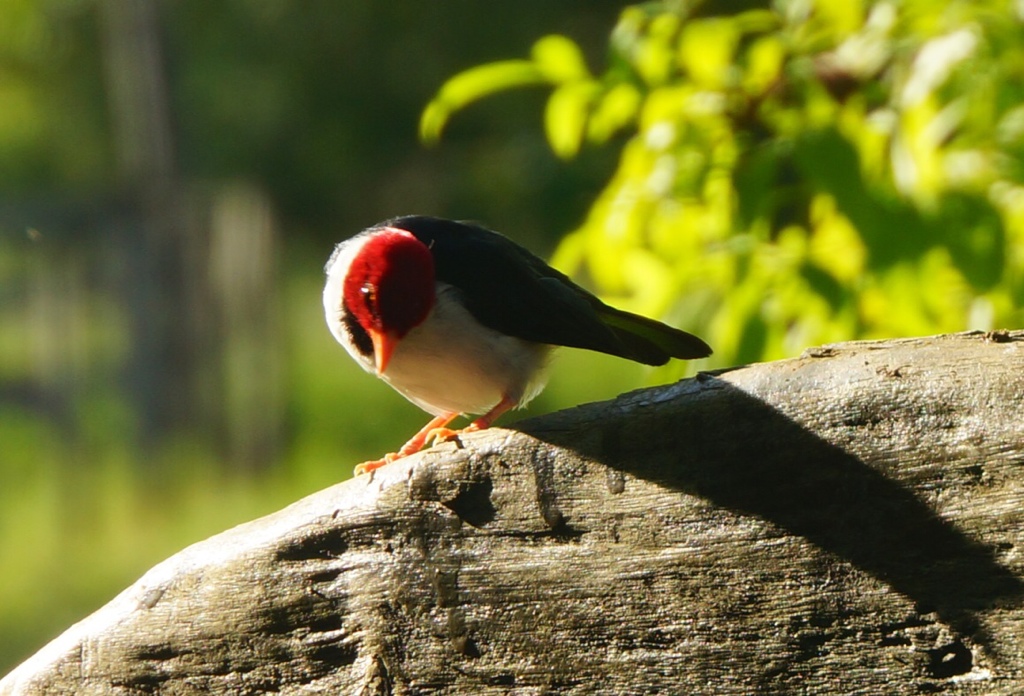
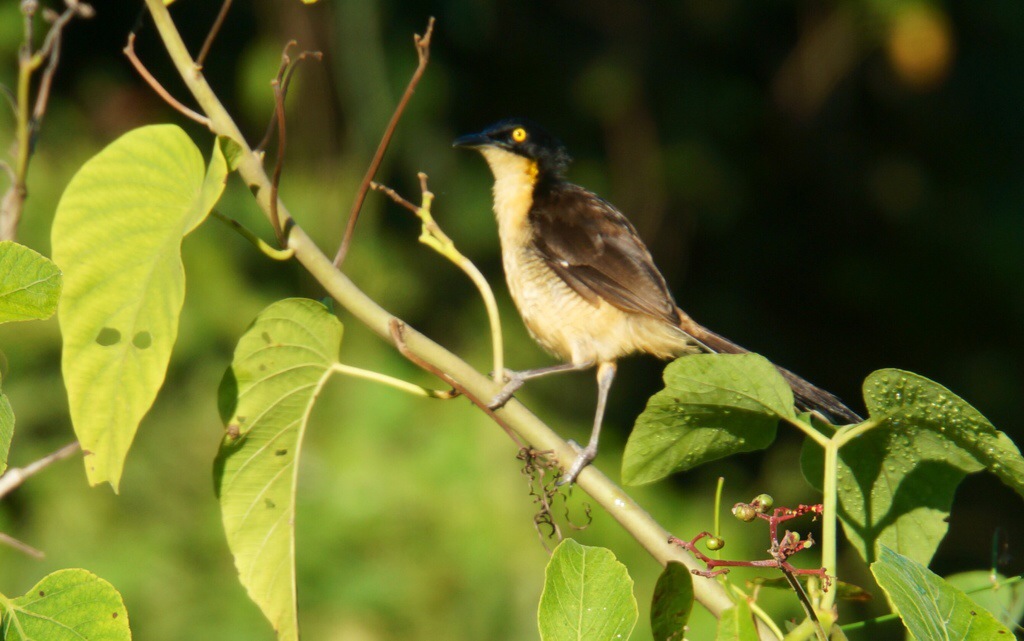
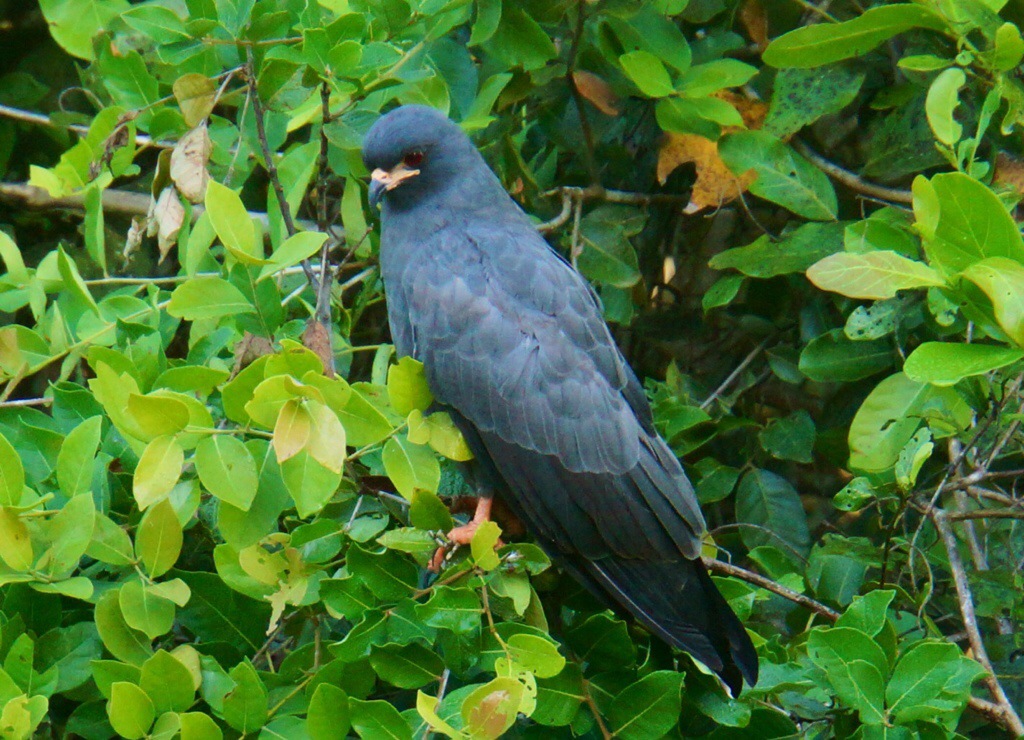
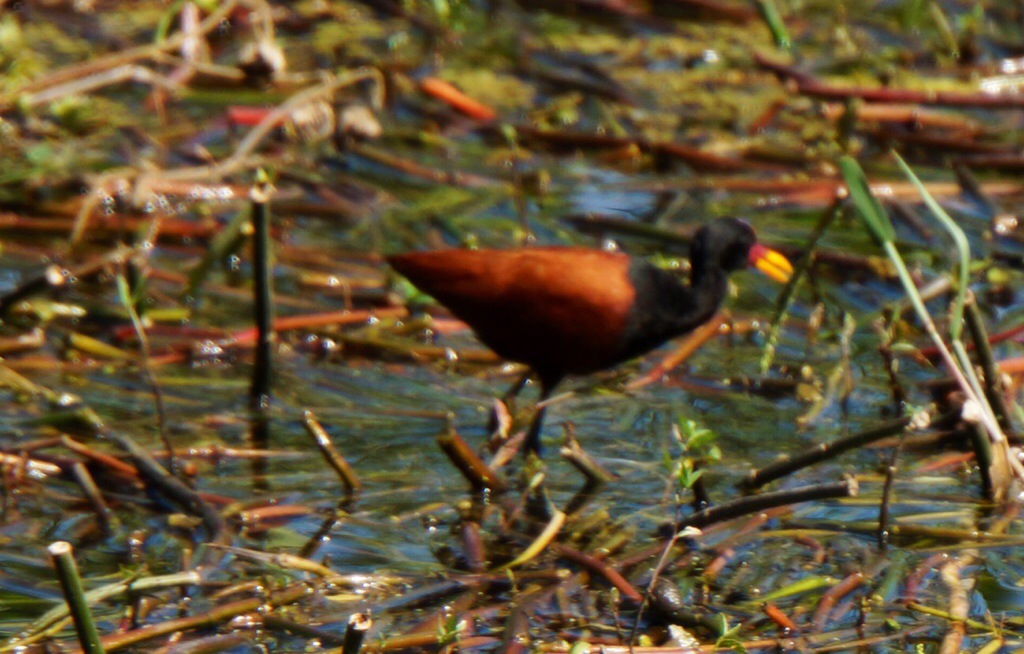
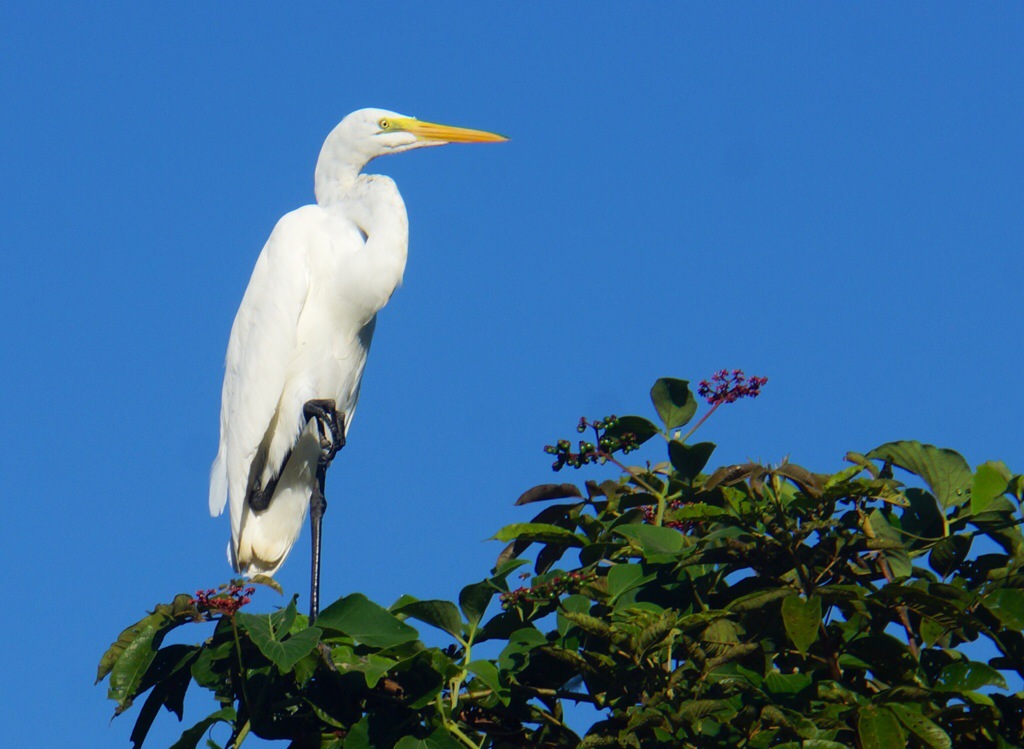
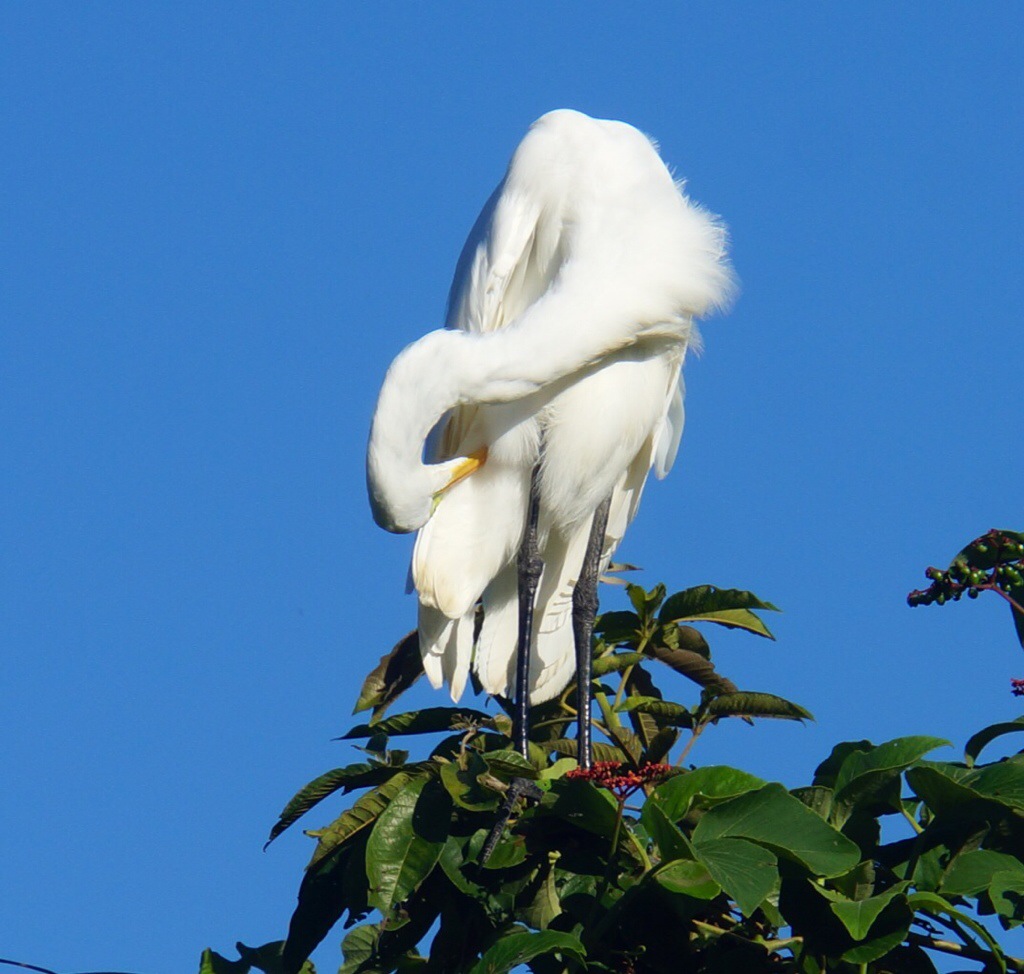
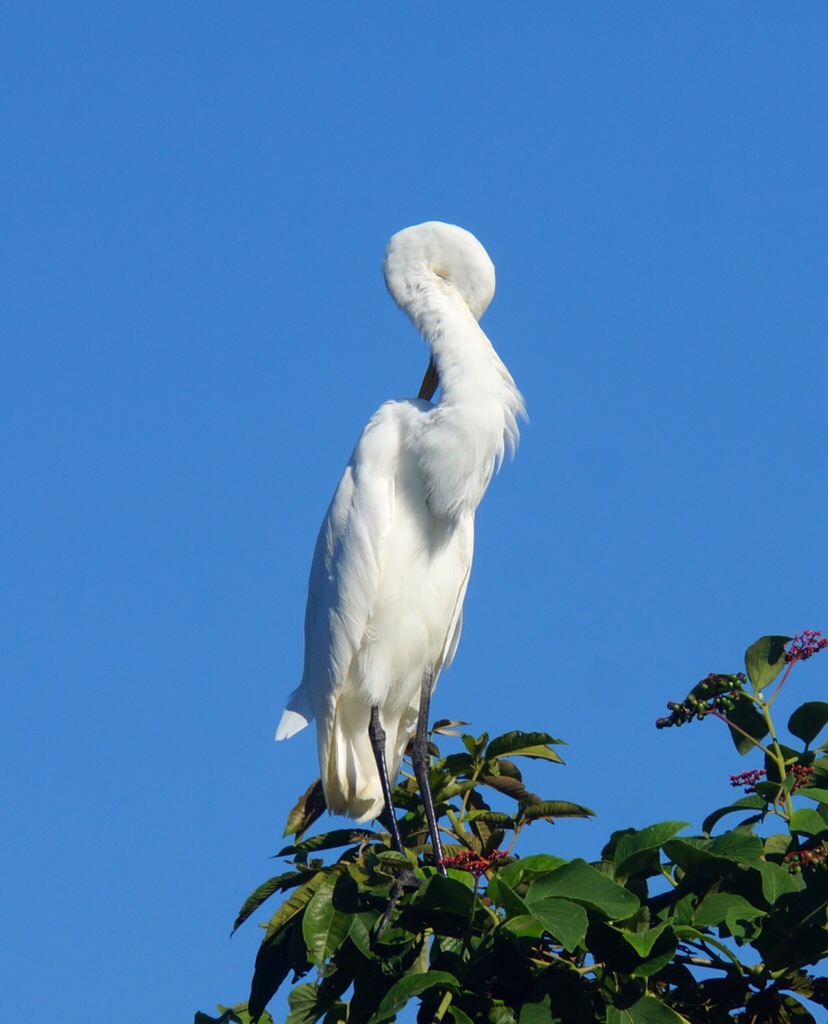
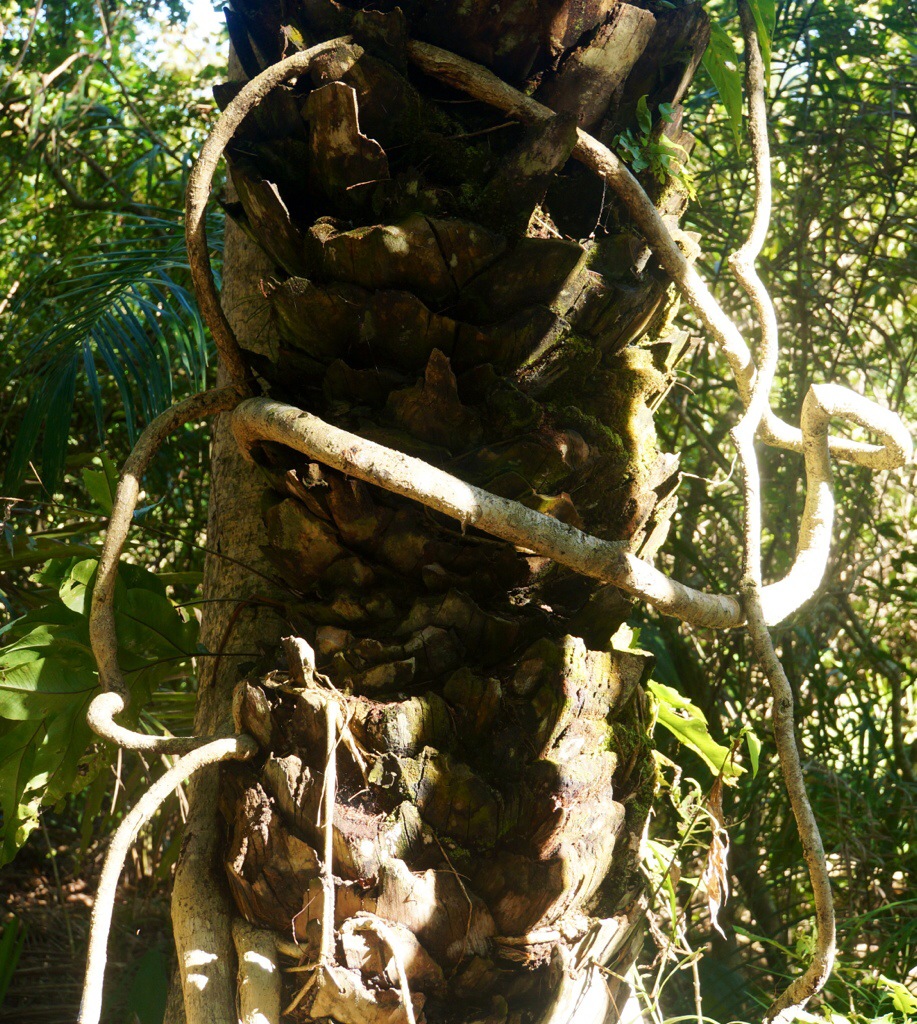
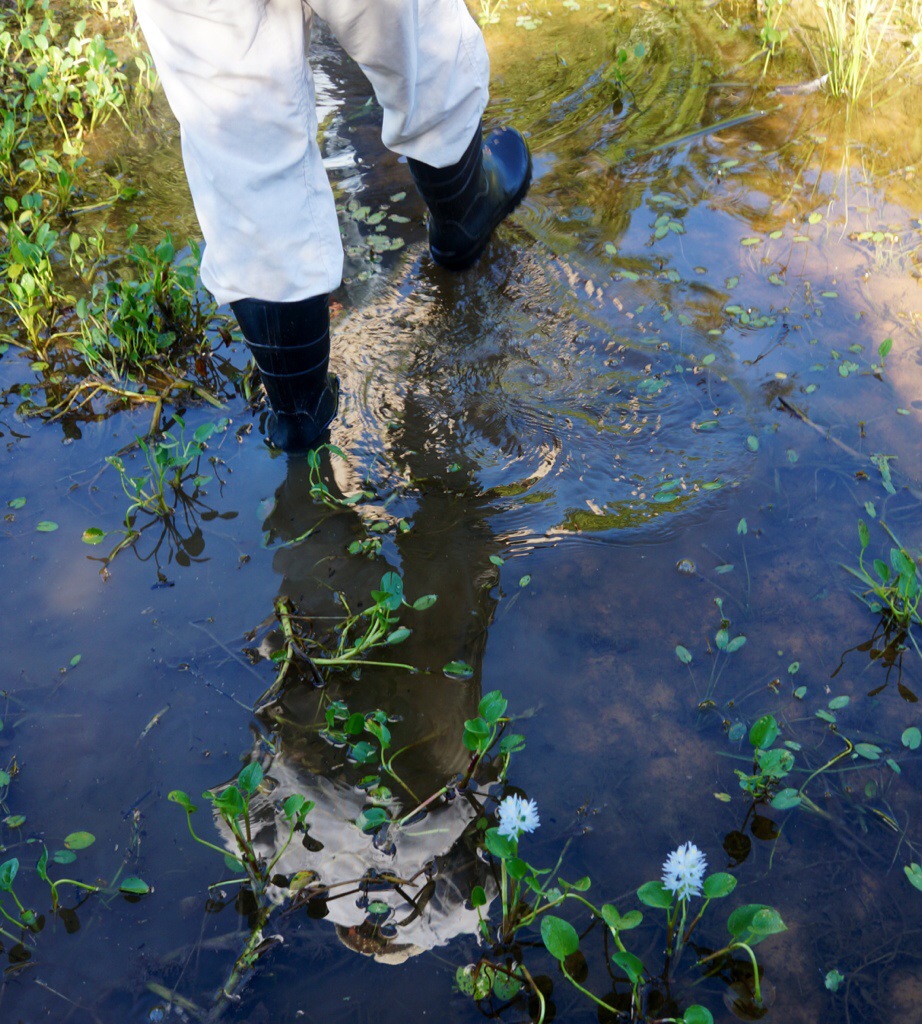
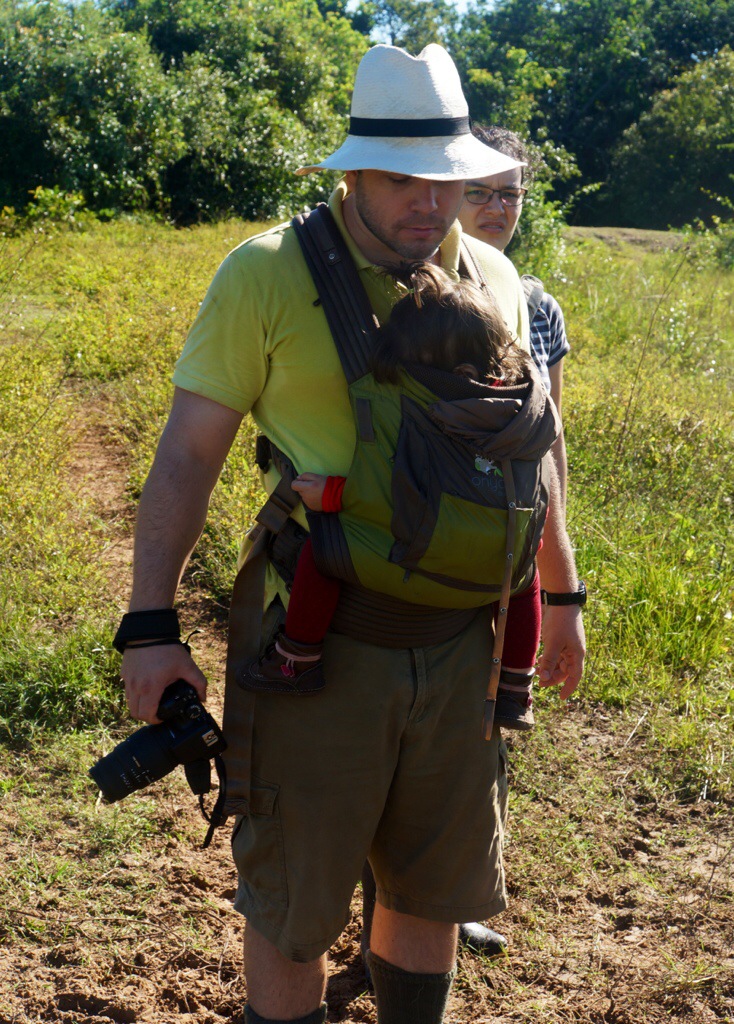
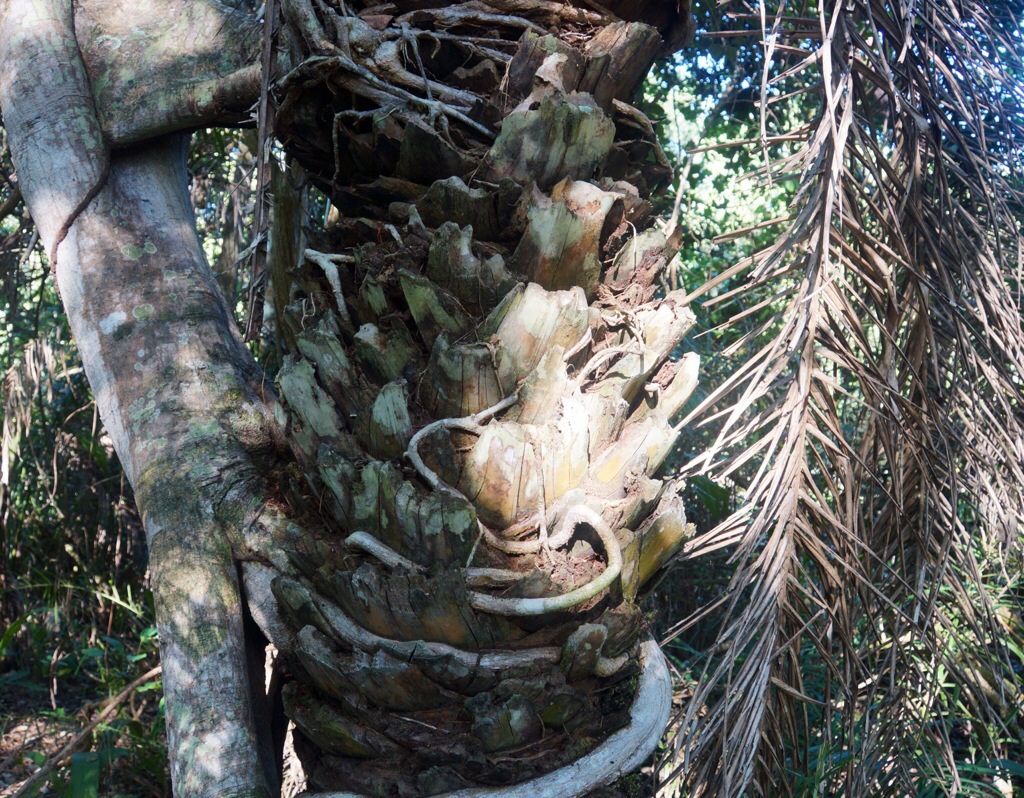

Buffet lunch outside and goodbyes to people we’ve met the past couple days. Pack and prepare to be picked up for our transfer to Jaguar Ecological Preserve, where we’ll spend our last three nights in Brazil.
Eduardo, owner and guide at Jaguar, picks us up in a truck. Carol is stuffed in the back seat with the luggage as the truck back is loaded with a solar panel. I’m up front with Eduardo in the sorta air conditioned truck. Turns out that when Eduardo was about nine and his father was raising cattle, a guy from Santa Fe, NM was doing research on birds in the area and stayed with them. He told Eduardo’s father that he should give up the cattle and go into ecotourism. But his father said no, raising cattle was what he knew how to do. A few years later, though, he changed his mind. The guy from Santa Fe sent somebody down to teach Eduardo and some relatives how to speak English and, twenty years ago, the ecotourism business started, and Eduardo is pleased with the way it’s gone. Clearly ecotourism is a family business. His brother-in-law is a guide at the first place we stayed and we passed property of cousins on the way down, one of whose fathers was mayor of a nearby town, which accounts for the road that runs right by their property.
We’re switching to Jaguar, well, because of jaguars. We’re hoping to see one, and this place, because of it’s location, gives you a much better chance. Eduardo is understated, and sorta grows on you. Though he makes no show of it, he clearly knows all of the birds and all about them. Along the way, we stop frequently and probably see birds better, and with much less sweat, than we’ve seen to date. Two and a half hours later, we’ve traversed the 85 kilometers and arrive at Jaguar.
Luxurious it’s not, sort of Motel Eight-like, but not really worse than our prior place. It’ll do. The wildlife here appears great, both in and outside the room. A tree located near our room holds a vulture, 3 hyacinth macaws and another big bird whose identity we’re unsure of, let’s call him, “Ralph.” Inside, Carol captures a small bat she spots on the curtain and escorts it outside. The generator Eduardo has turned on generates air conditioning, which is good. The generator operates from 6PM to 6:30AM each day. If you want electricity at other times, you can get it for $75/hour.
We spend an hour in the room, then go up for dinner, which is actually quite good, especially the chicken and a passion fruit custard dessert. Eduardo joins us for dinner and we learn that his two kids, 16 and 18, live with their mother in Cuiaba, where they are studying. Eduardo expects to move to the US in five years or less to help with a mission of his church, perhaps in NY or San Francisco. It’s tough to find somebody to take charge of Jaguar, though. His son, 16, can’t wait to go to the US. His daughter is planning to go to medical school. His wife is not enthused about moving to the US.
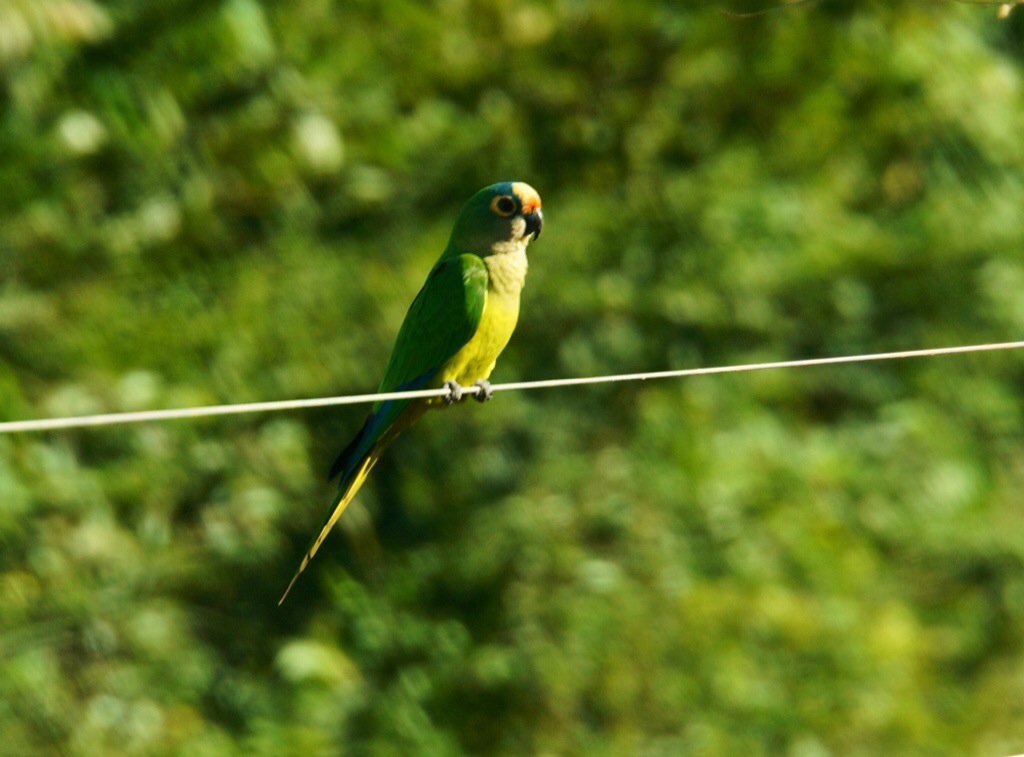
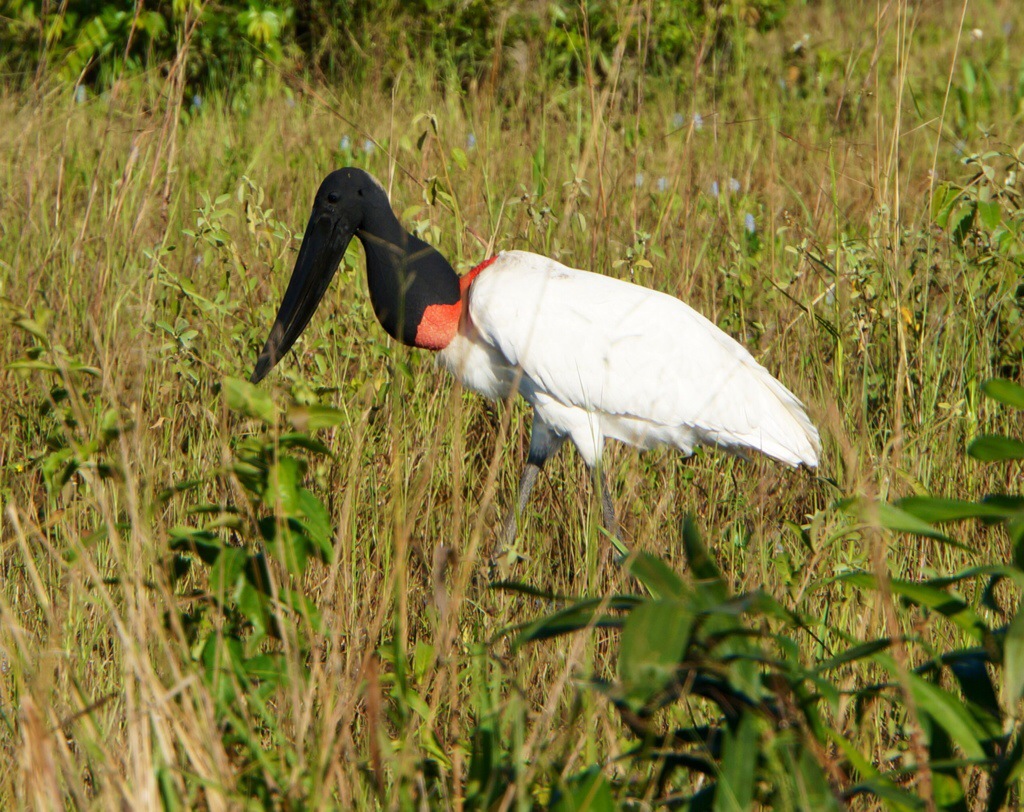
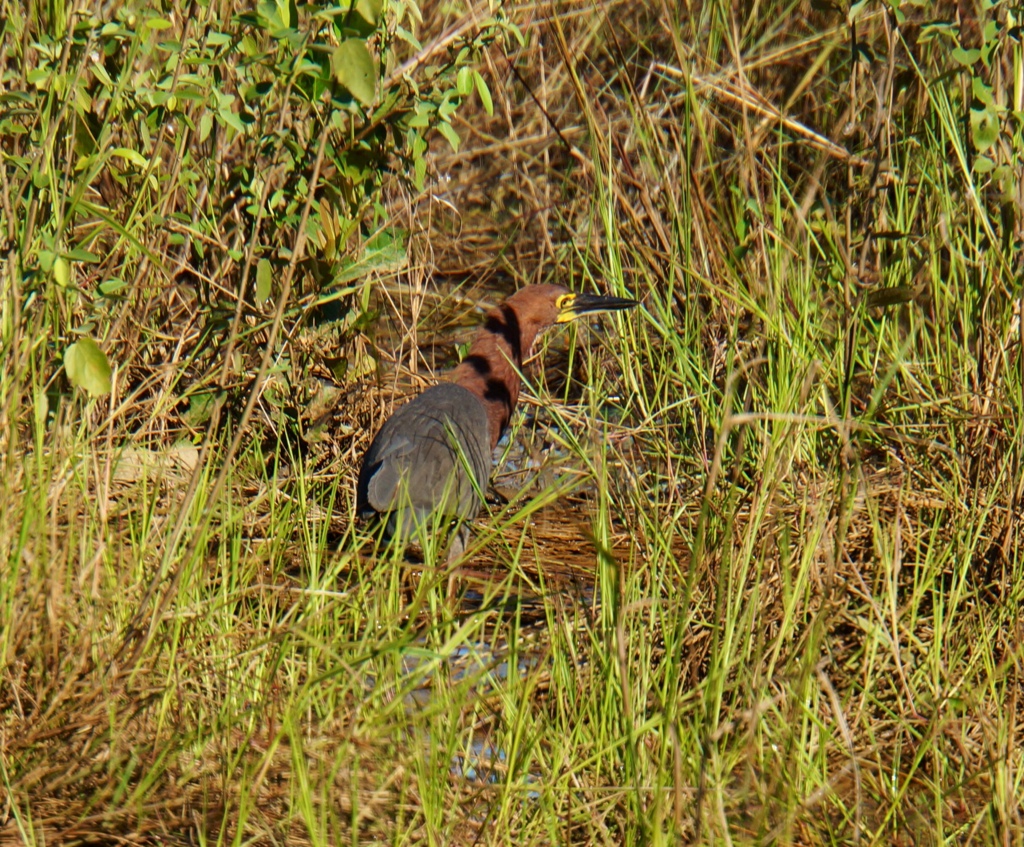
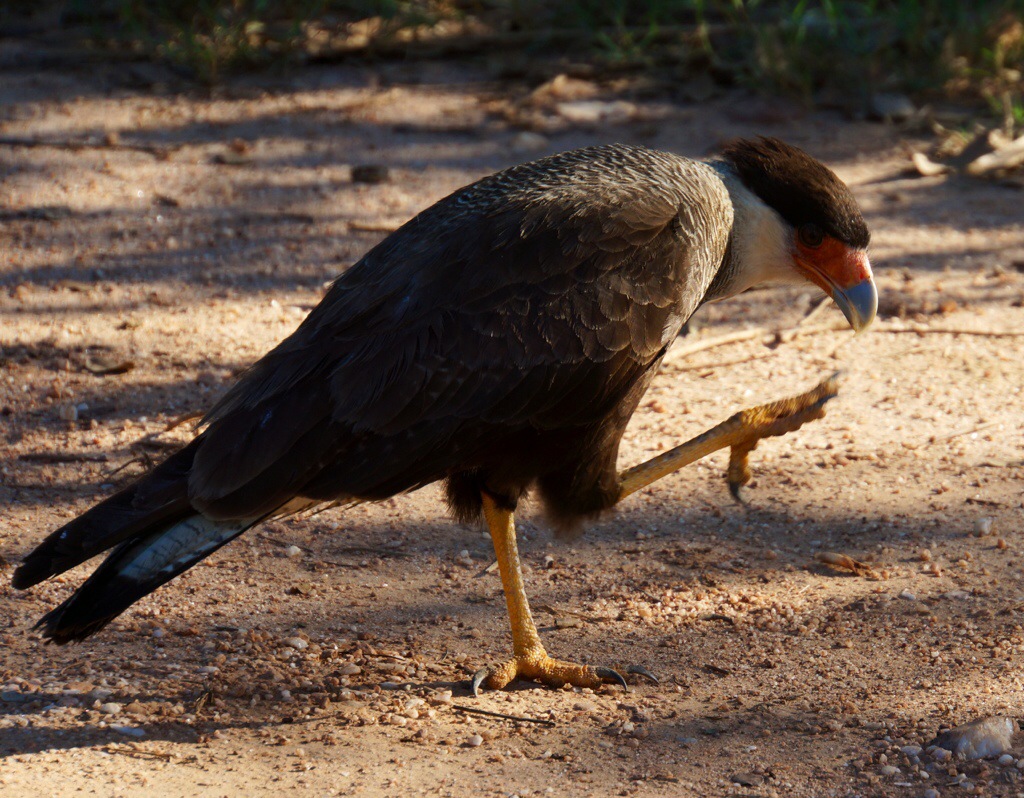
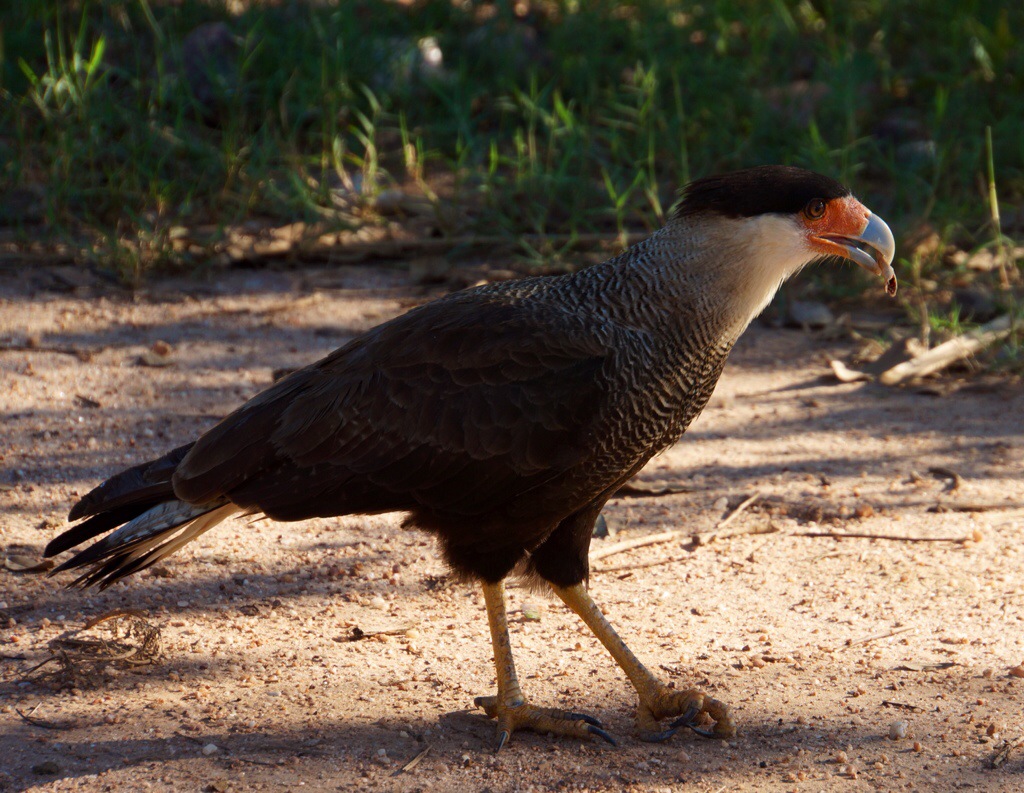
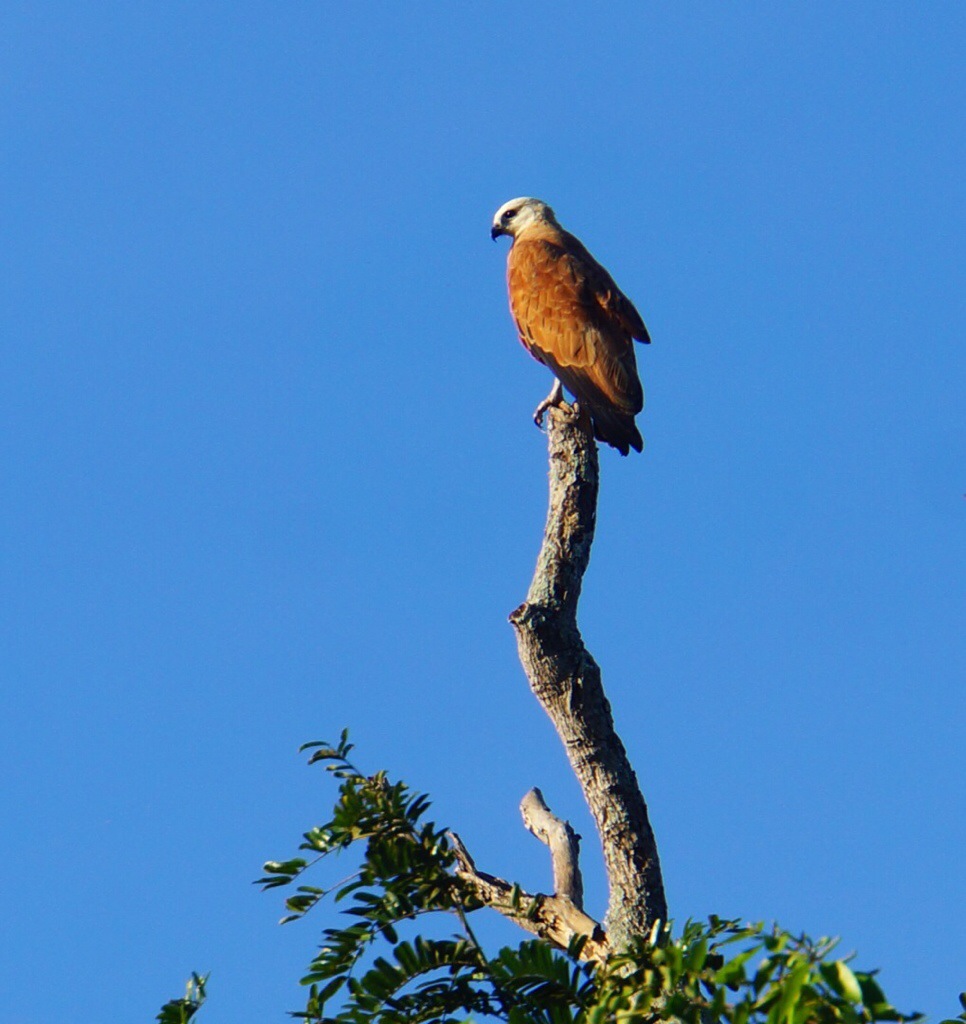
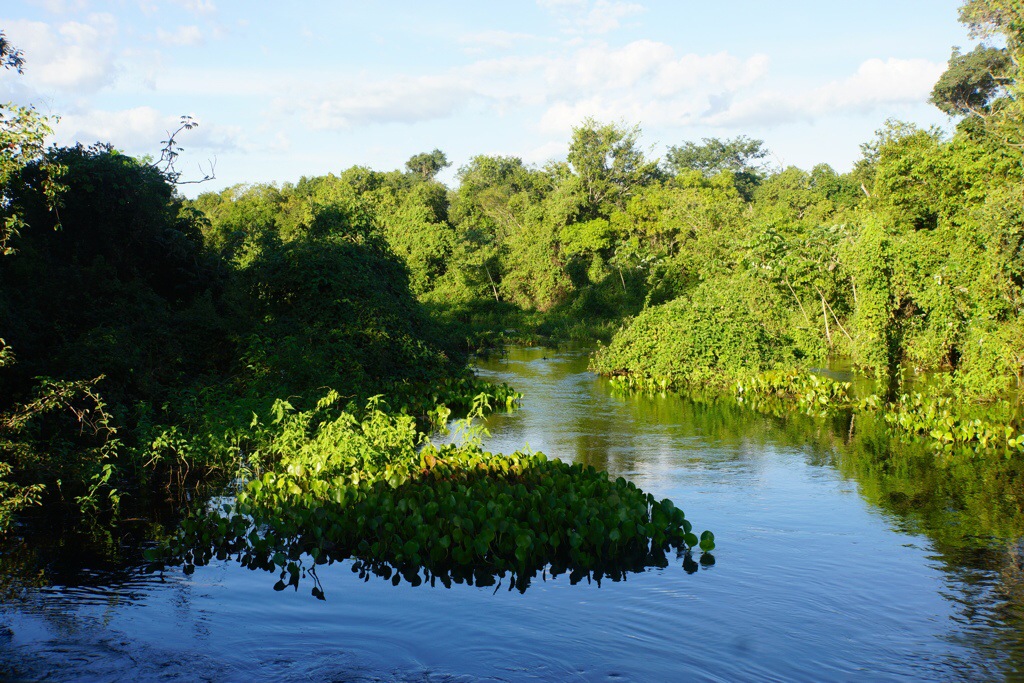
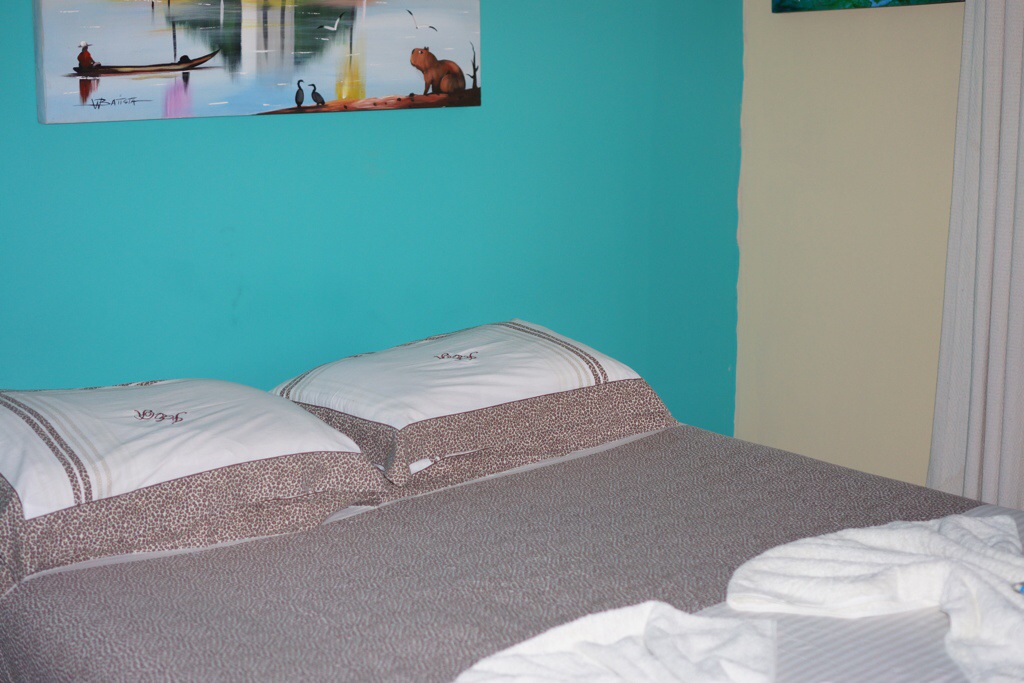
We set out with Eduardo for a night drive, which proves singularly unsuccessful. While that’s a bit disappointing, it’s all part of the game; there are no guarantees when you’re looking for game. We’re back at the room early, which ought to give us a good night’s sleep before our 6:30 breakfast tomorrow.
May 2
We’re picked up at the hotel by Luiz and driver at 5:30 A.M. and drive to the airport, where we have a farewell coffee with Luiz.
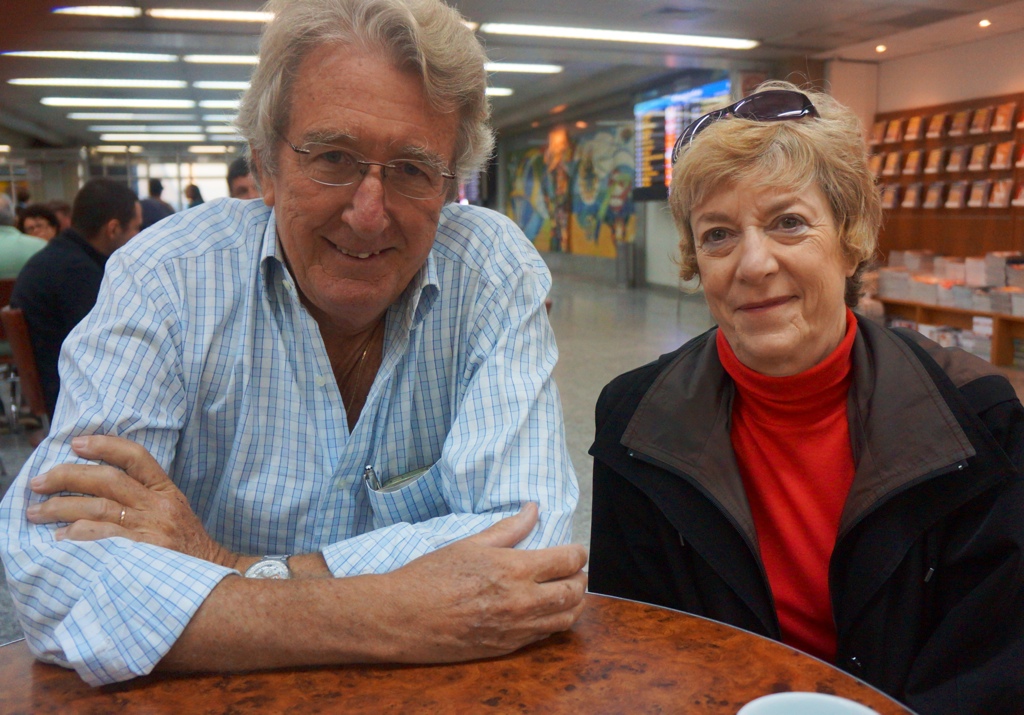
Our flight leaves Rio a bit after 7:30 AM, stopping in the capital, Brasilia, where we change planes to fly to Cuiaba. We’ll arrive a bit after 11, but have to wait a couple hours for our van to the lodge. While it’s frustrating to kill days in this way, there’s no alternative.
Stretching across Brazil, Bolivia and Paraguay, the Pantanal is the world’s largest wetland. Although not as well known as the Amazon Rainforest to its north, this gigantic seasonal floodplain is also home to a staggering variety of plants and wildlife.
Imagine a huge soup plate that slowly fills up with water and overflows in the rainy season, gradually empties during the dry season and then starts to fill up all over again. That image gives a good idea of what the Pantanal is like; a unique, rich, but threatened ecosystem located in Brazil, Bolivia and Paraguay.
The Pantanal covers an area of some 81,000 sq. miles, 10 times the size of Florida’s Everglades.
The Pantanal is home to about 3500 plant species, 656 bird species, 325 fish species, 159 mammals, 53 amphibian and 98 reptiles.
Average yearly rainfall is 40-55 inches.
Over 80% of the Pantanal floodplains are submerged during the rainy seasons.
The name “Pantanal” comes from the Portuguese word pântano, meaning wetland, bog, swamp or marsh.
A plethora of animal species can be found in the Pantanal. There is estimated to be about 1000 bird species, 300 mammals and 9,000 invertebrates (note the variation in these numbers from those quoted above from a different source; you can take your pick, because I’m not going to count them), in addition to countless fascinating insects and other species. Some of the very rare and / or endangered animal species include:
• Marsh Deer
• Giant River Otter
• Hyacinth Macaw
• Crowned Solitary Eagle
• Jaguar
• Maned Wolf
• Bush Dog
• Capybara
• South American Tapir
• Giant Anteater
• Yacare Caiman
We are met at the Cuiaba airport by our guide, Aynole, and we are transport by air conditioned van with two women from the Toronto area, Jean and Karen. We stop at a roadside restaurant for a melted cheese sandwich, then make many stops along our two and a half hour drive to spot various birds and caiman (Caimans are alligatorid crocodylians within Caimaninae. The group is one of two primary lineages within Alligatoridae, the other being alligators; aren’t you sorry you asked?) I don’t really have a long enough lens for shooting birds, so the photos are going to be somewhat disappointing.
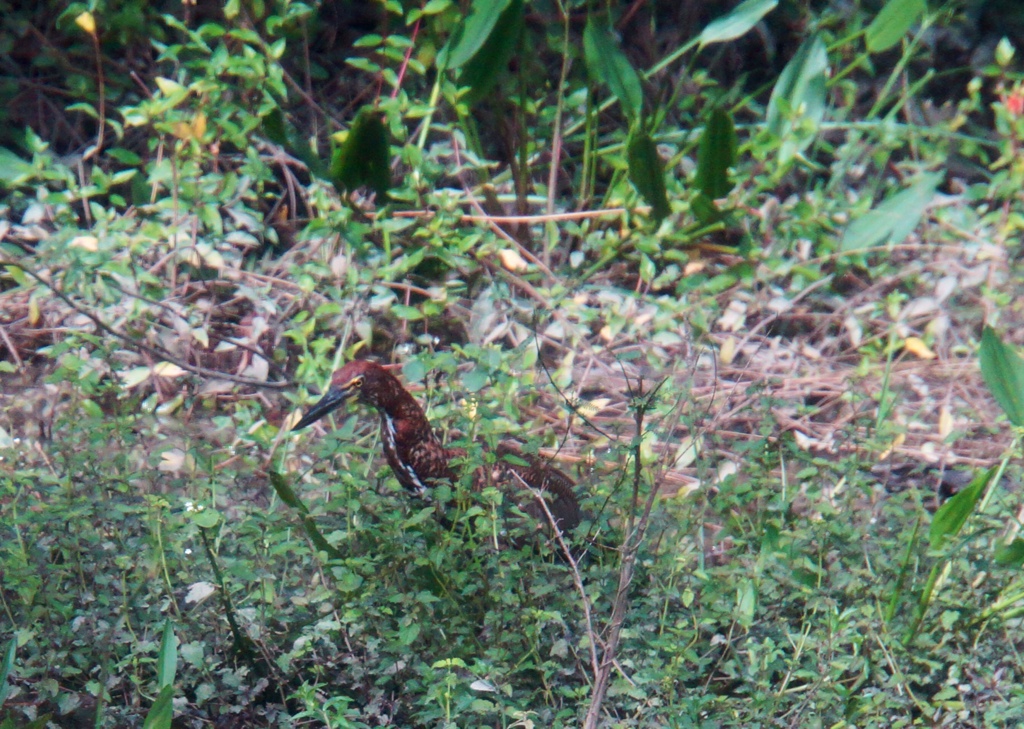
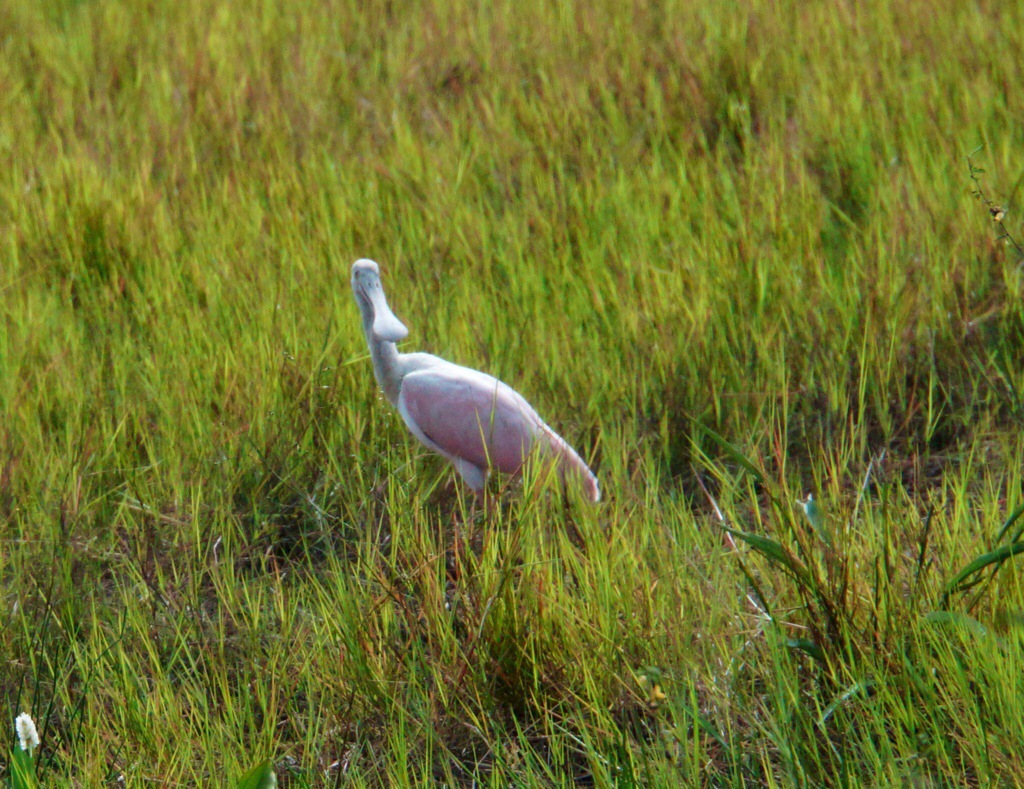
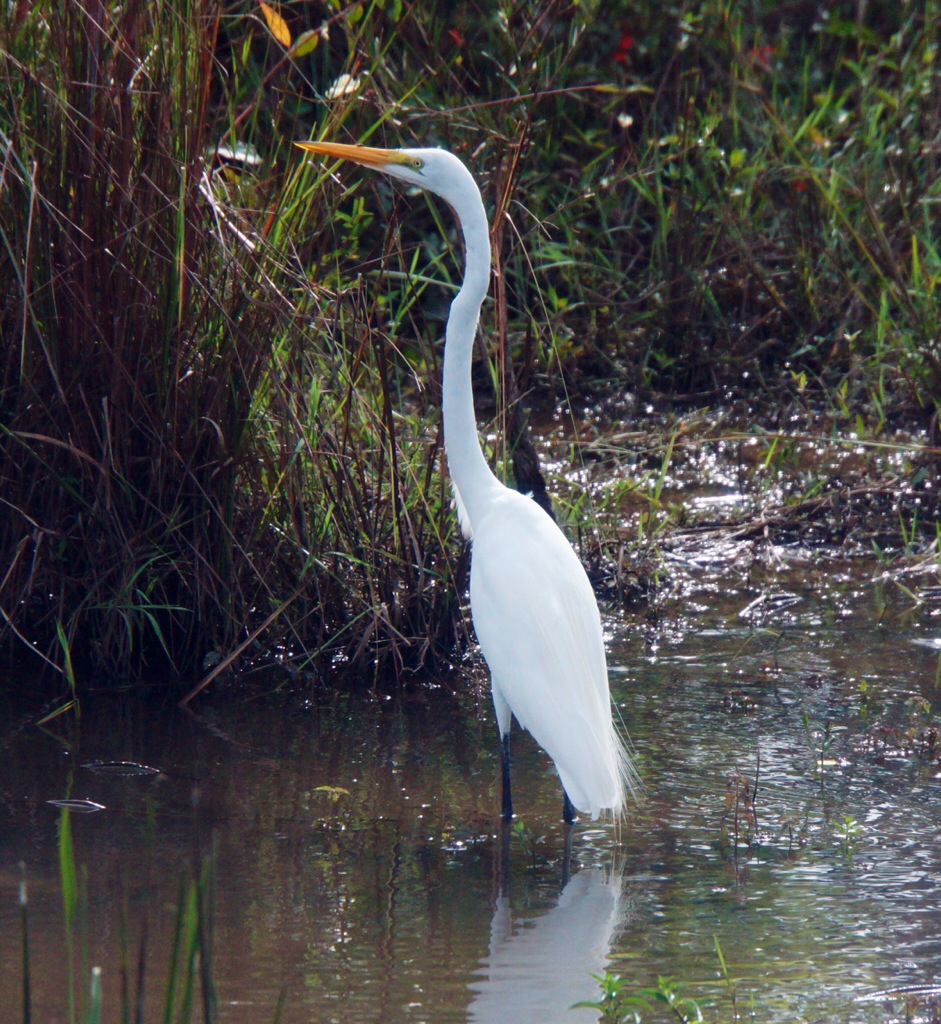
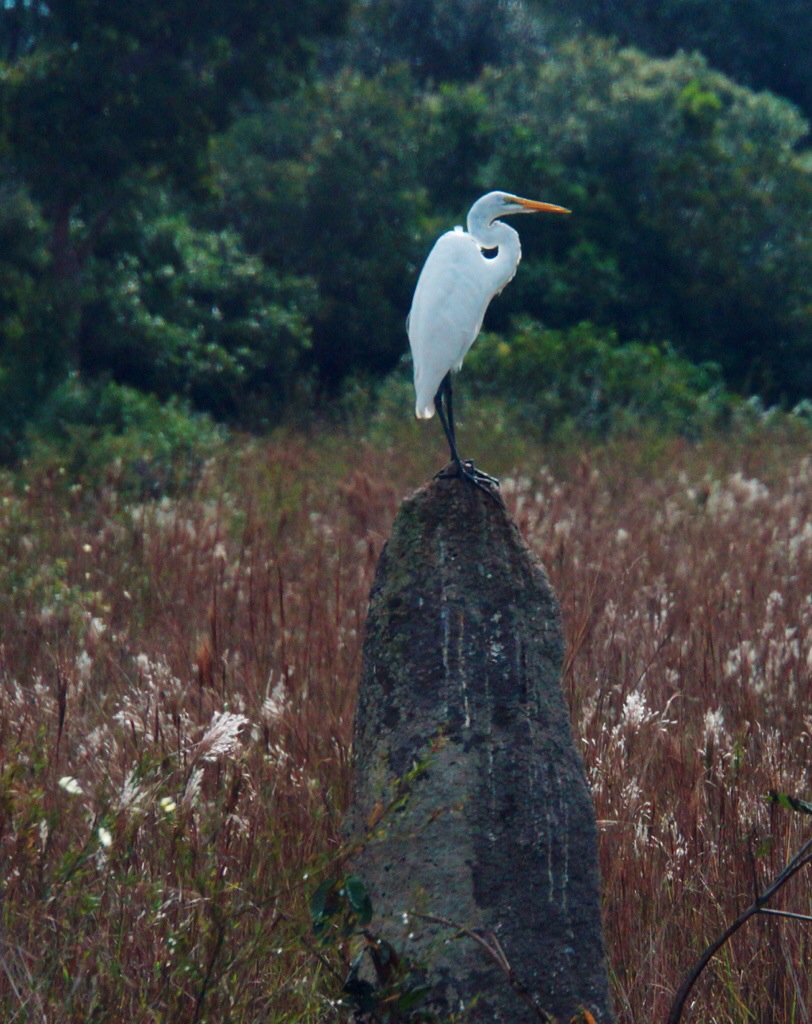
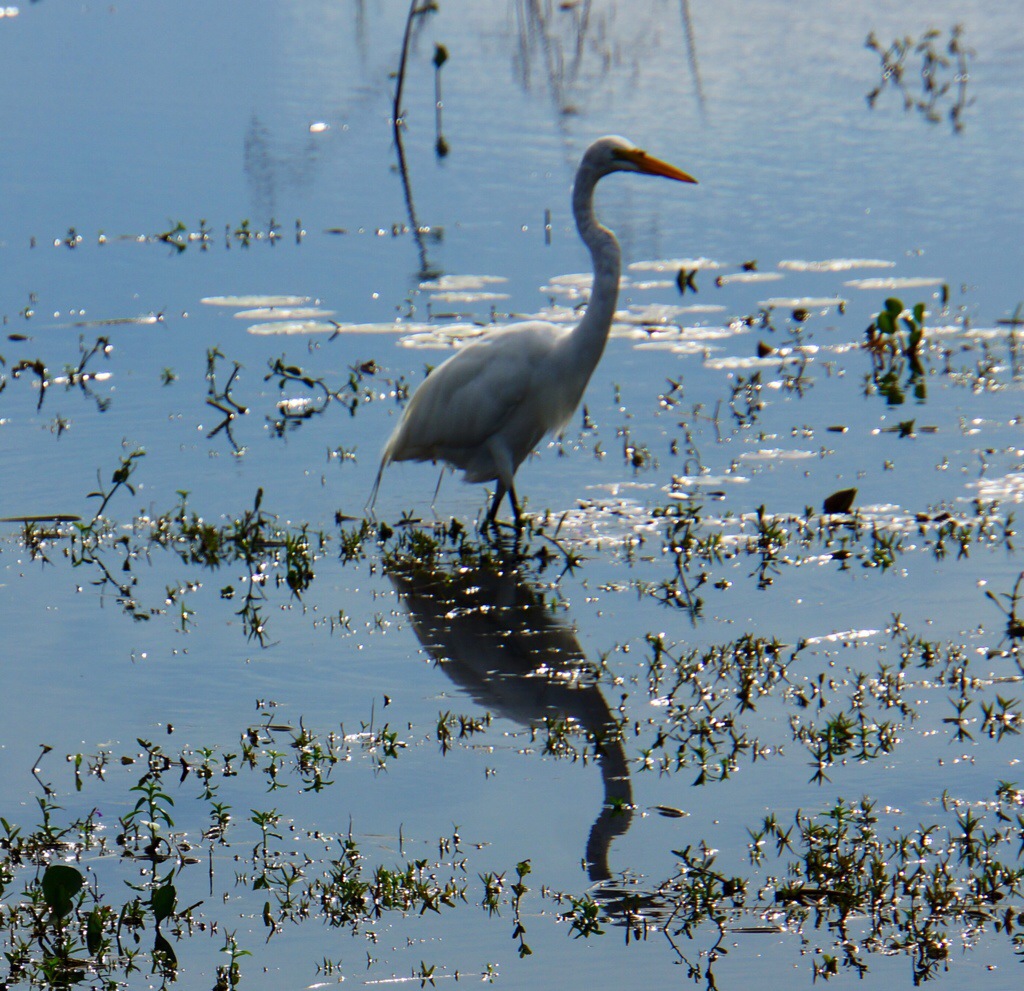
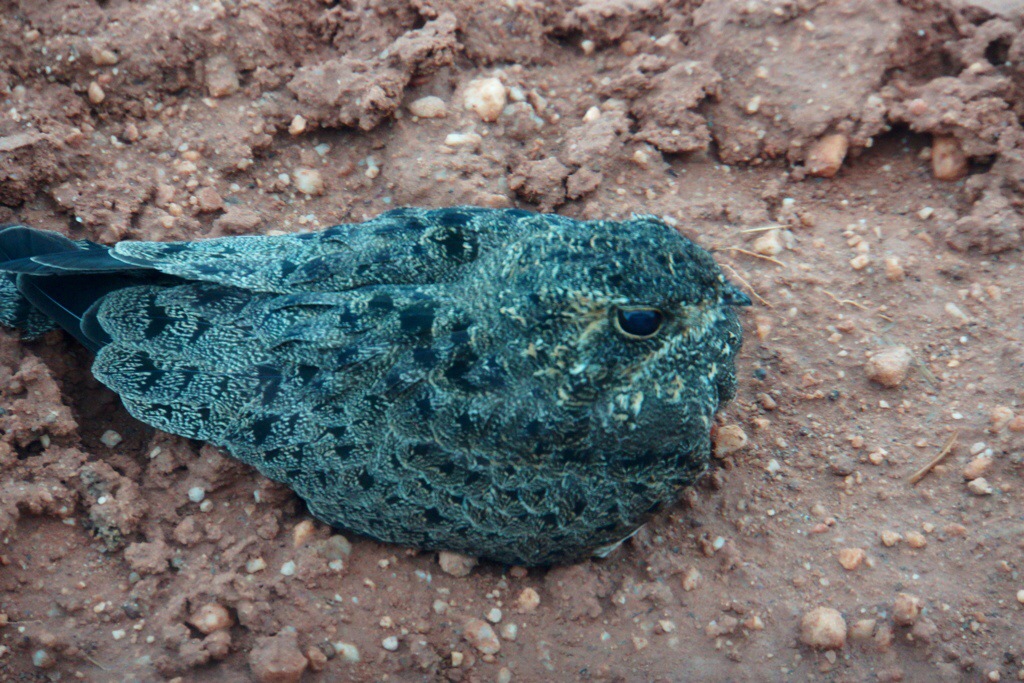
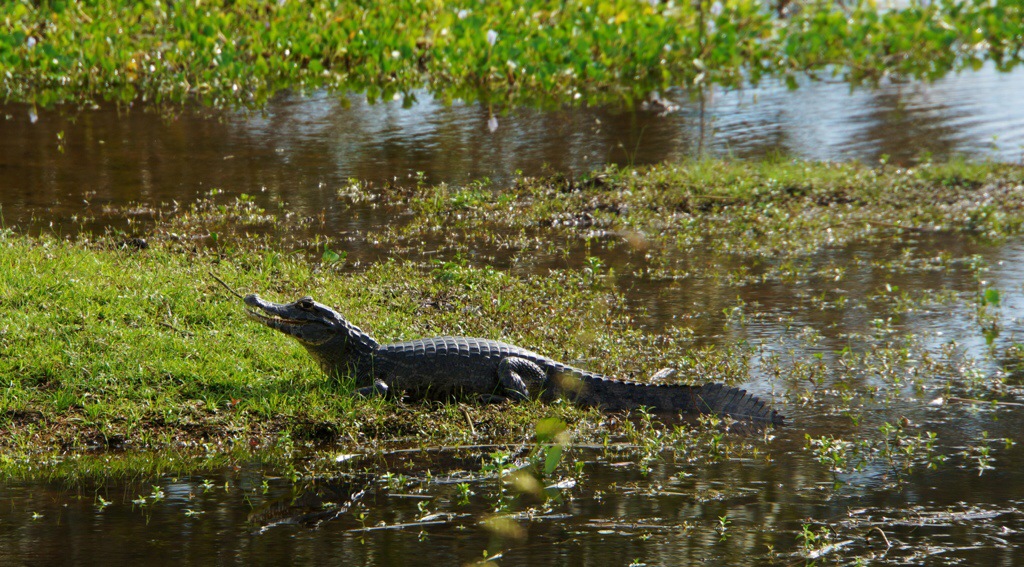
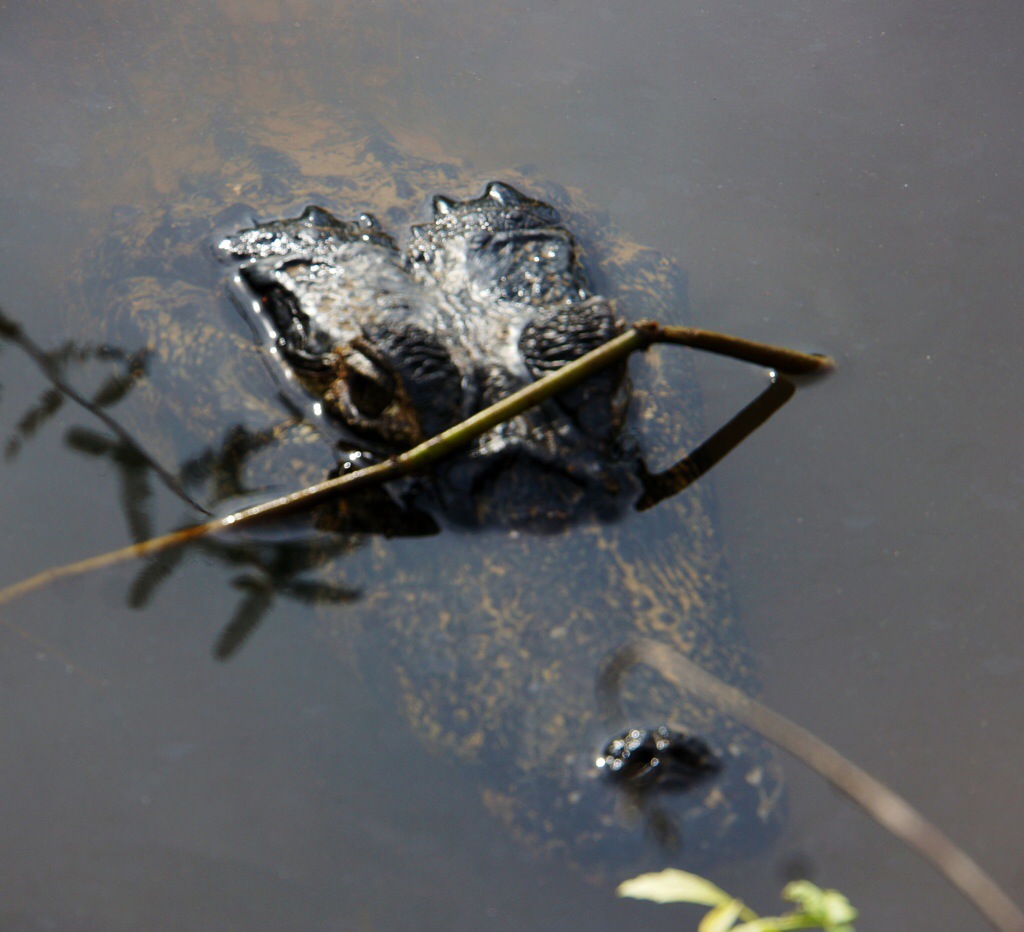
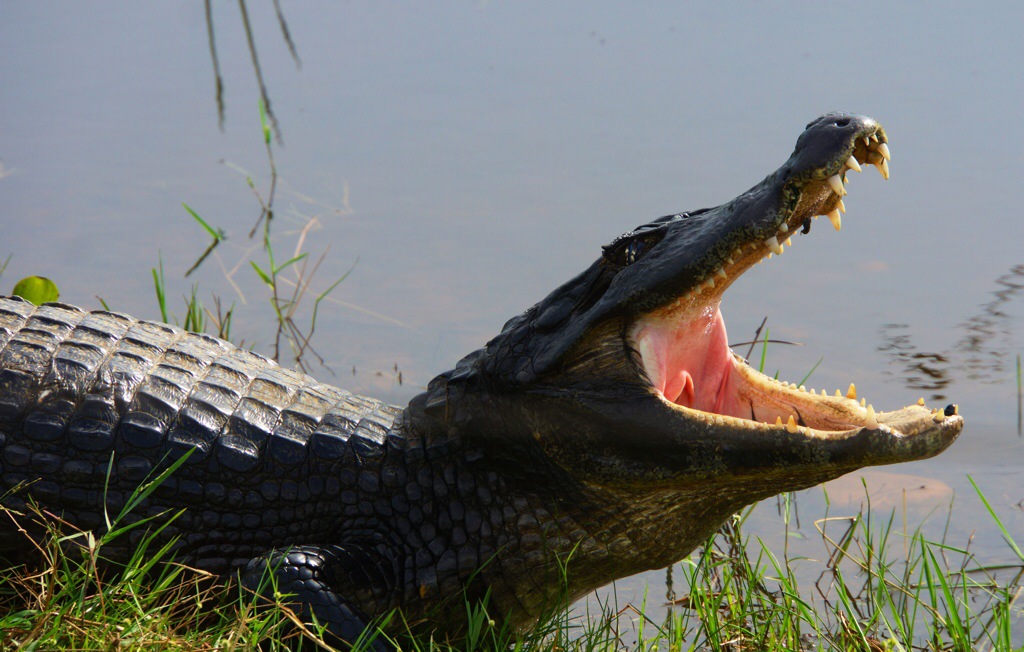
We are staying at the Araras Pantanal Eco Lodge, which is quite basic, but comfortable enough. There’s air conditioning and wifi, so nothing else much matters. Carol took an afternoon walk around the grounds, but I was exhausted from lack of sleep, so I crashed. We attended part of an interesting slide presentation on jaguars, then had a perfectly fine, but unexceptional buffet dinner. There are quite a large number of people here, including families with small children. We ate with our guide and Jean and Karen, then took about a 45-minute walk with Aynole under the stars and with the sounds of the swampy land loud in our ears. Managed to spot water buffalo, caiman, bats and a few other animals back to the room to blog and retire at a decent hour.
May 1
Today is a national holiday, the Workers’ Day that is celebrated around the world, except in our country. We start it out with our usual breakfast on the veranda. One could get used to this.
We are picked up at our hotel by, Rodrigo, a new guide from another company, who is taking us to the favela (shanty town) of Pavão-Pavãozinho, which stands on a hill overlooking Copacabana beach. Carol asks whether it’s dangerous, and Rodrigo says, wryly, “I will get you back.” Many of you probably will have read about the riots in a Rio favela that made international news, less than a week ago. Well, that’s the favela we are going to.
We walk down the very steep hill from our hotel to the train station below and take a train to a station close to the favela.
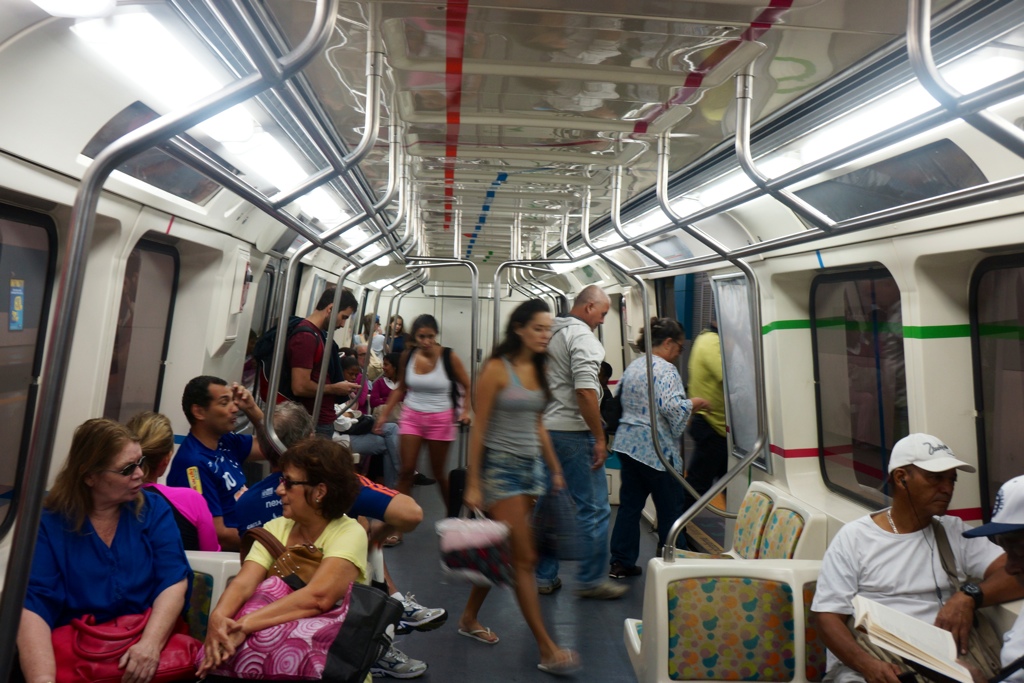
On the train, we learn that Rodrigo is quite an extraordinary fellow. He’s about thirty and, for starters, speaks Portugese, English, Spanish, Dutch, German and French. As his girlfriend is Norwegian, he’s learning that, too. He runs tours that are oriented to social projects, a bent that he gets from his mother, who long ago started a project to help aged people in Rio. In addition, Rodrigo helps businessmen from Europe, largely Dutch, find potential investments in Brazil, in agribusiness and other types of ventures.
Rodrigo has established relationships with many of the people in the favela we are visiting, has organized New Years parties that bring people up to the favela to view the activities on Copacabana Beach below.
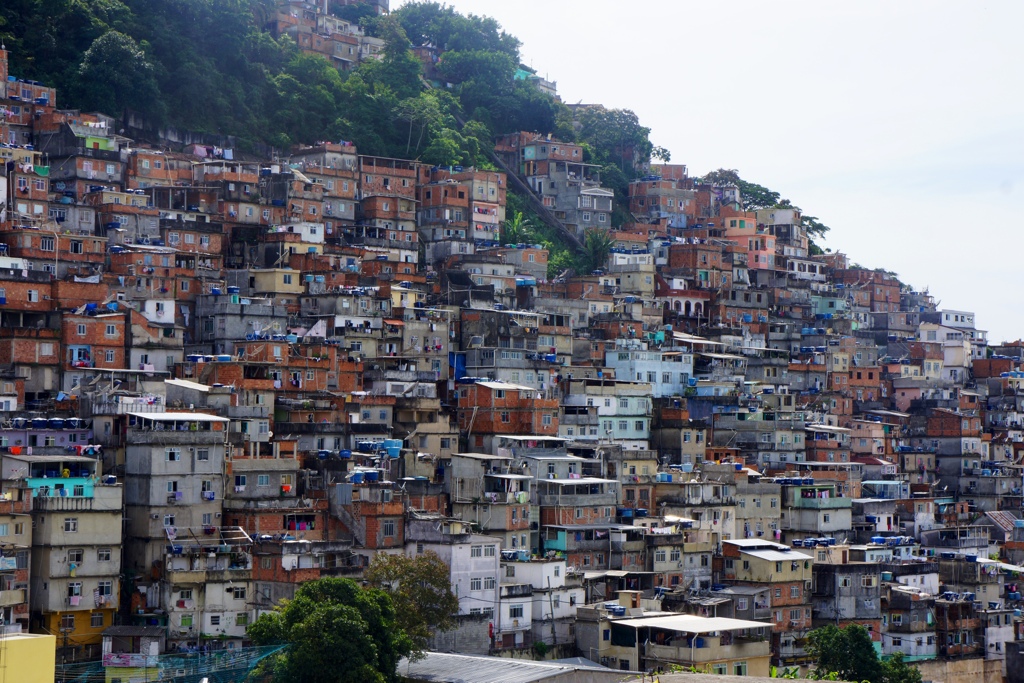
He also has favela residents involved in the tours he does, thus getting them funds. His goal is for them to take it over. Both of Rodrigo’s parents grew up in favelas and made their way out, against substantial odds through hard work.
Rather than try to integrate what we leaned into poetic form, which is Carol’s bailiwick anyway, I’ll just try list some of those things, in no particular order.
1.8 million of Rio’s 6.2 million people live in favelas.
Many of them started in the late 19th century, when slavery was abolished and people moved into the cities. Housing was built by these people, originally of wood, and they squatted on the land. Recent laws allow people who have lived in a place for five years to get title to the property.
As this favela abuts a very well-to-do area and affords great water and beach views, land is starting to appreciate and beginning to be bought by people from outside the favela. The government has begun to put many police in the favelas, originally to wrest control from drug lords. Police are viewed by most in the favela as the enemy.

The recent riots broke out when police shot and killed a popular dancer, who happened to be in the wrong place at the wrong time. Rioting broke out and fires were set. The photos below include one of a burned out car and another wall with a mural of the dead dancer.
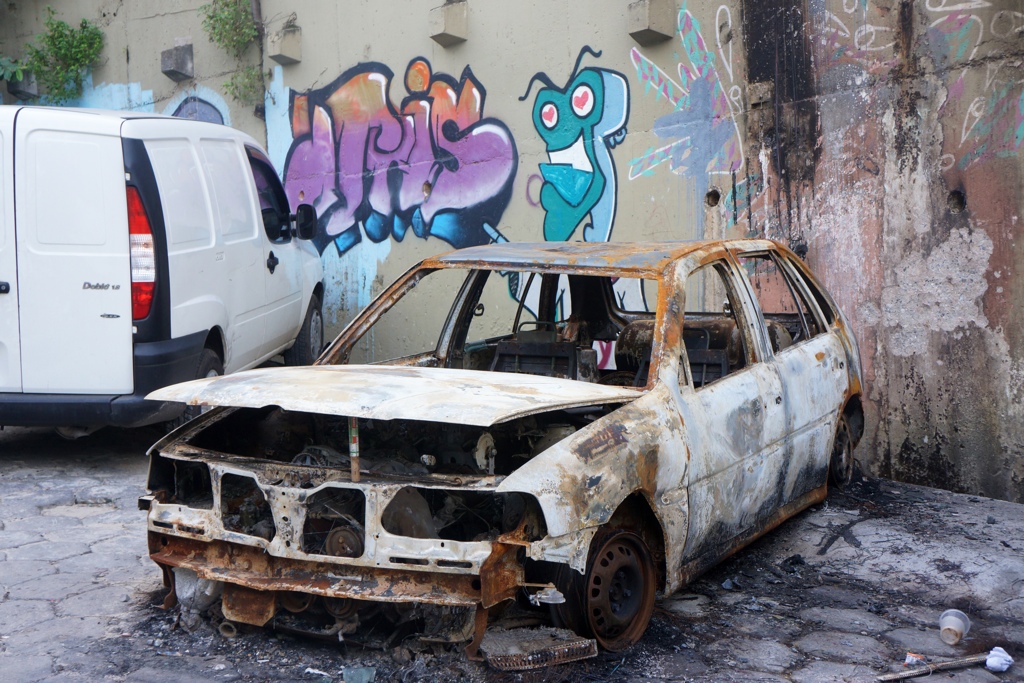
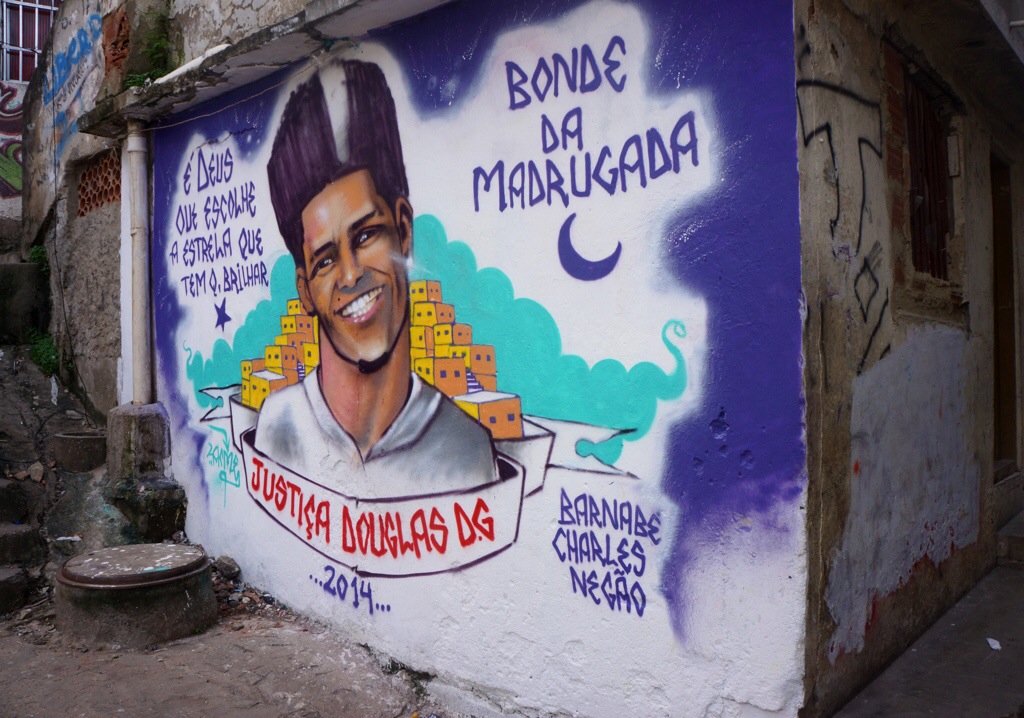
Though favelas are supposed to be very tough places, oddly, Carol and I both feel safer in the favela than we did in downtown Rio yesterday. This is largely because we are with Rodrigo, a tall, handsome young man who clearly has excellent relations with favela residents.
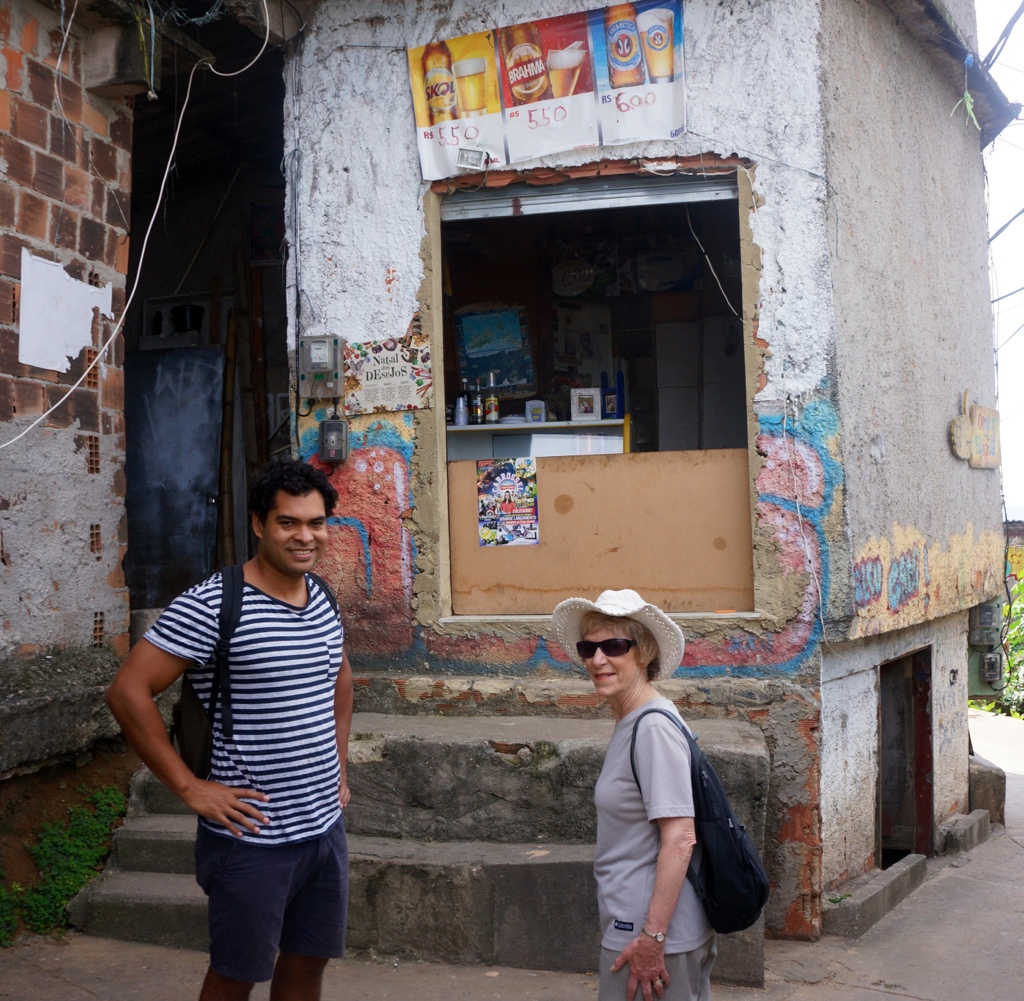
The government has paved some roads, put in a new subway station with an elevator, pumped water up to the houses, put in a new school, etc. Things are improving, but there’s still a long way to go. Everyone in the favela has a cellphone, according to Rodrigo.
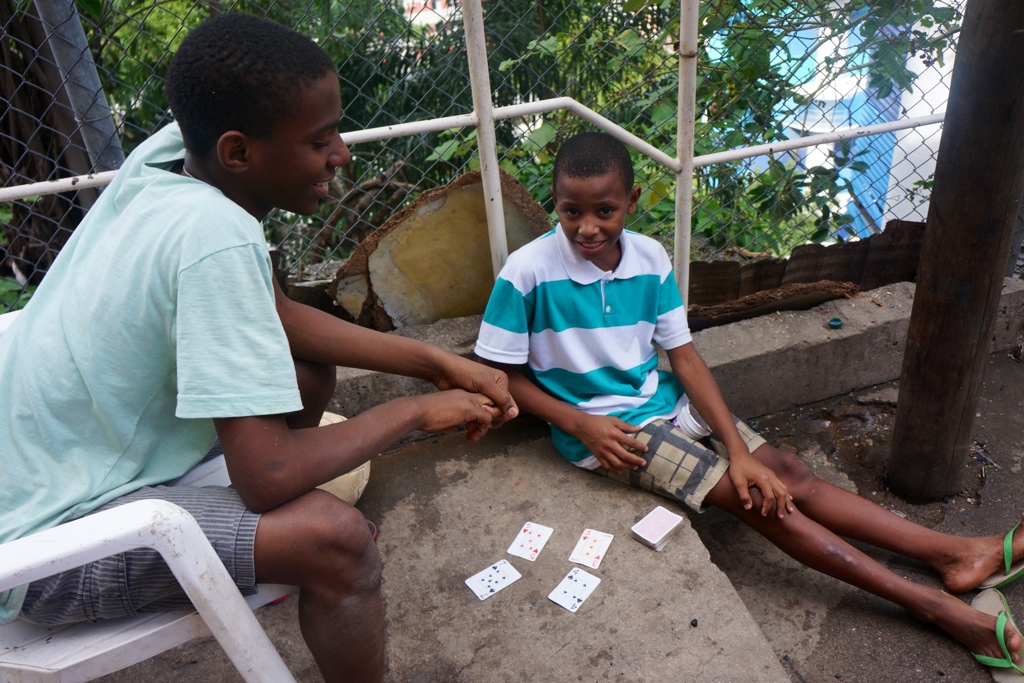
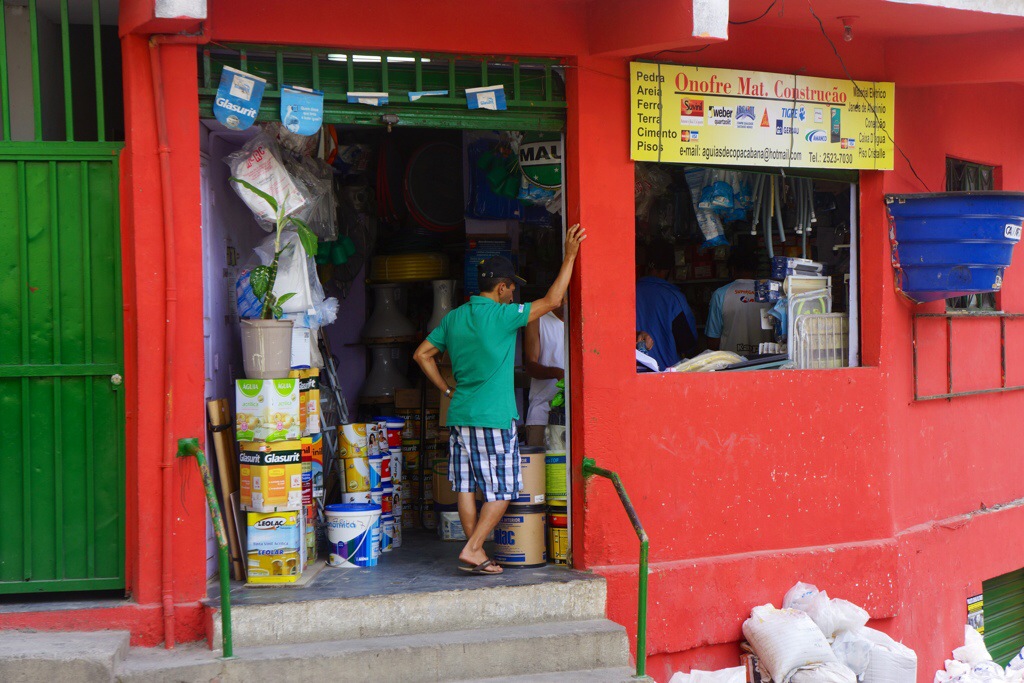
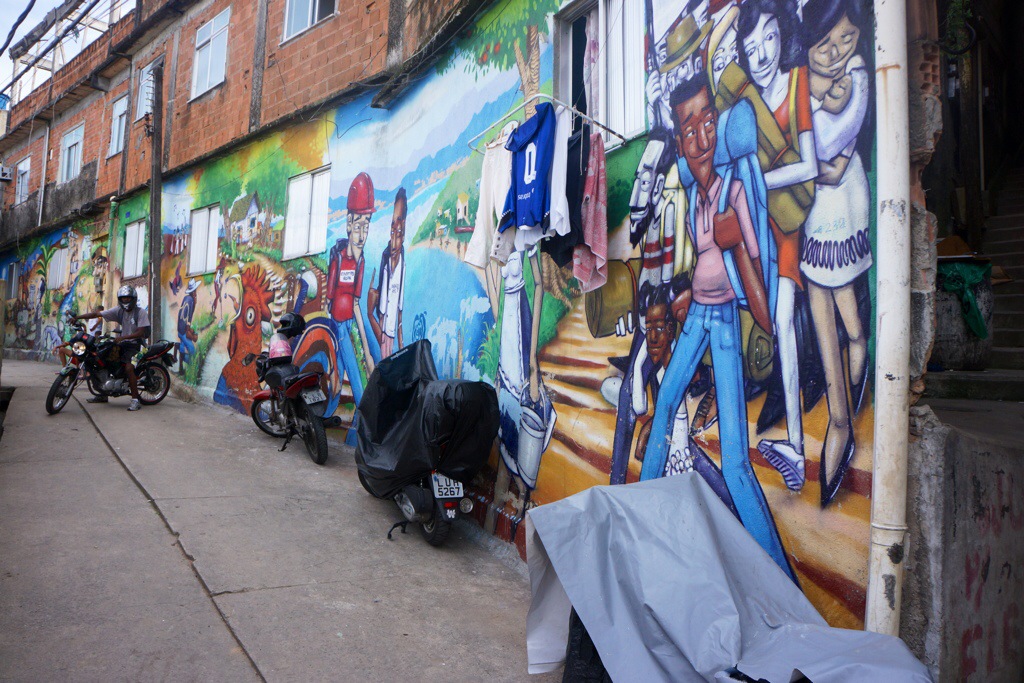
We watch a soccer game on a cement lot, meet a young favela artist and see some of his paintings, then walk all the way down the hill and stop for a soft drink.
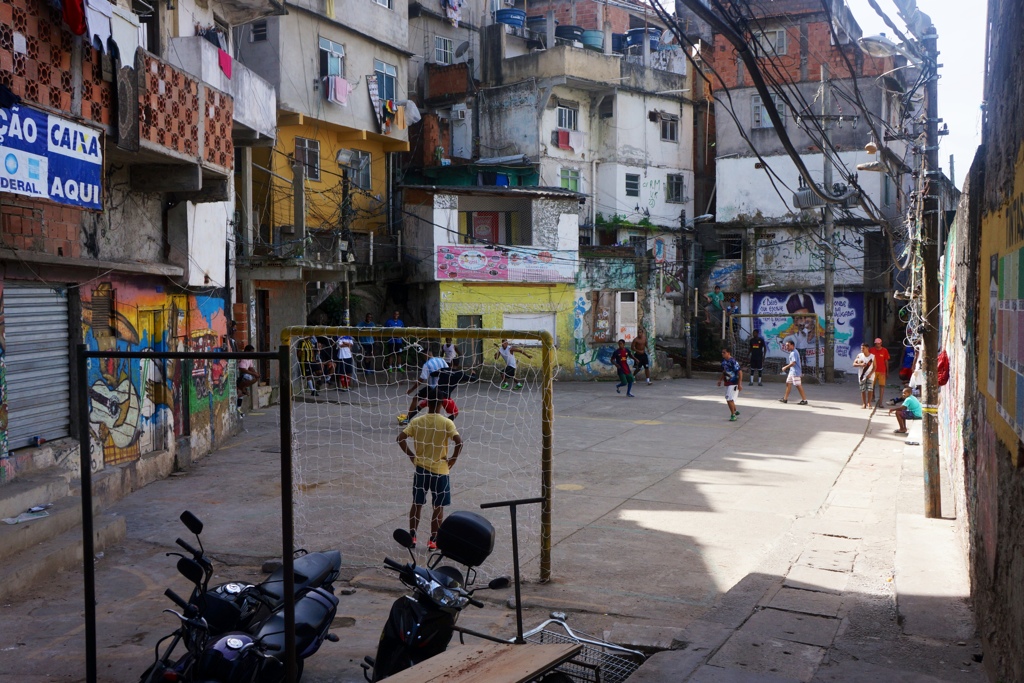
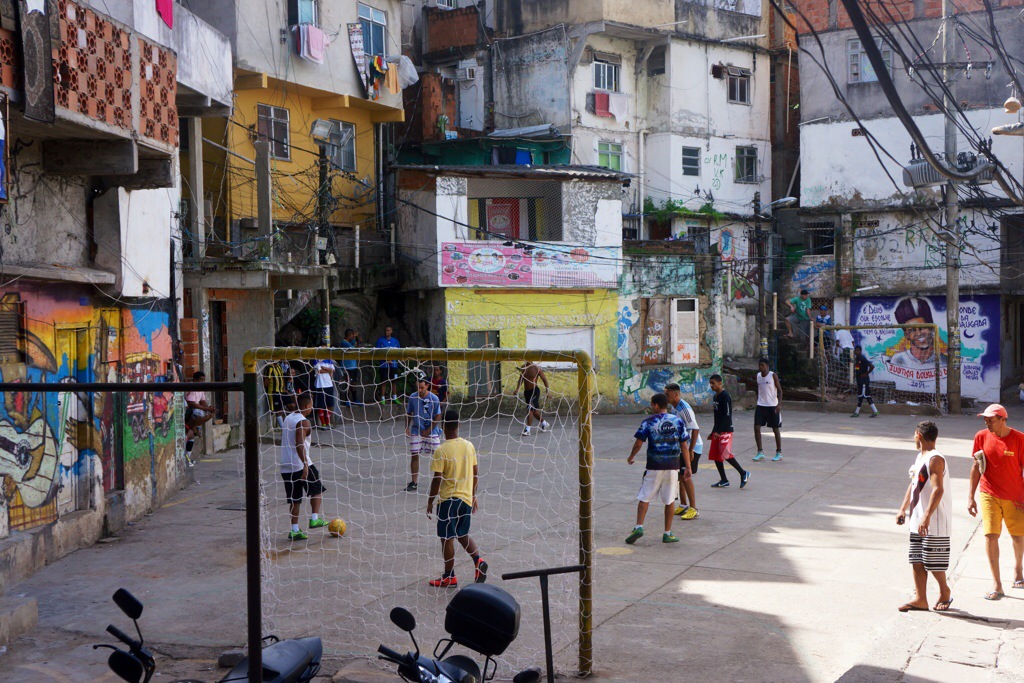
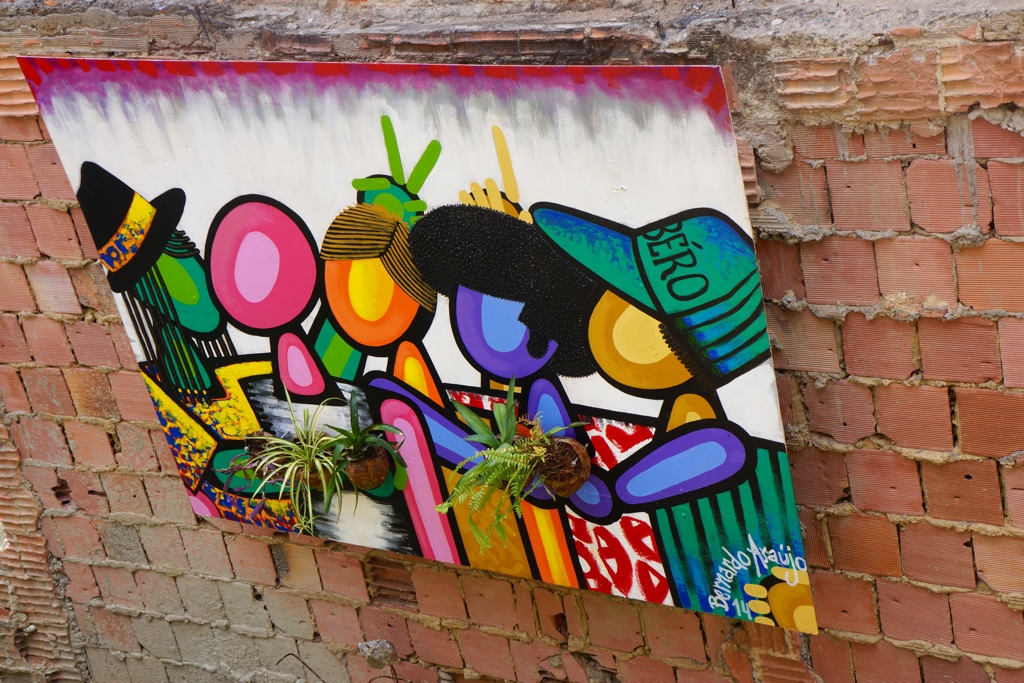
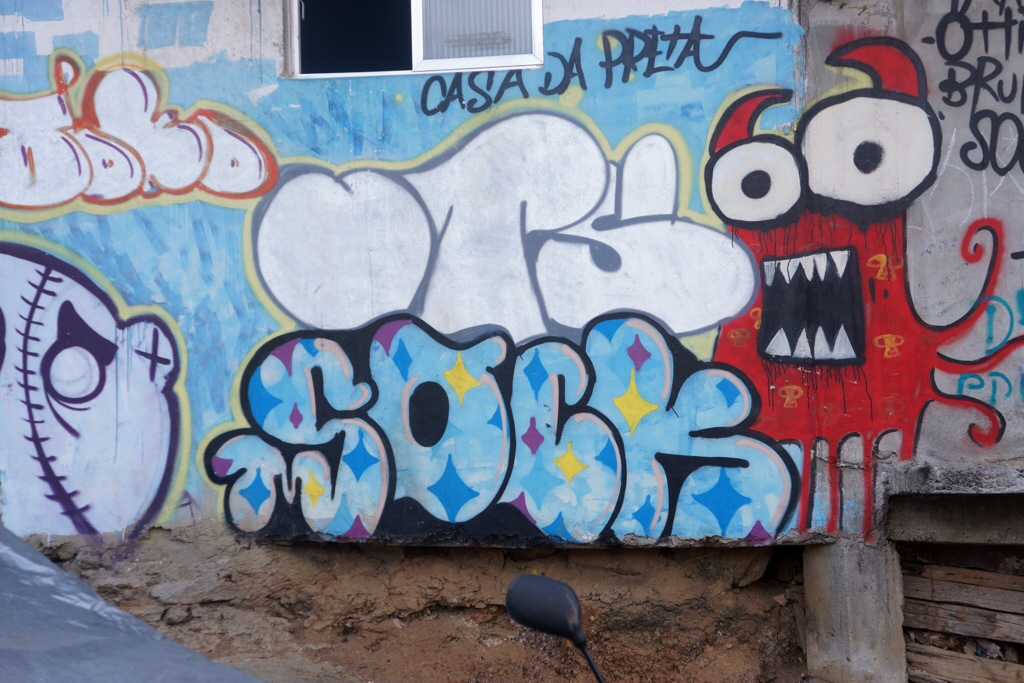
Rodrigo puts us in a taxi, headed for the botanical garden. This was not to be part of our tour, but we’ve decided to add it. Luiz offered to pick us up and take us there to show us around, but we didn’t think it was worth the fee and that we could as easily do it on our own. The gardens are huge and impressive, but we’re too tired and hot to do more than go to see a special orchid exhibit, then take a nice, air-conditioned taxi back to our hotel.
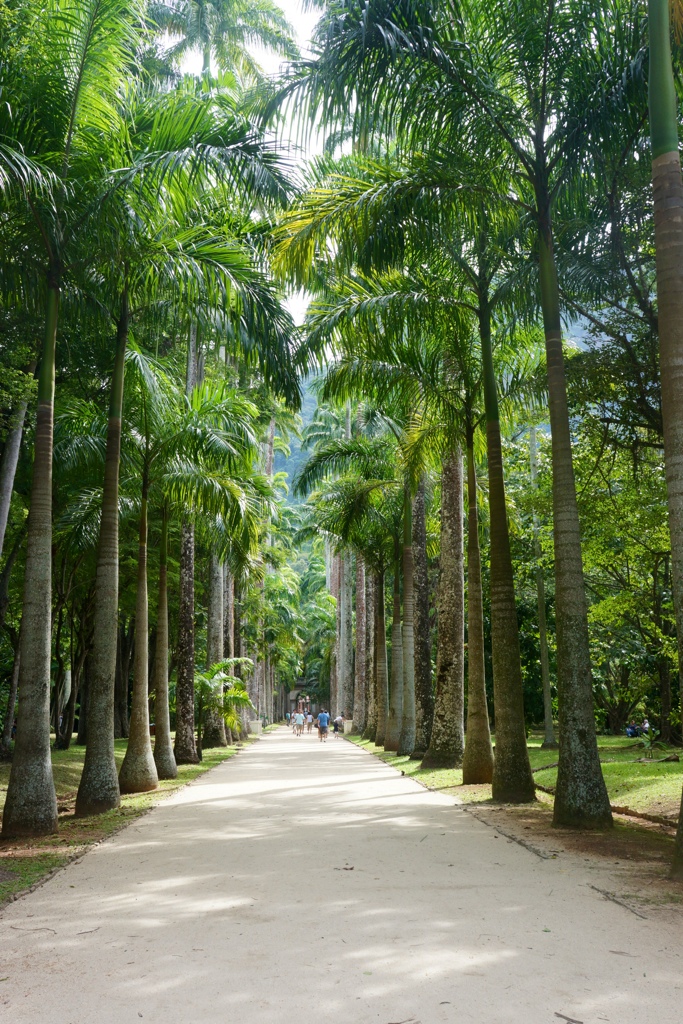
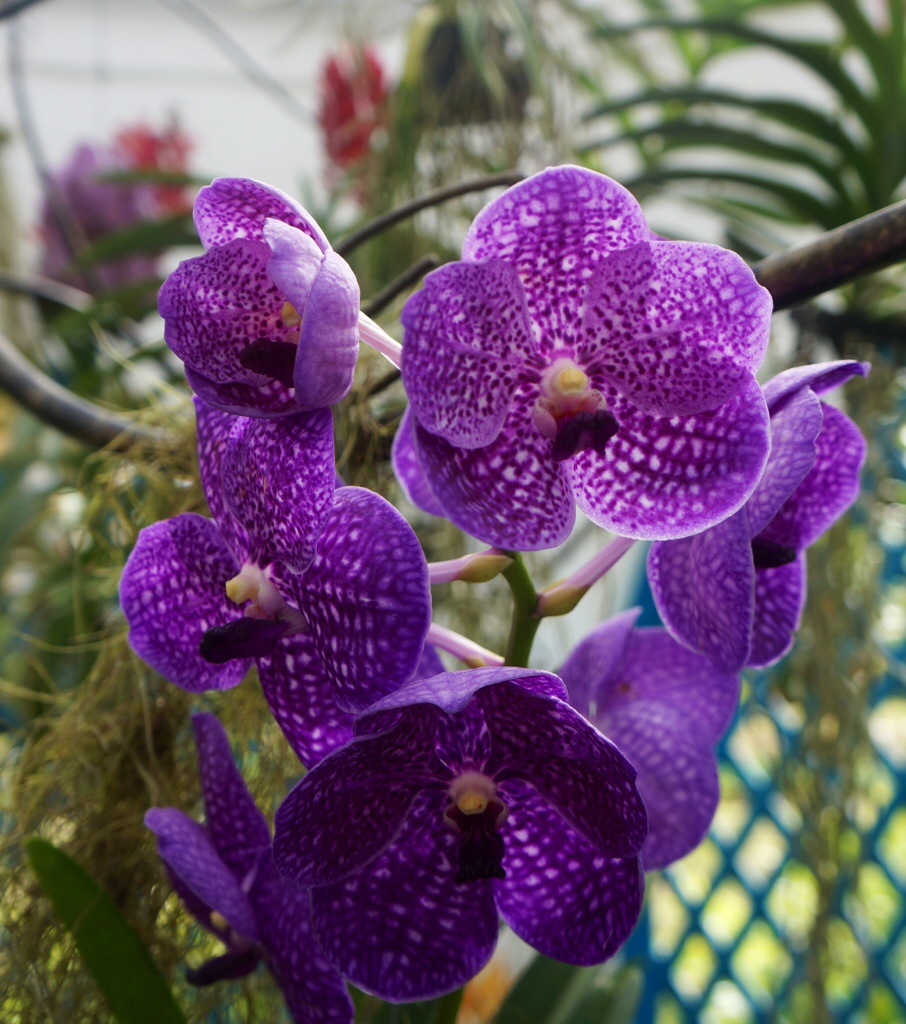
We have large, delicious cheese sandwiches on our veranda. We’re happy to have almost five hours before dinner to relax, blog, pack, shower, etc.
We take a walk over to the studio of an artist whose paintings we’ve admired at the hotel. He is very gracious in inviting us in, showing us around and introducing us to his wife. His current work is with bottle caps, interesting in its way, but a far cry from what we’d admired. He spent five years in New York in the 80’s, studying new techniques for his art. He lives and works I a beautiful old house with lovely views and heavy, chained security.
We walk from there to a local restaurant that had been recommended by our hotel, and we have a very good meal, filet mignon covered with cartelized onions and a nice wine sauce, wrapped in greens and sitting on potatoes. We come back to the hotel, settle up our bill and prepare to taste the night life of Rio.
Rio is renowned for its samba music and informal, laid-back way of life. One characteristic aspect of Rio’s nightlife is the many hidden venues where cariocas (Rio’s inhabitants) gather for a roda de samba. The atmosphere is that of a typical street party – a group of musicians plays well-known samba songs around a table, while a crowd of onlookers sings along to the music, drinking ice-cold beer or caipirinhas. Tonight we pretend we’re cariocas, though the discerning native could probably tell us apart. The first place is a really local bar in which we may well be the only outsiders. People know and greet each other and the musicians. We stay for two or three sets.
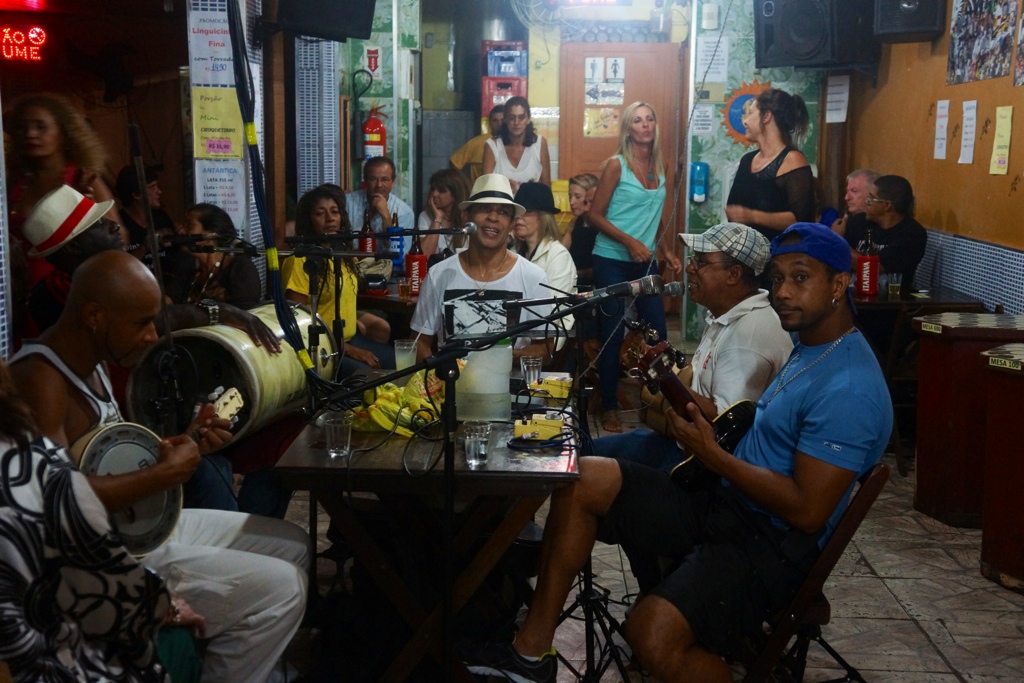

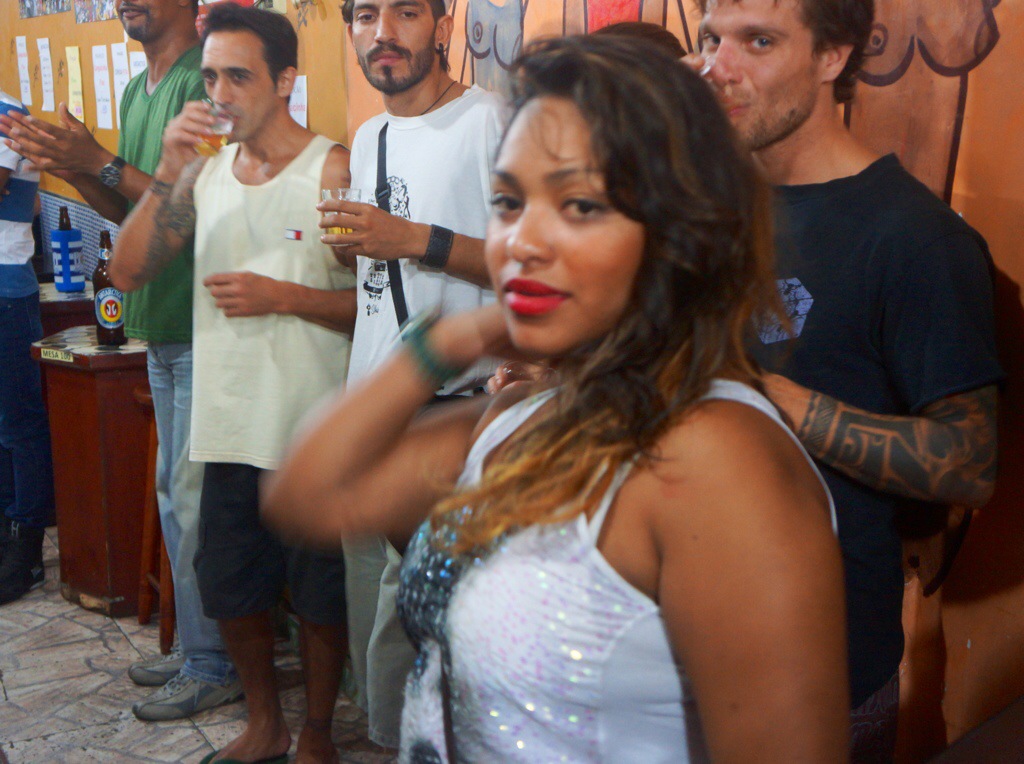
Afterwards we continued to a typical samba bar in a large, funky restored building in the bohemian district of Lapa, to hear live music.
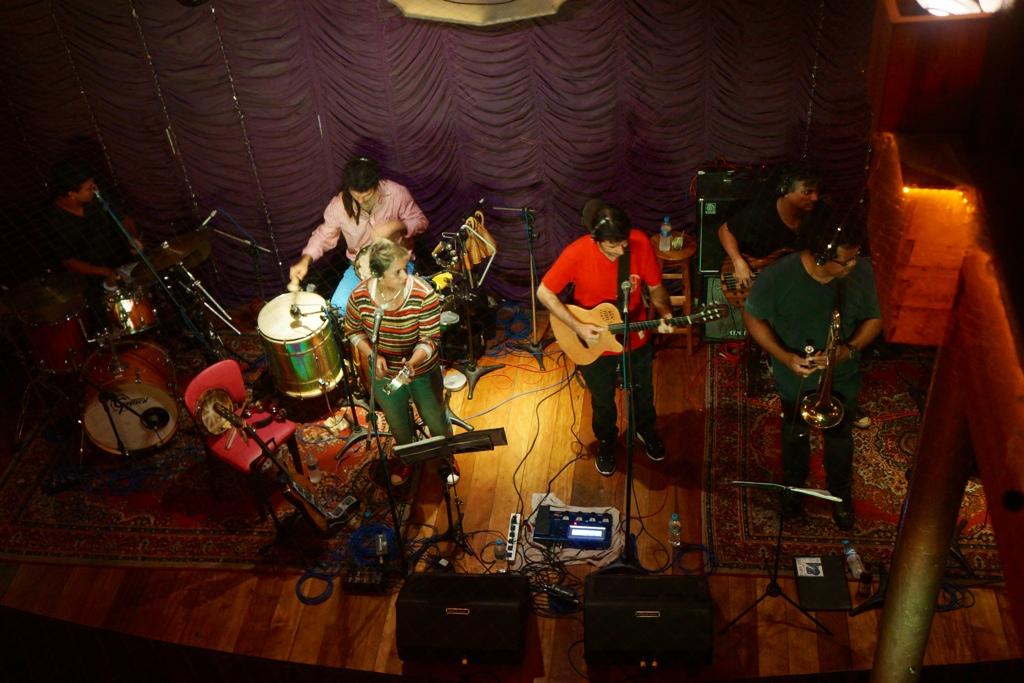
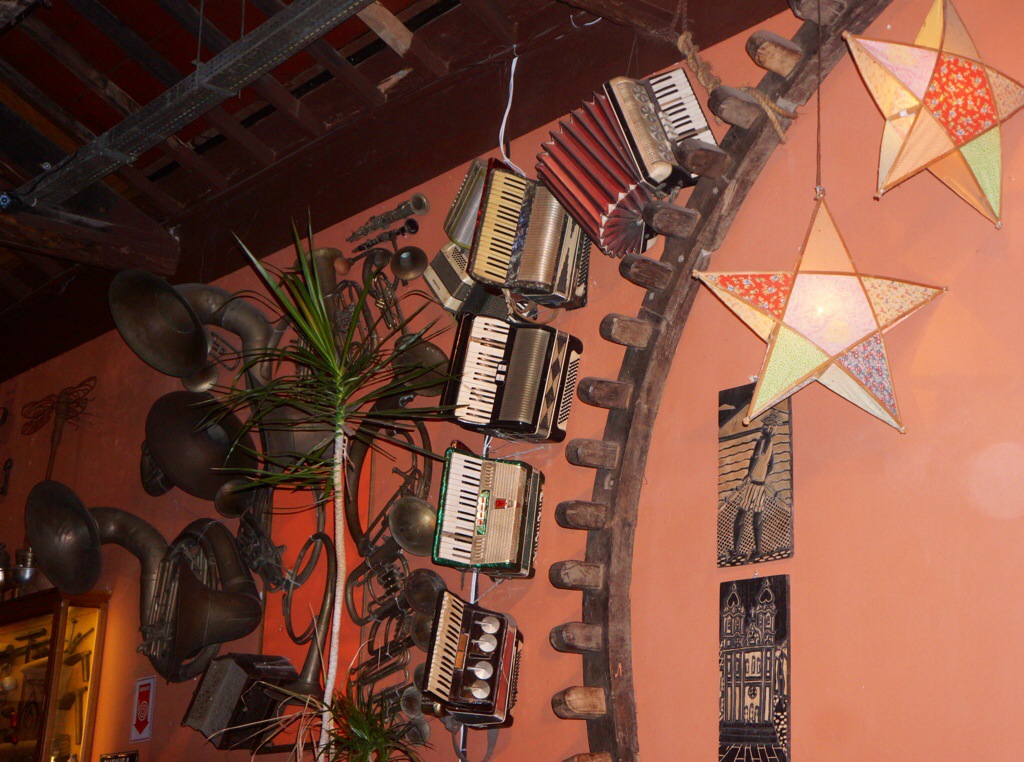
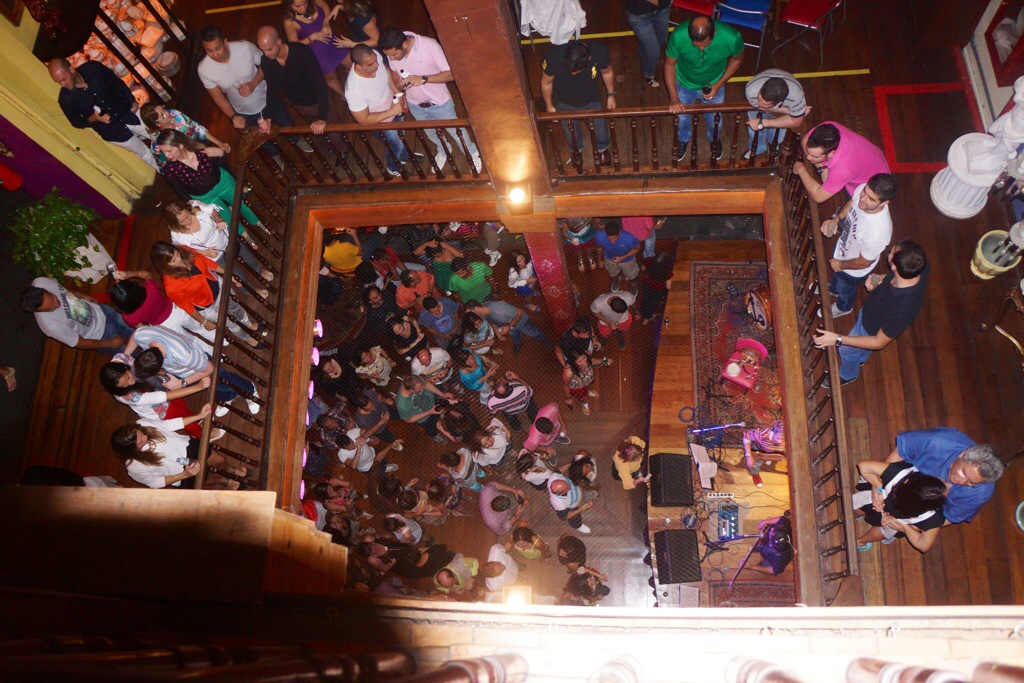
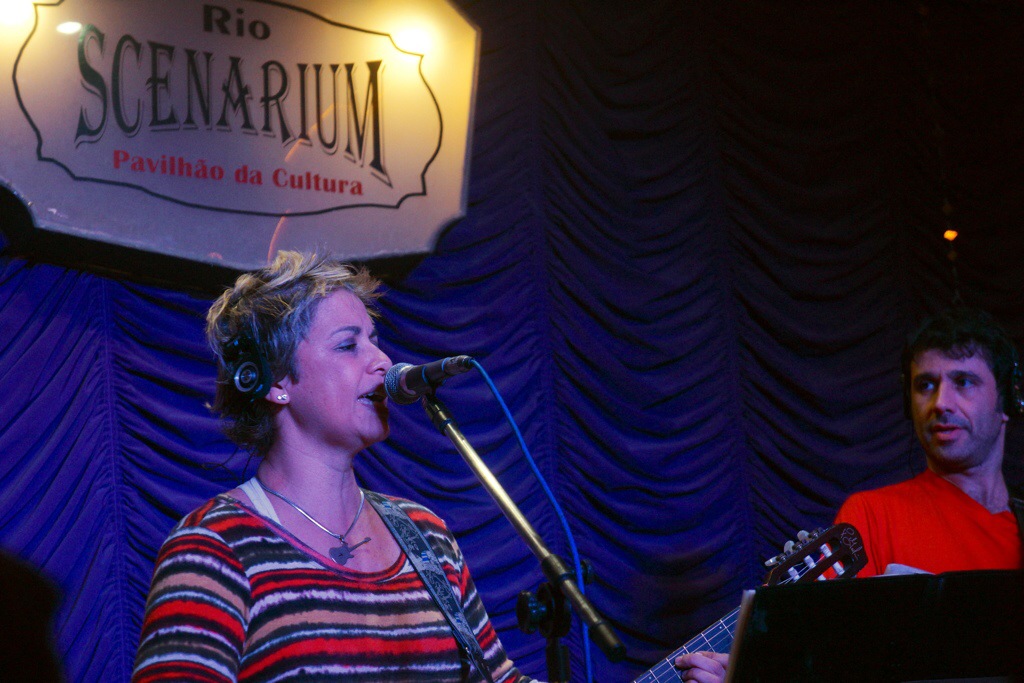
We call it quits after this bar, say goodbye to Rodrigo and taxi home, arriving at 12:15, not much before we need to arise at 5 tomorrow morning. We’re looking forward to getting to an area where any danger is likely to come from non-human animals.
April 30
Another breakfast on the veranda on what looks to be another picture-perfect, sunny day in a Rio. Yesterday’s weather was as good as it gets. So far, the beauty of Rio seems to be as seen from atop the city, and driving along the beautiful beaches. What we’ve seen of the city itself does not distinguish it from other large cities. One doesn’t feel the beauty of a Paris or Barcelona, or, closer to home, of a San Francisco, or, yes, a Chicago. But we’re going to explore the city more today, so, stay tuned.
But first, I seem to forget a something each night when I post the blog. Last night, I forgot to report that the 29th of each month is gnocchi night in Italian restaurants, so we shared three different kinds of gnocchi. Good, but very rich. Luiz knew of this and told us that the custom is that you’re supposed to put a dollar under your plate to bring good luck. We didn’t know about that, though.
Luiz picks us up and we take a very bumpy local bus over cobblestone roads down to the city. Carol declines a seat offered to her by several on the bus, because she does not have her hard seat, which she lost in Salvador. We arrive downtown and walk around a good deal. We learn a lot from Luiz about Brazilian history, and see both some of old Rio and new Rio, including an amazing busker who poses motionless as a statue.
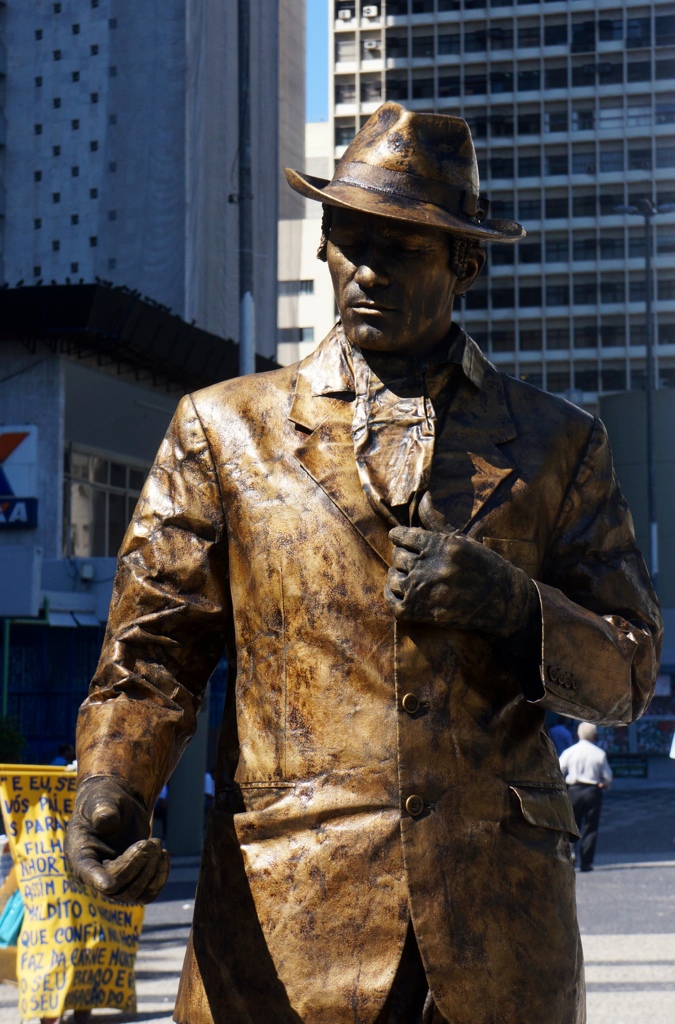
We experience another small world phenomenon, encountering our friend, Scott Turow. Well, not exactly, but we see a translation of his book, Innocent.
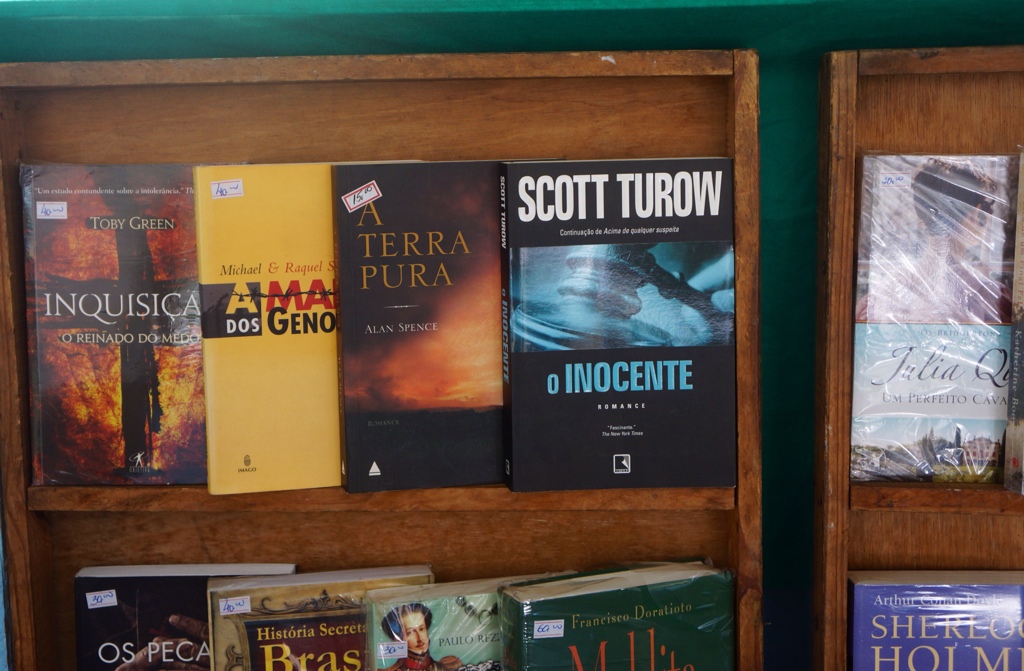
It was Scott who at lunch a week ago had cautioned me to be very careful in Brazil. The wisdom of Scott’s advice was demonstrated yet again when, in broad daylight in downtown Rio, a young man bumps into our guide intentionally and tries to snatch a chain that Luiz is wearing around his neck. Luiz seems unaffected and more or less shrugs. A well-dressed man who witnesses this hands me a small plastic bag and motions for me to put this bag around the camera that I’m wearing around my neck. This experience makes us suspicious of everyone, watching those around us continuously, which is not a comfortable way to live. It makes me think of those who confront more serious threats of violence regularly in their lives and how fortunate I am not to be subjected to that. Our friend Andrew last night spoke of how this fear is the worst part of living in Brazil. He is reluctant to take out his iPhone on the street, locks car doors and spoke of how he knows several people who travel in armored cars. So, maybe you want to think twice about that trip to Brazil.
We walk to see the new art museum from the top of which we can get sense of the ambitious projects being undertaken in preparation for the Olympics, including destruction of a highway that had divided city. From the museum we can see from above the old and new Rio that we’ve seen at street level this morning, including the golden interior of a Baroque church.
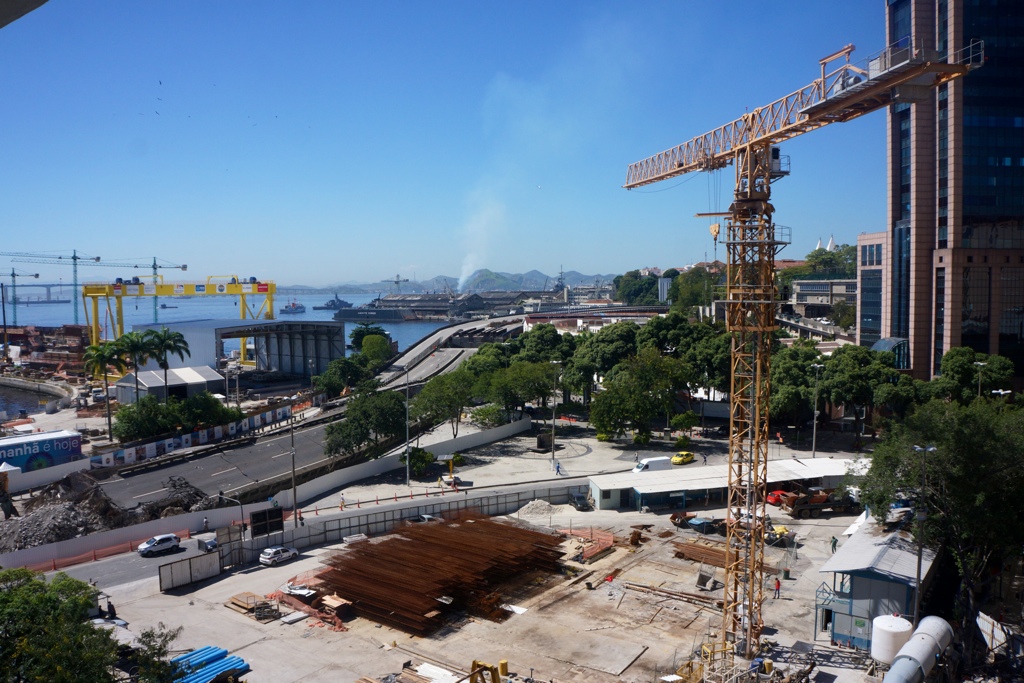
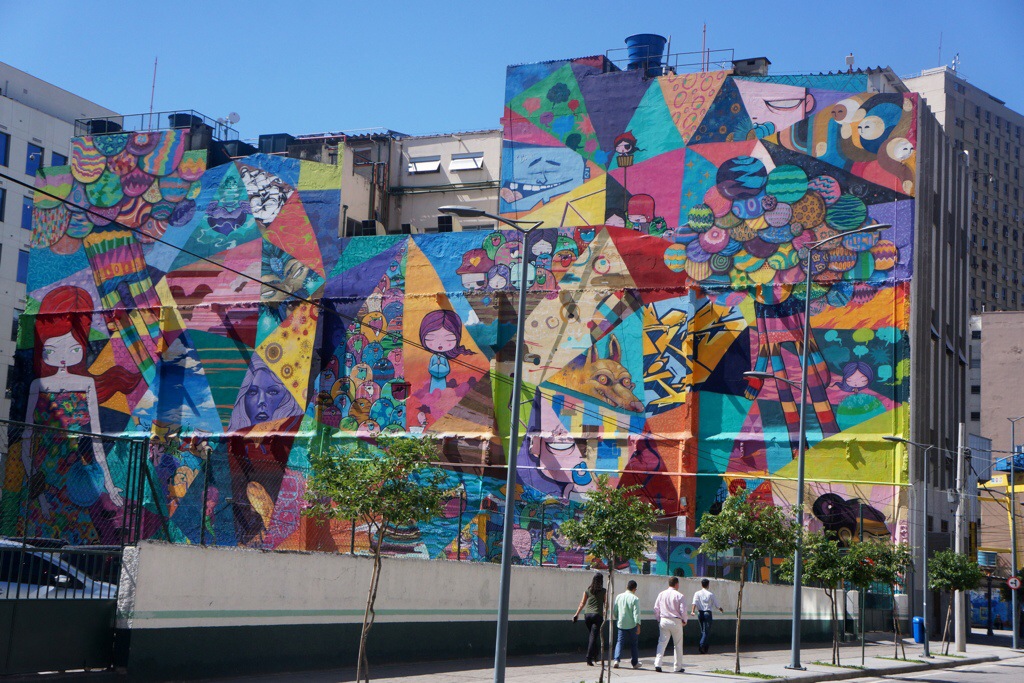
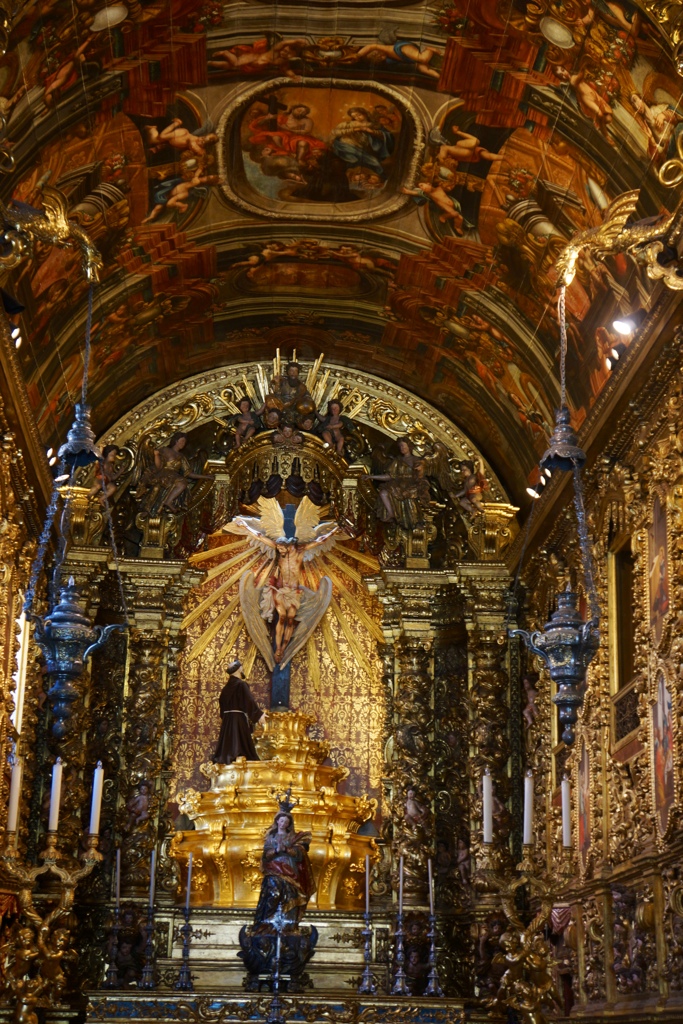
We take a taxi to get to lunch at the iconic restaurant Confeitaria Colombo, the oldest coffee shop in Rio de Janeiro, originally opened as a meeting point for intellectuals and aristocrats. Built in 1894 and refurbished in 1914, it is a living portrait of Rio’s Belle Époque, retaining much of its Art Nouveau charm, with famous Belgian mirrors in hardwood frames and lovingly preserved Italian marble benches. See if you can find Carol in this photo.
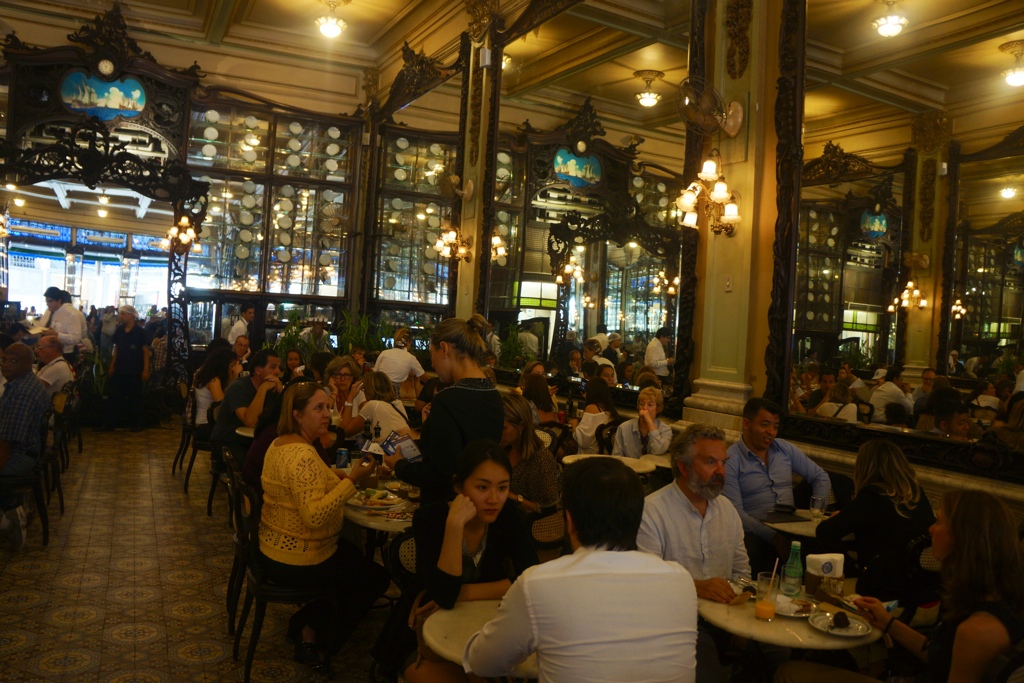
After lunch we take a half-hour tour of the opera house with its elaborately refurbished interior, done in the very early twentieth century for the centennial of the founding of the Kingdom of Brazil, where we’ll see a performance this evening.
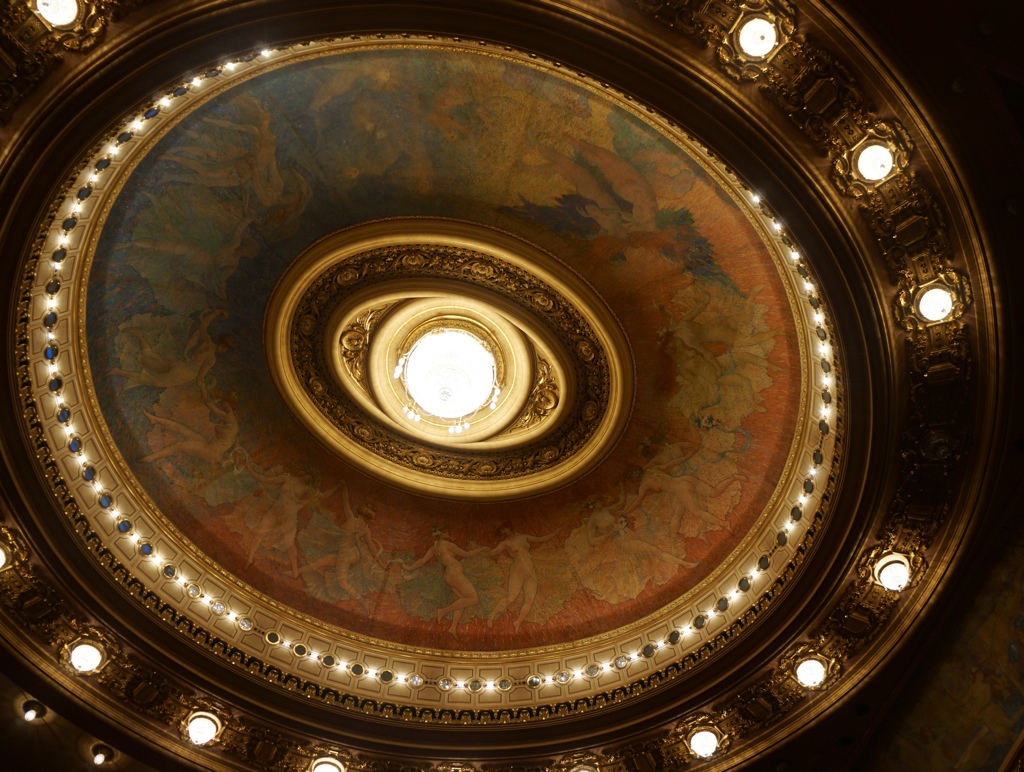
From the opera, we take a subway to Beth El, an orthodox synagogue. We are greeted warmly by the director, who studied in the U.S. And has two children living in Israel. We speak mainly English, but a few words of Yiddish and Hebrew are thrown in. This type of immediate connection is common whenever we stop at a synagogue when we travel.
Our host shows us around and encourages us to take photos. There is a beautiful tapestry above the ark and some very striking stained glass windows. The women are separated from the men and sit upstairs in a balcony. The congregation has a thousand members, and we’re sown a separate building that is used by younger congregants. Rio has approximately 50,000 Jews, San Paolo about 100,000 and there is a smattering elsewhere in the country.
Our host says that I should keep the kippah (yarmulke) he’s loaned me to wear while I’m in the synagogue, which I later discover was from Clara and Victor’s wedding on Nov 30, 2008. Amazing that today marks exactly 5 years and 5 months since Clara and Victor were wed. Doesn’t seem possible.
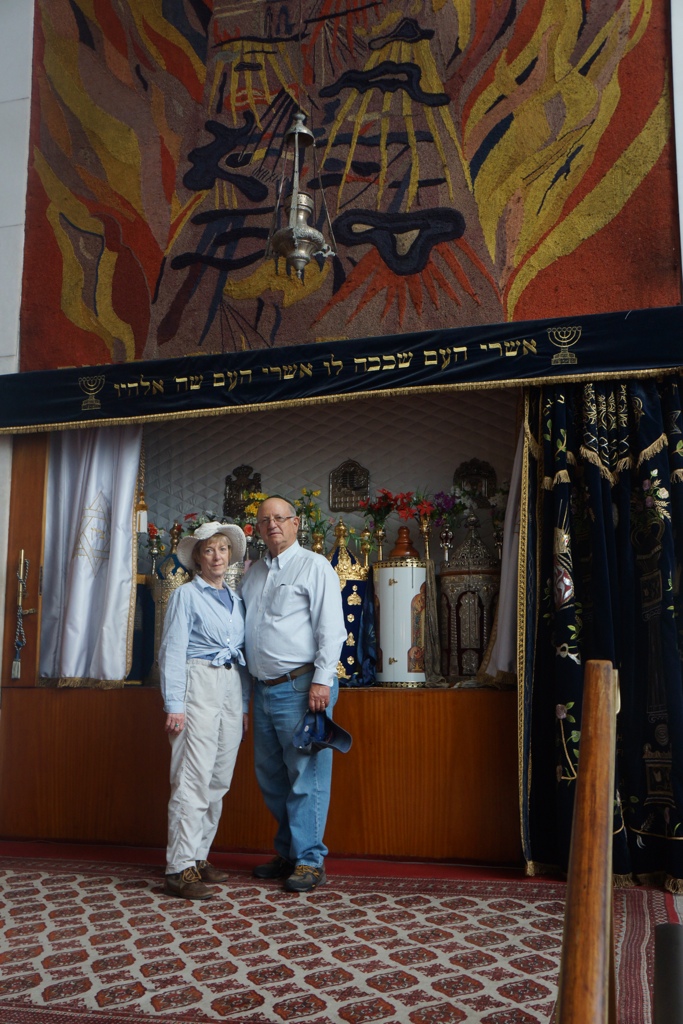
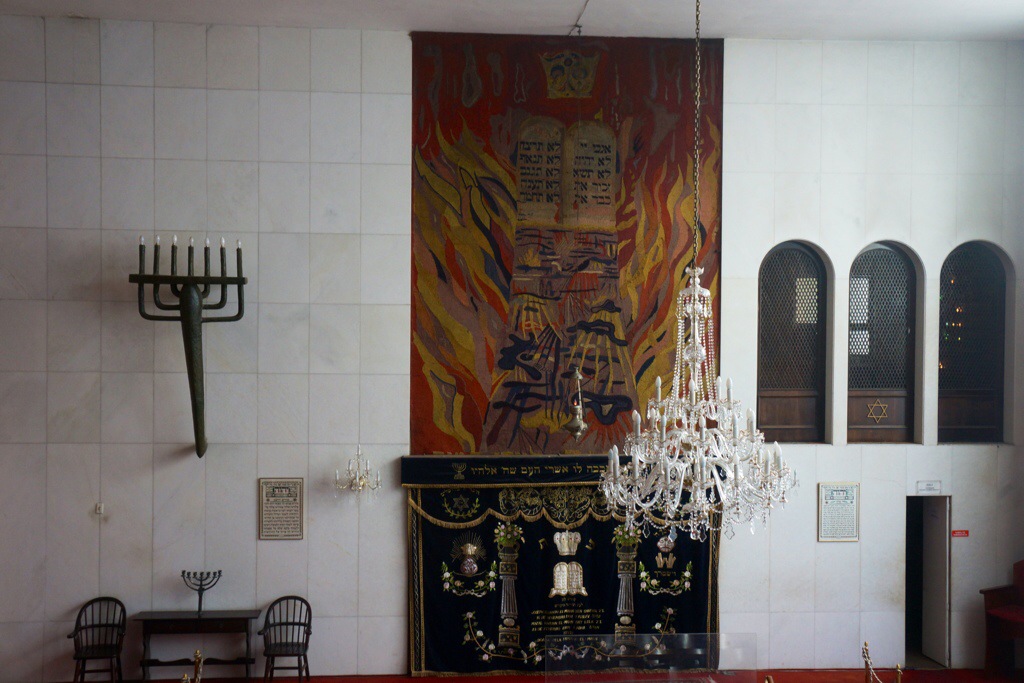
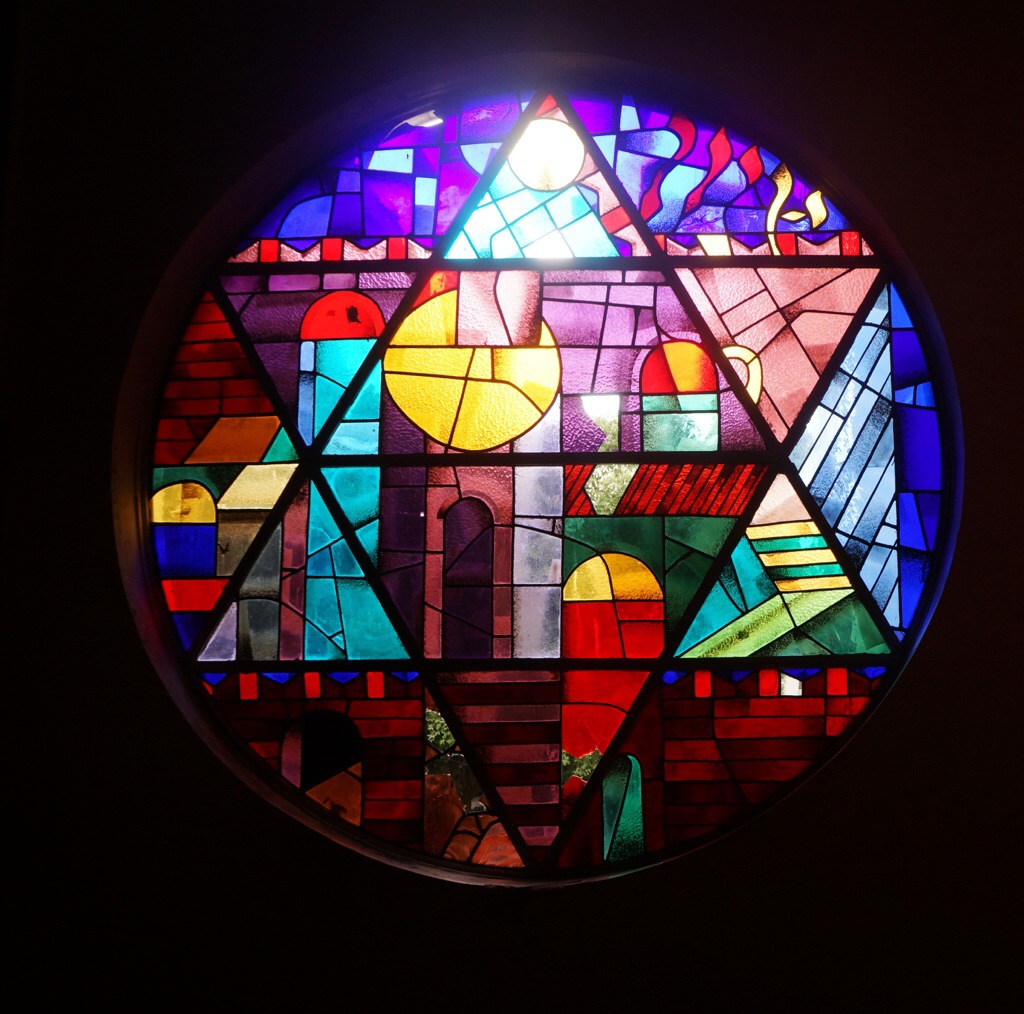
Taxi to Santa Teresa and walk around, visit a few galleries, stop for beer at well-known local bar, across from murals visible aside reflections of the bar in a mirror, where we meet a young lady who has spent a year and a half in Brazil doing various and sundry things and is heading home tomorrow. At a shop, Carol buys a nice platter. But she’s not intending to use it as a platter, but as a seat to replace the one she left in Salvador.
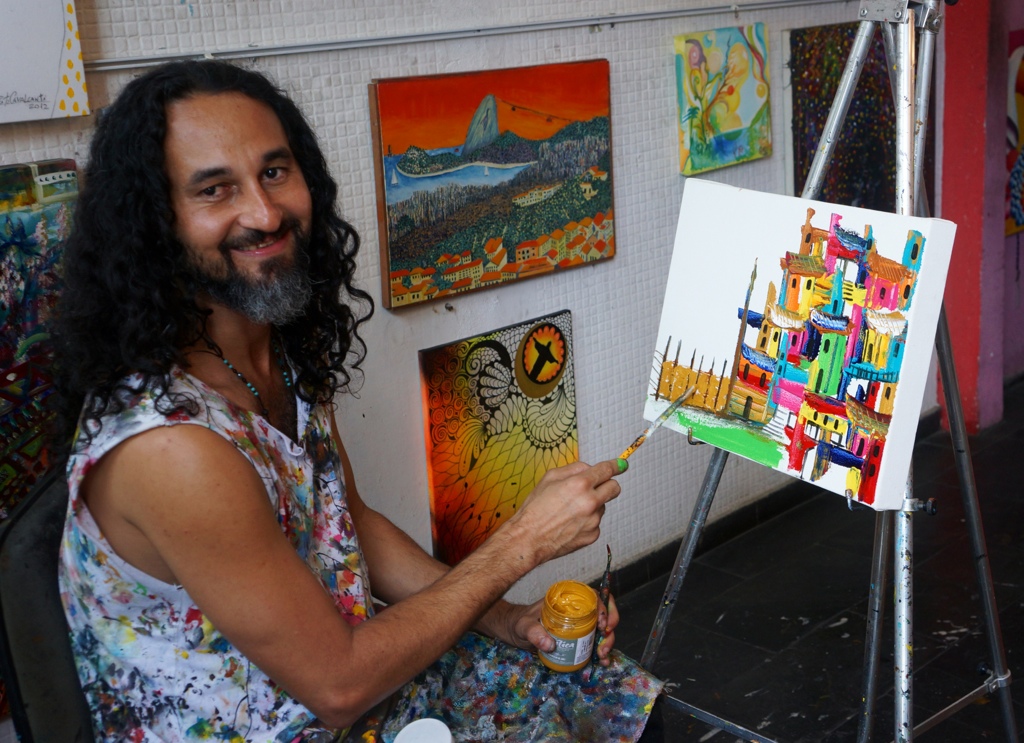 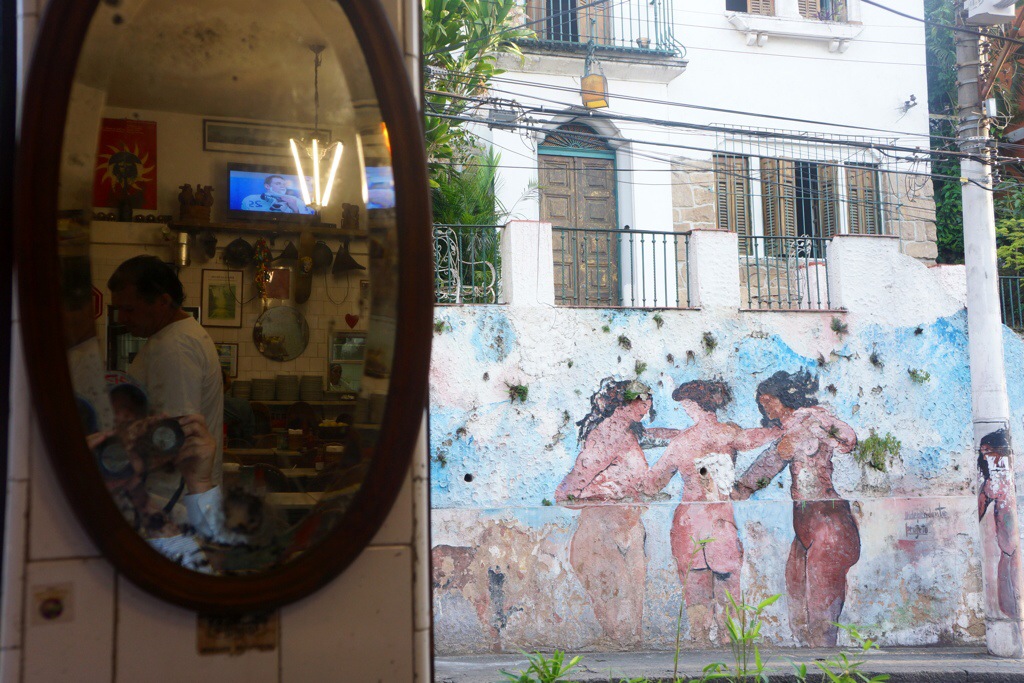
Back to our hotel to shower and rest/blog before heading down for a very good and leisurely dinner at Bistro Villarino, a restaurant near the opera house at which we stopped in to make a reservation earlier today. We then round the corner to the opera house where we see an absolutely fabulous modern dance company called Batsheva, which is based in Tel Aviv and somehow affiliated with Martha Graham. Make sure to keep an eye out for them, and, if you see they’re on, don’t miss them. Carol said that if they were doing the same program tomorrow (they’re not), she’d go see it again, and so would I. Back to the hotel to turn in.
|
|






























































































